Day 71 - The Usuki Stone Buddha Statues, The Kyushu 108 Temple Pilgrimage, Japan
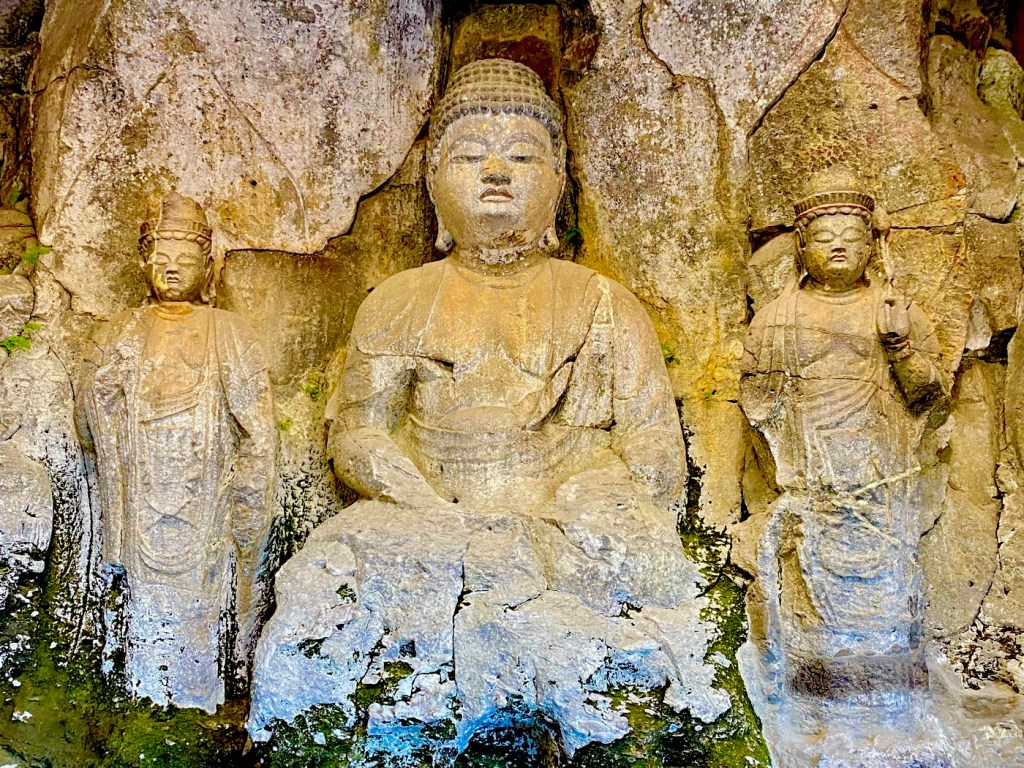
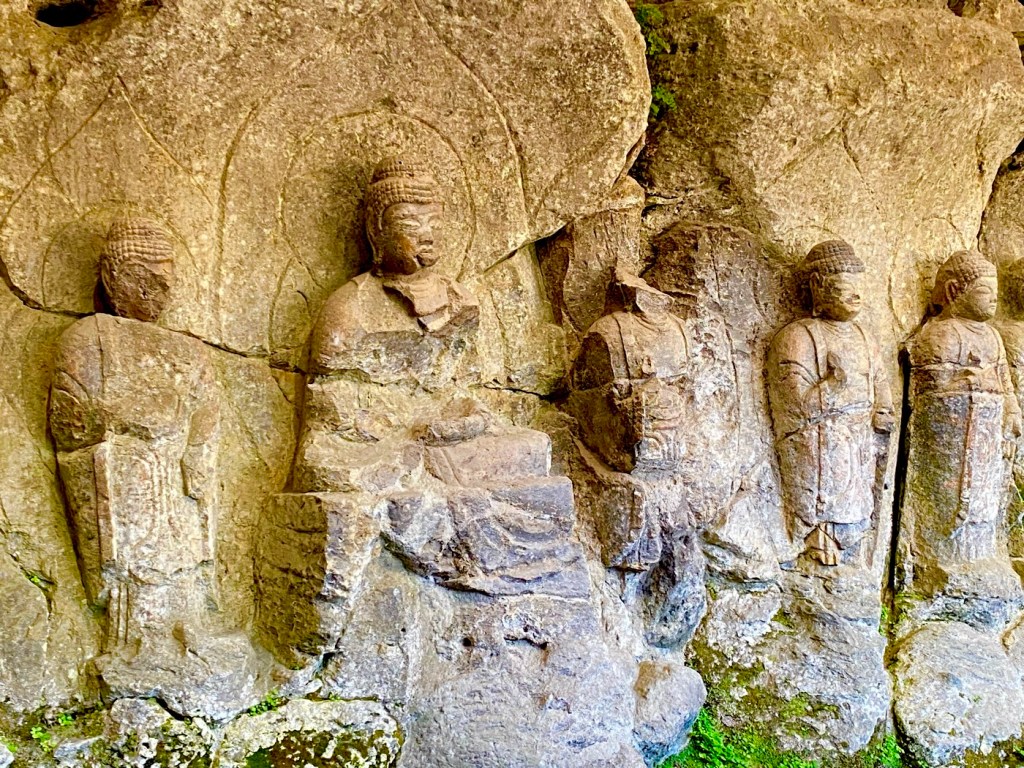
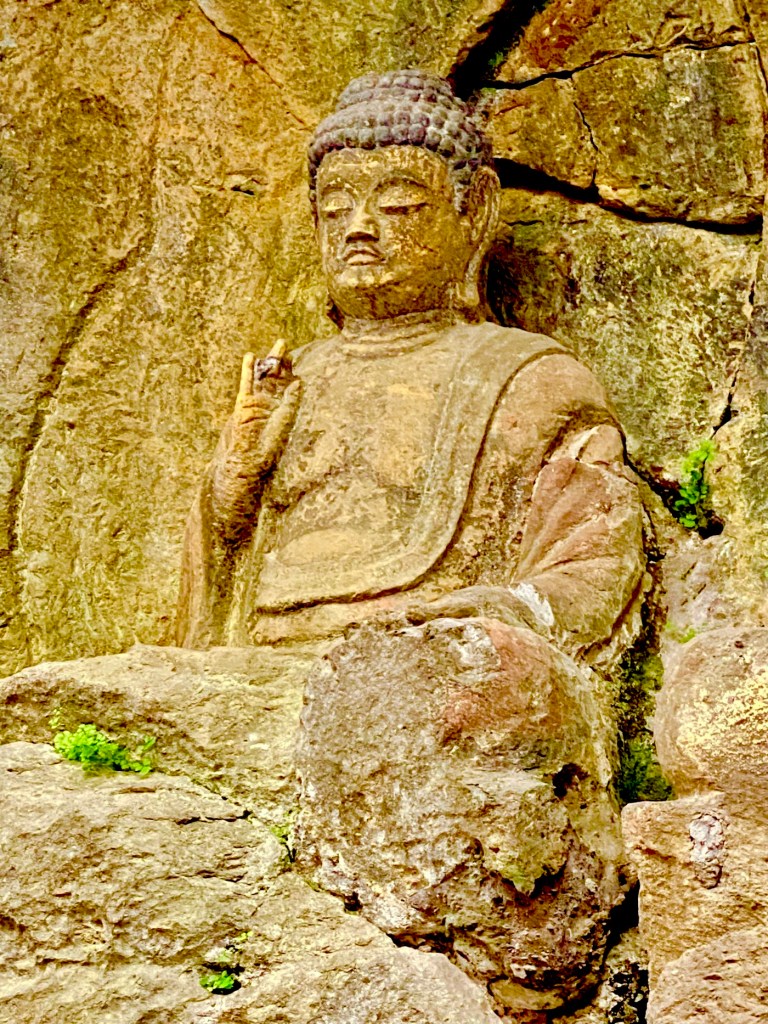
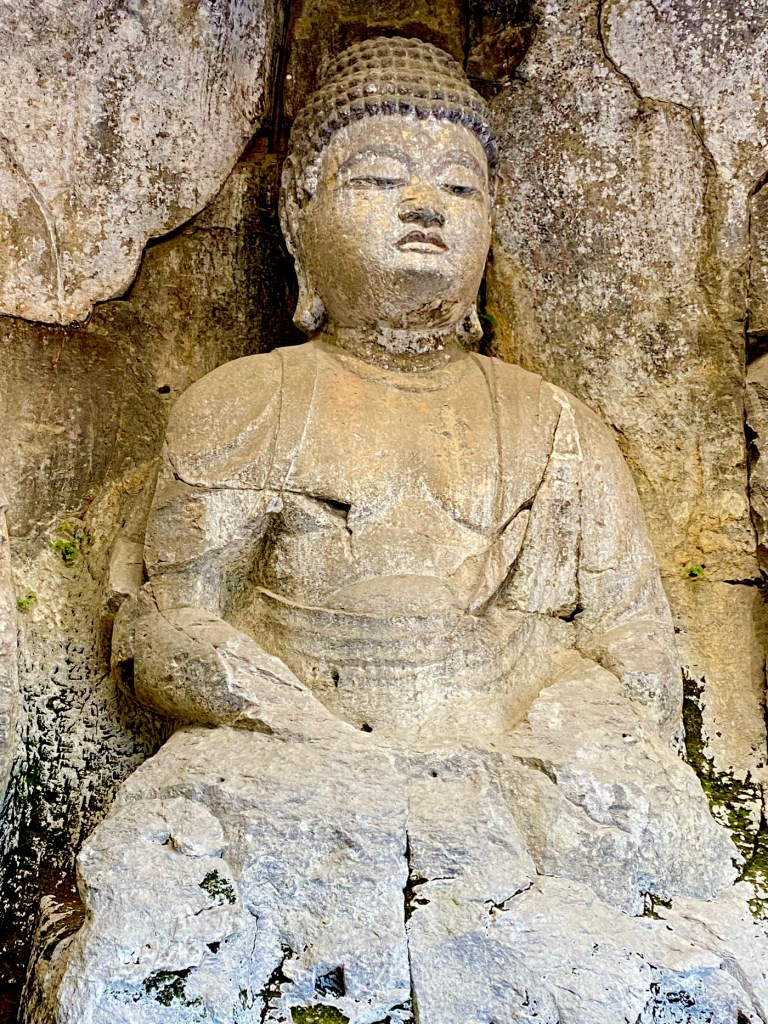
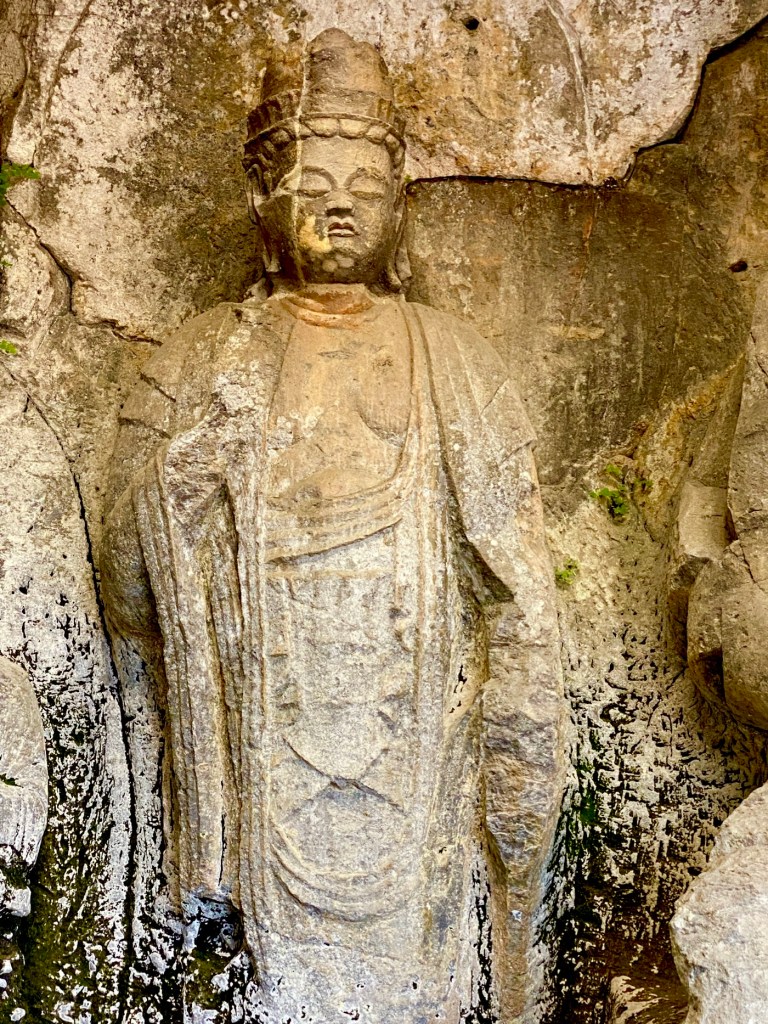
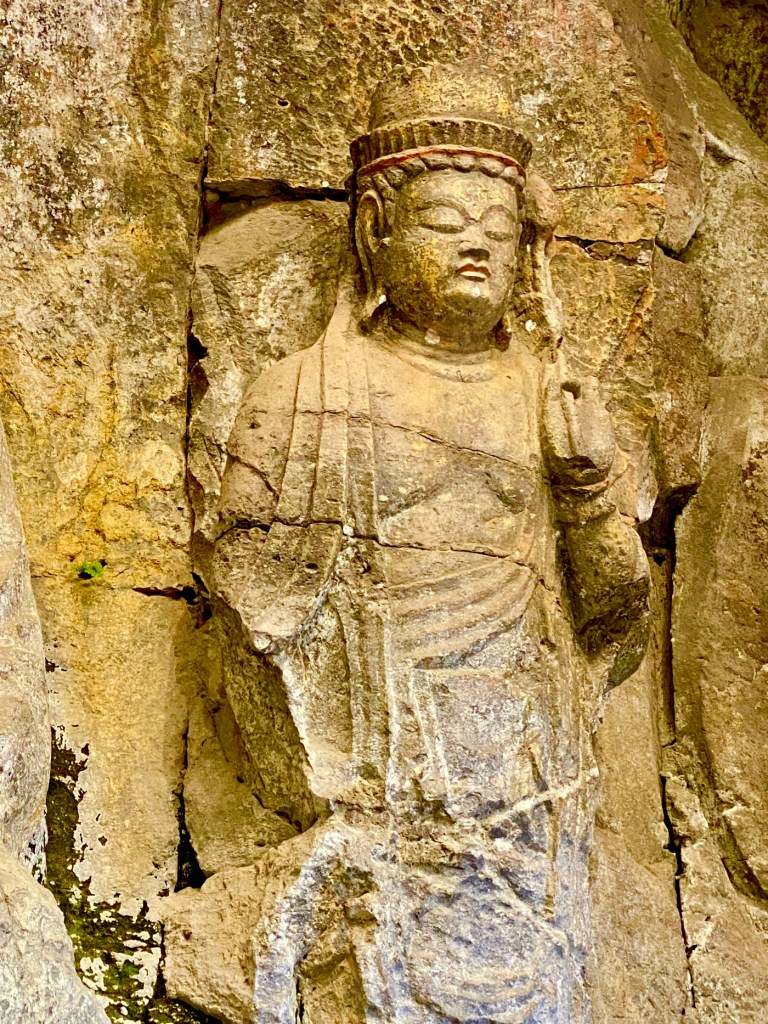
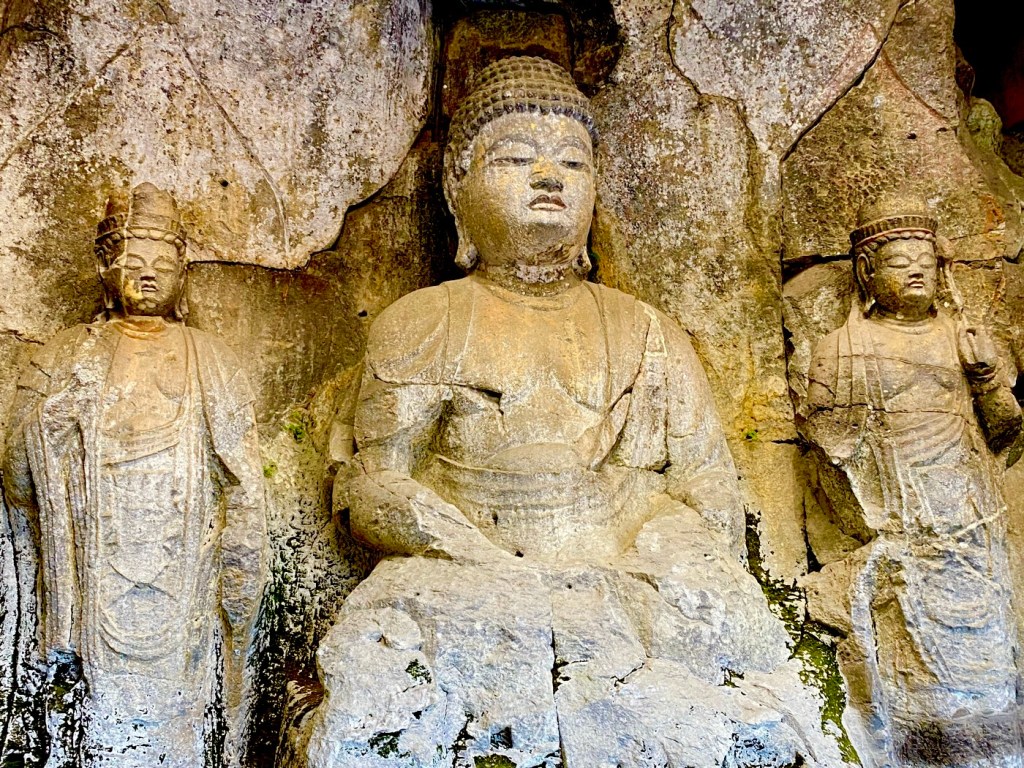
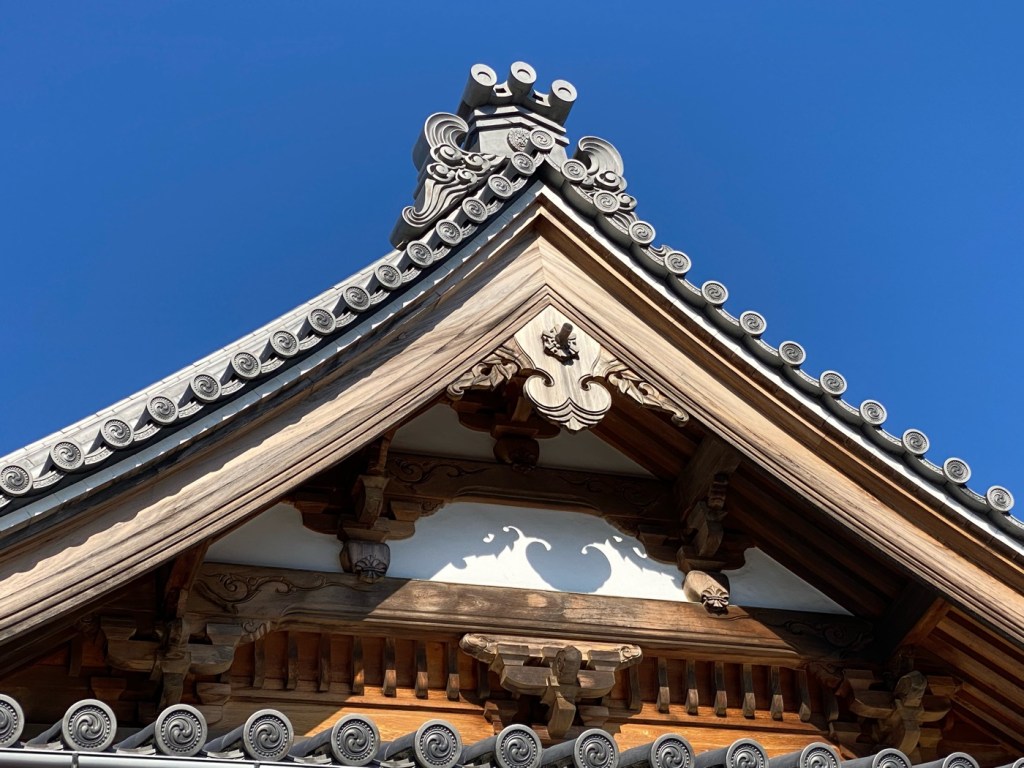
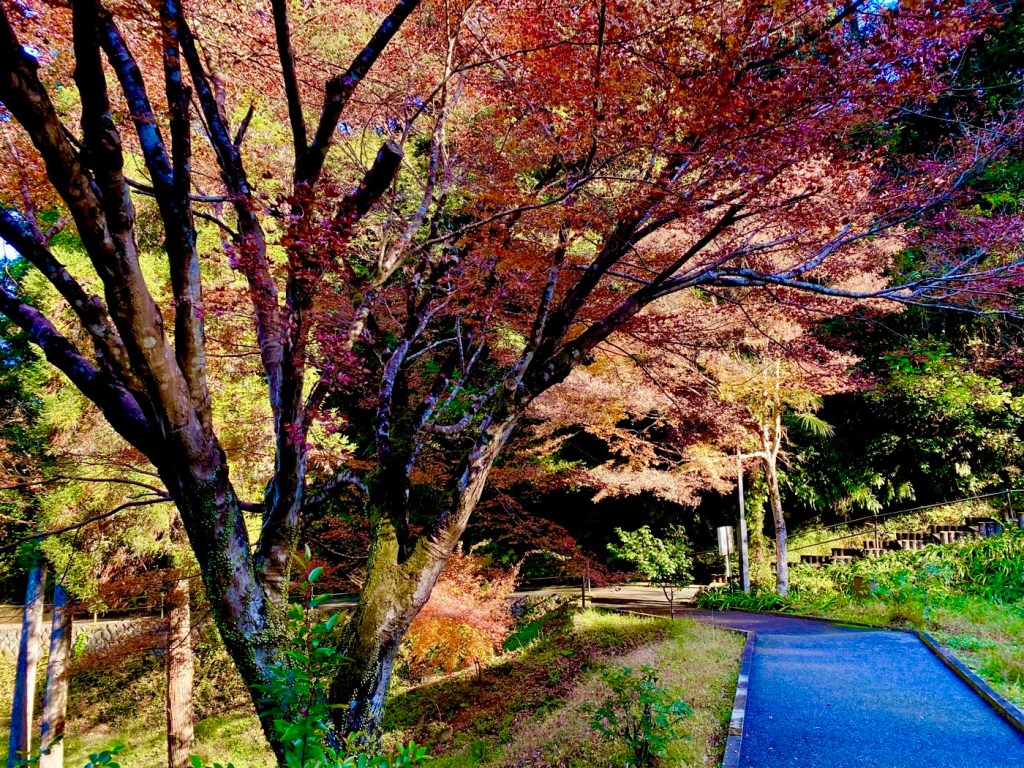
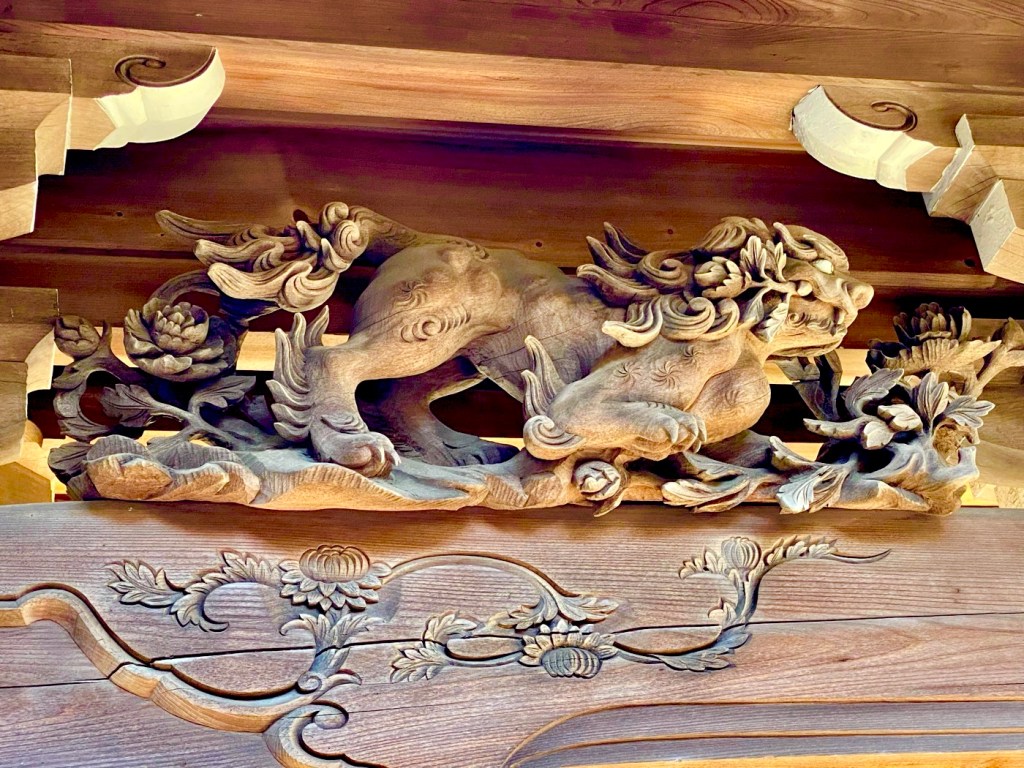
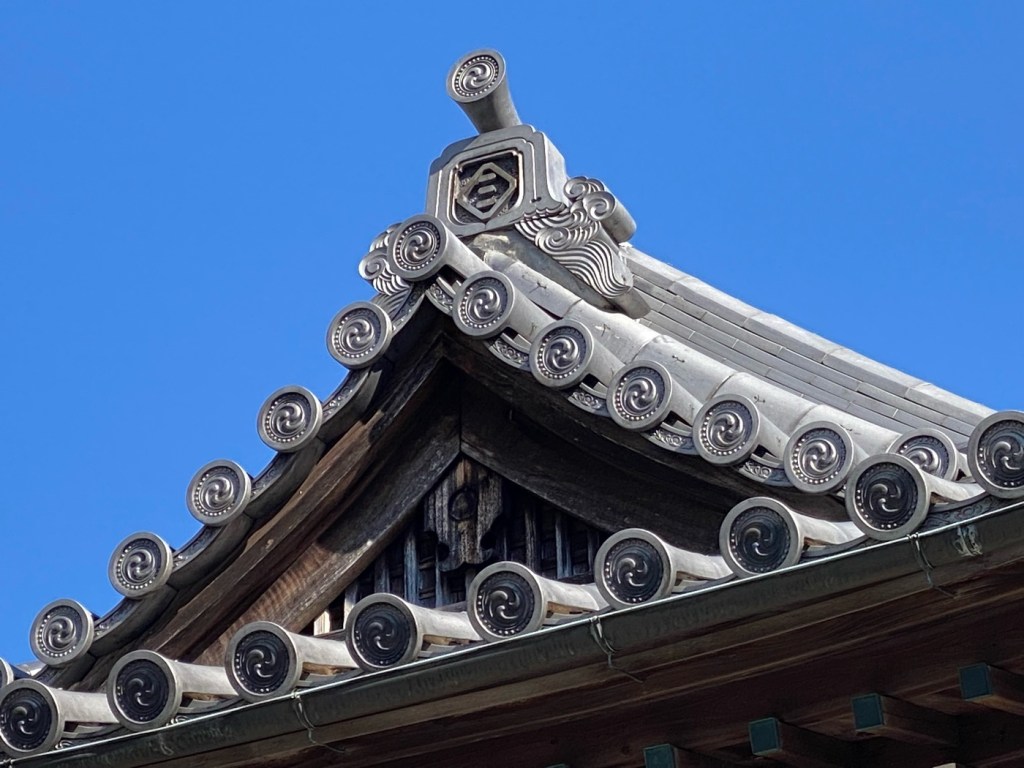

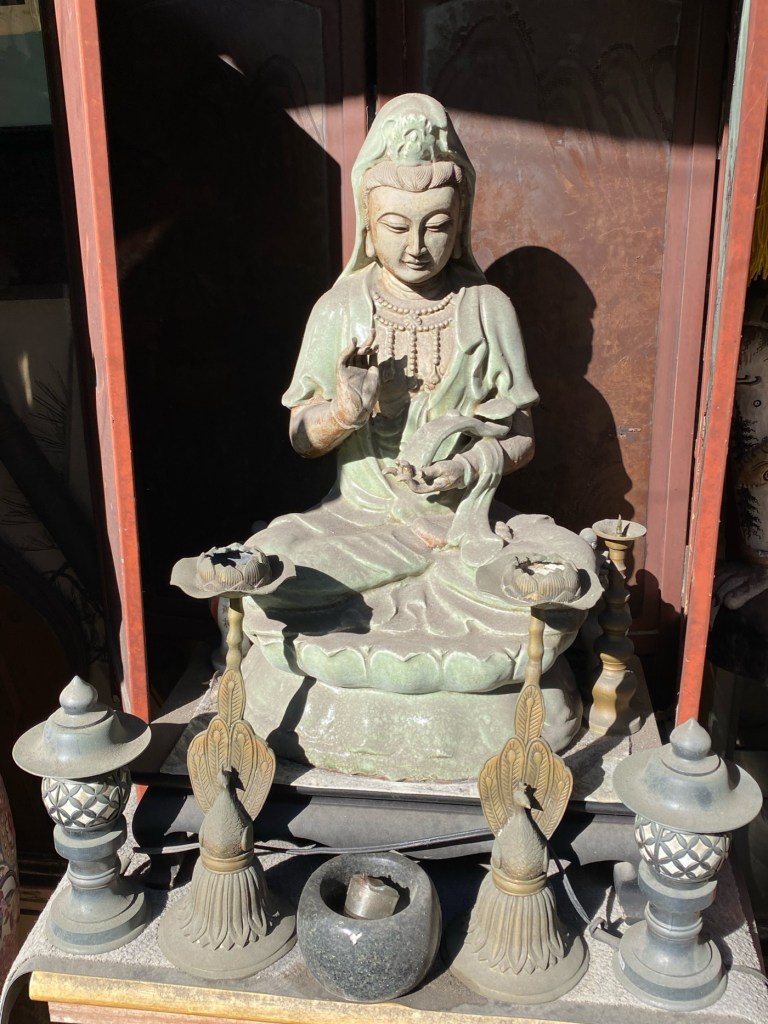
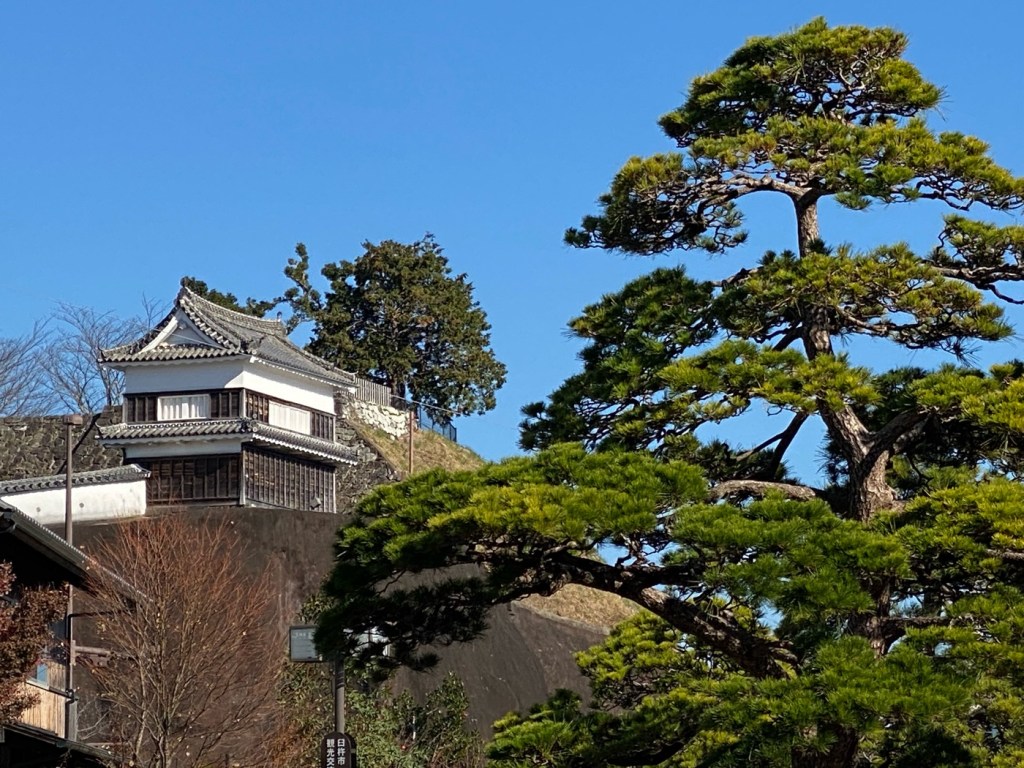
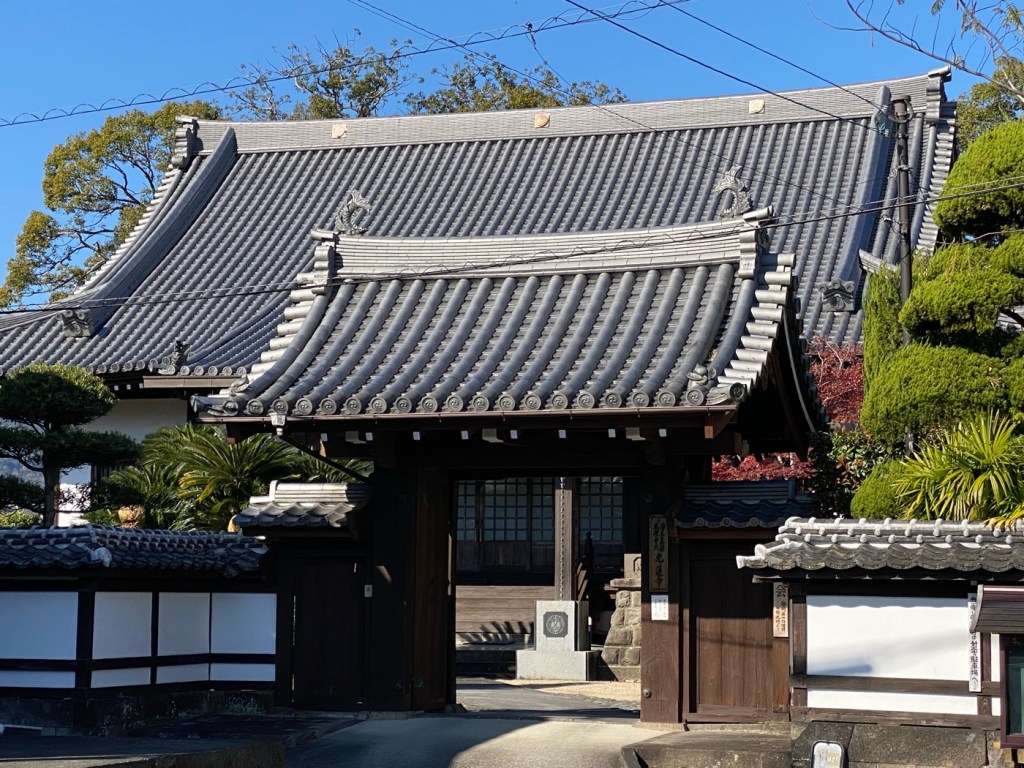
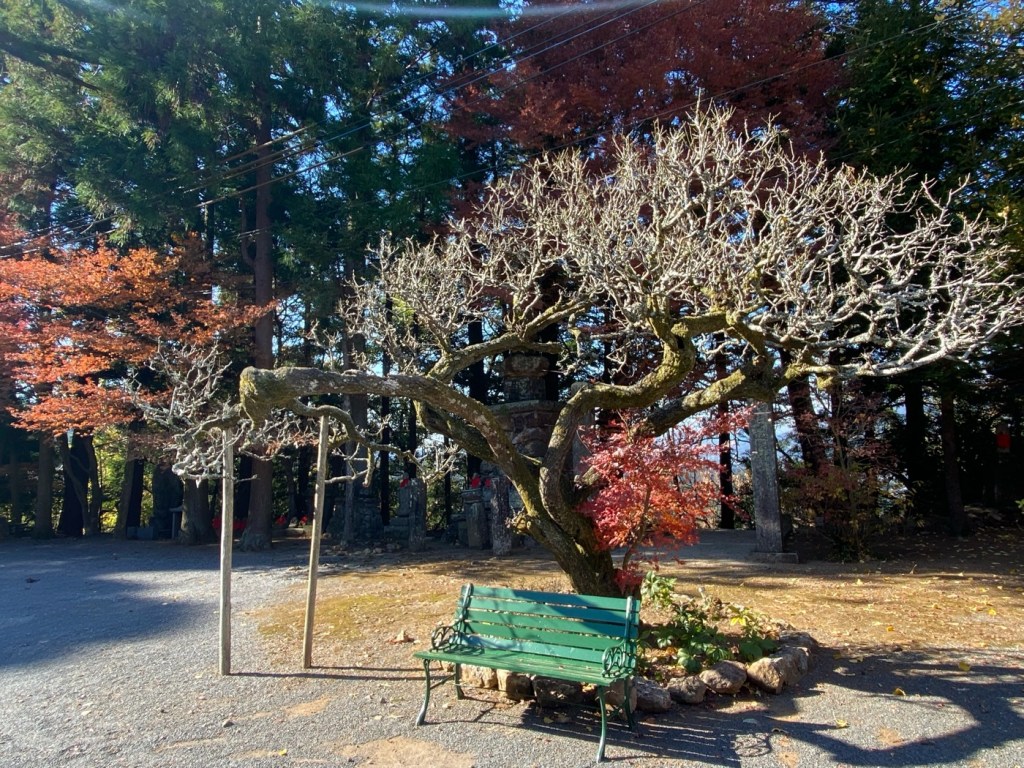
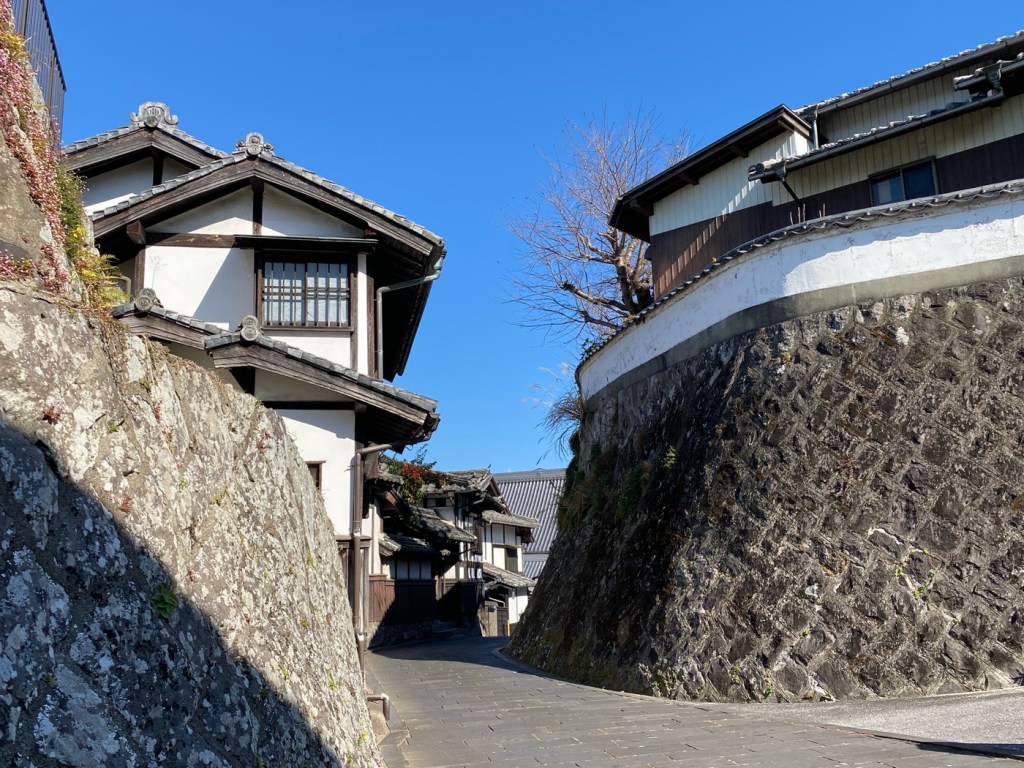
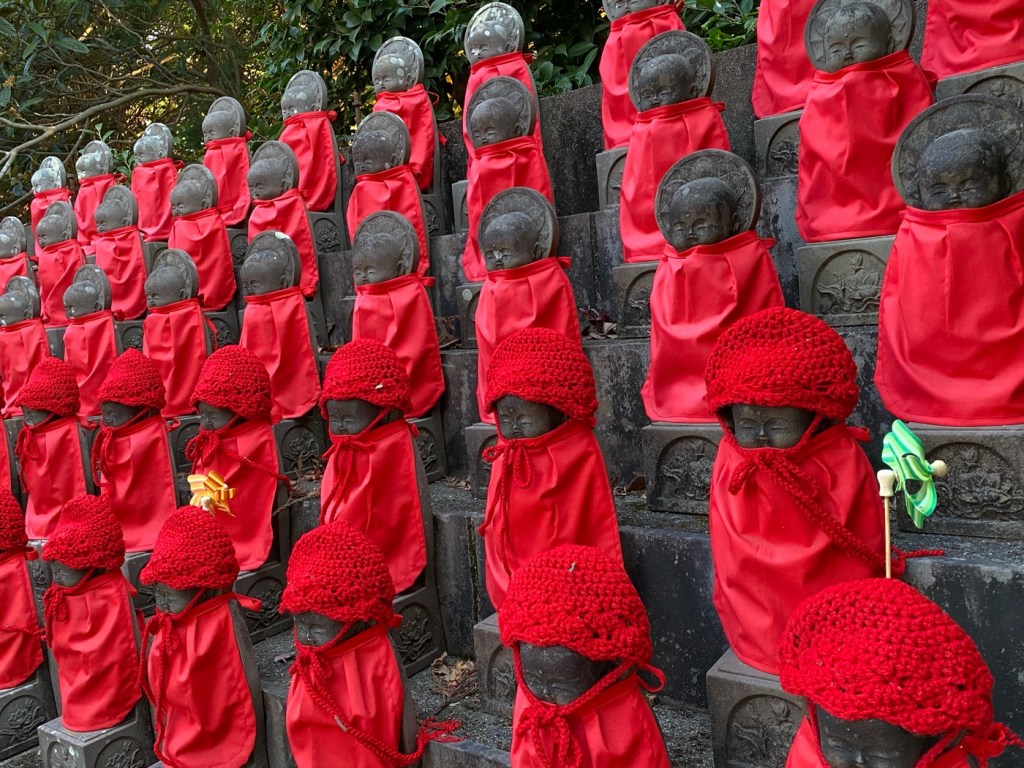
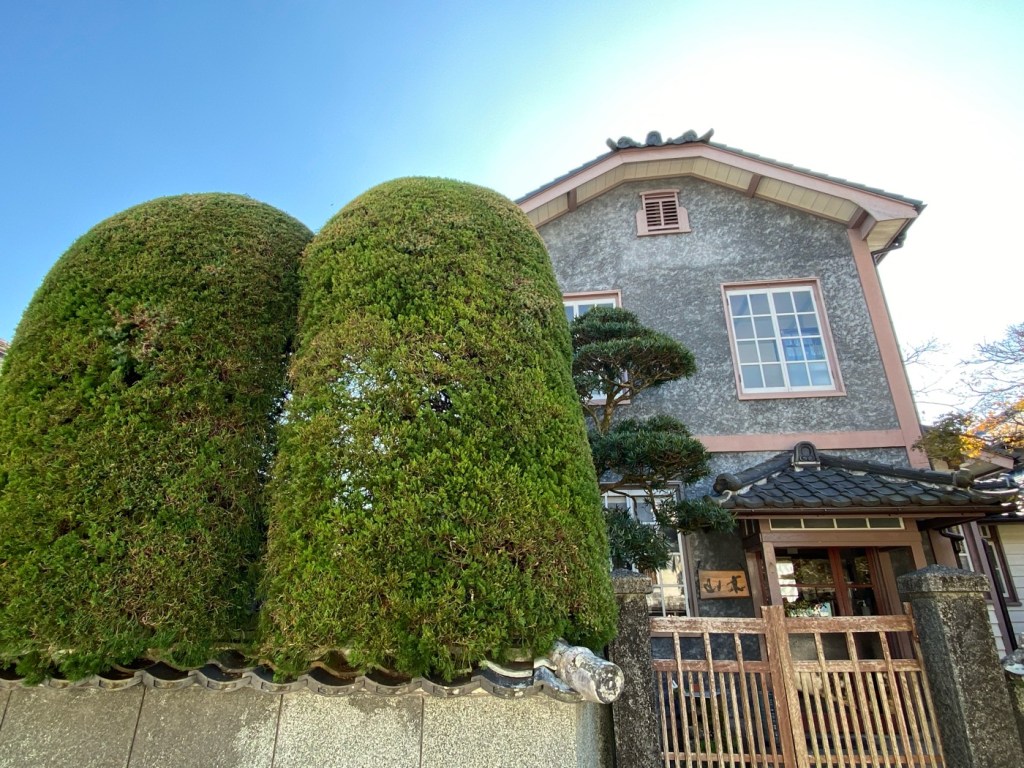
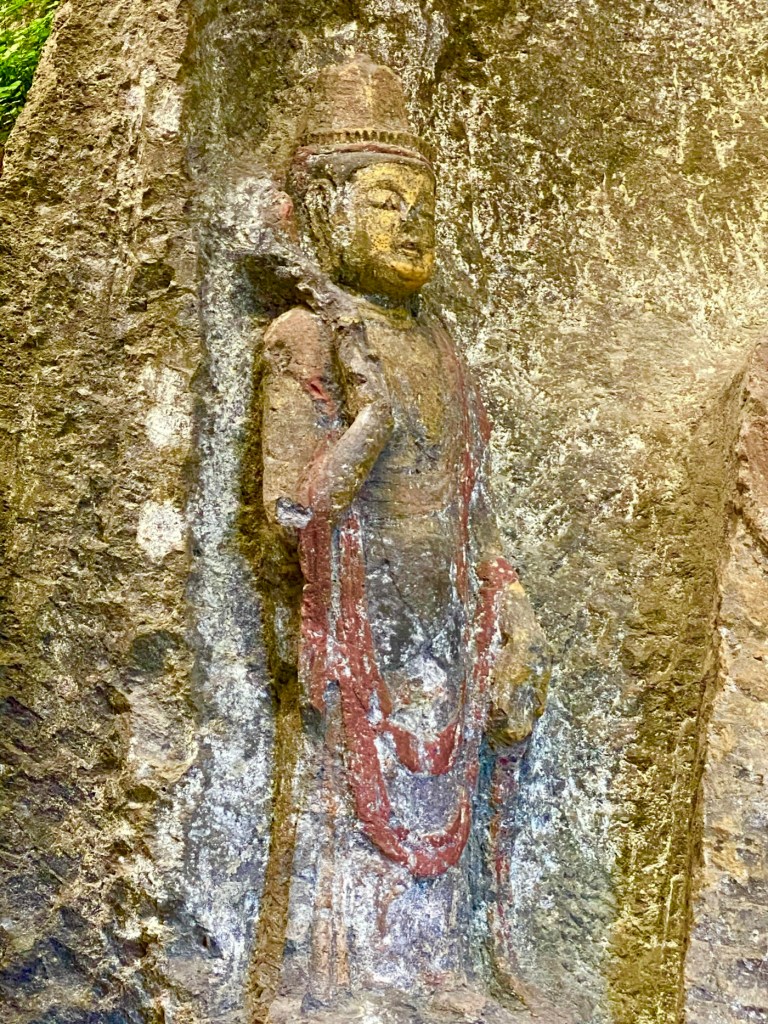
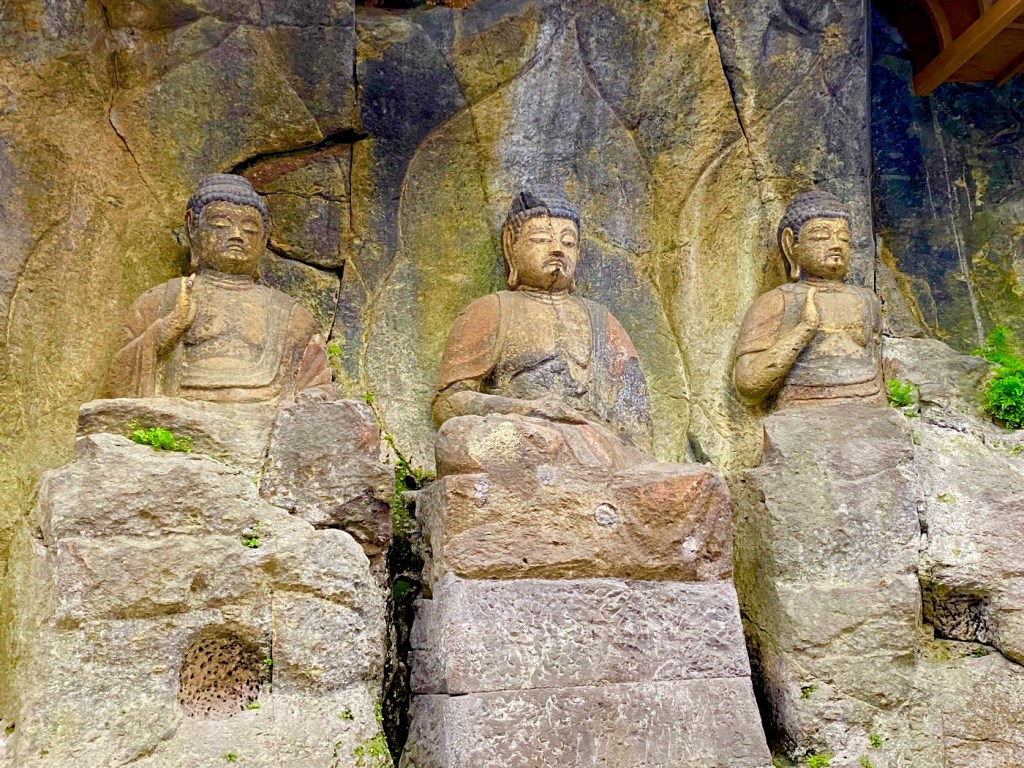
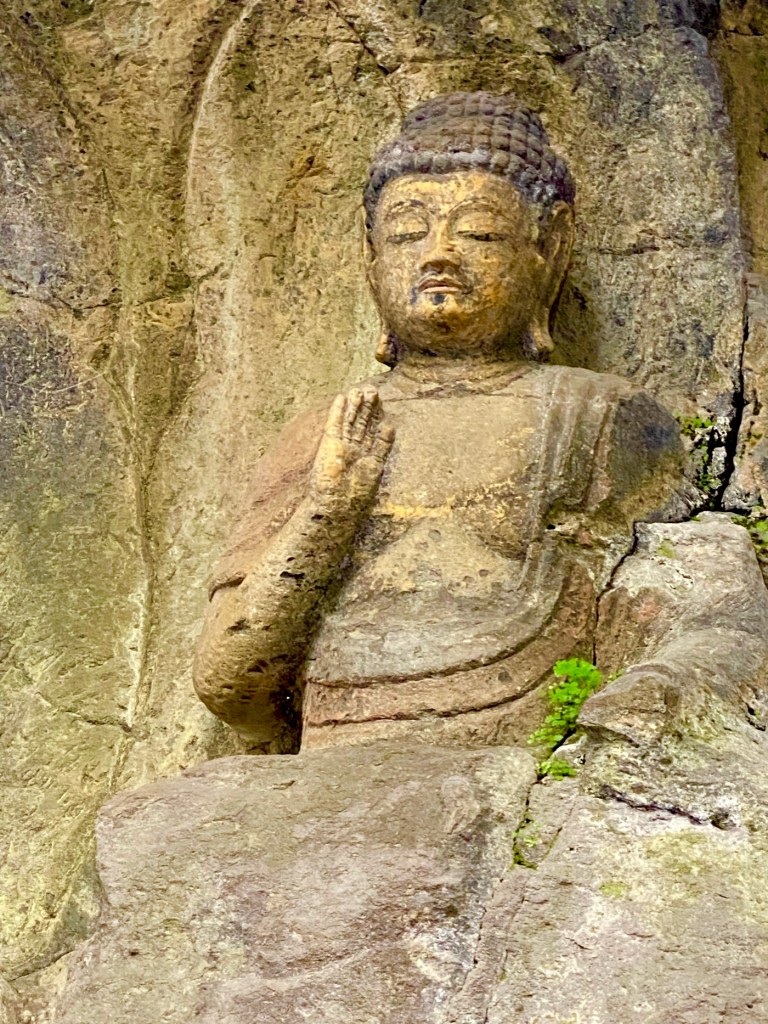
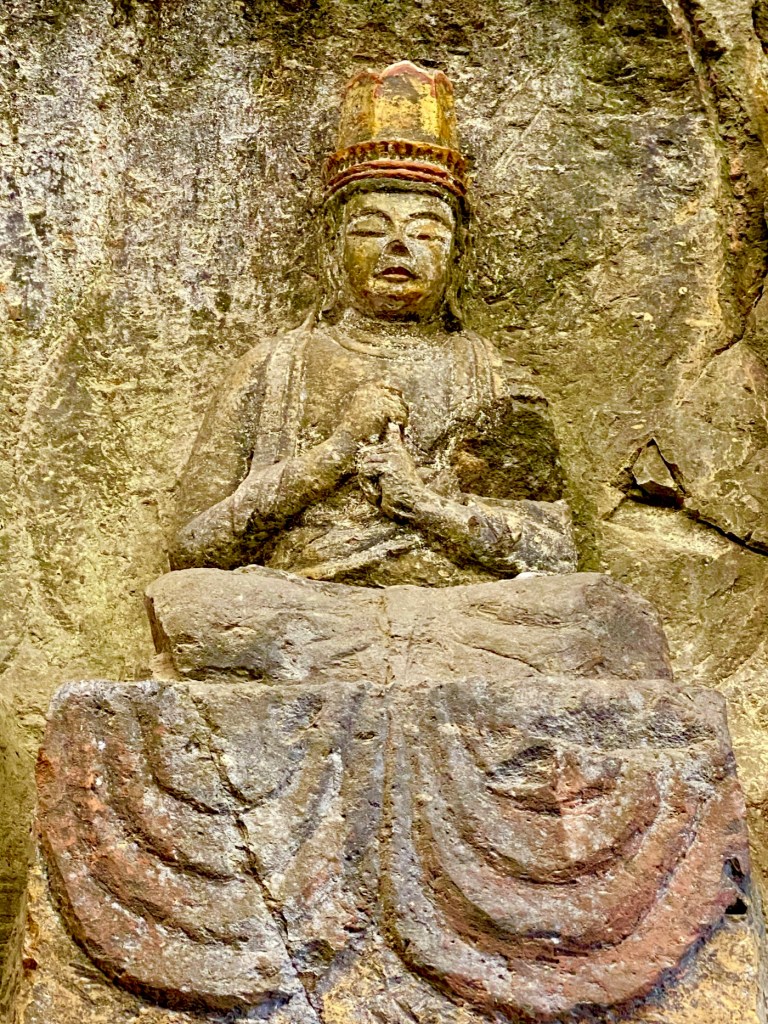
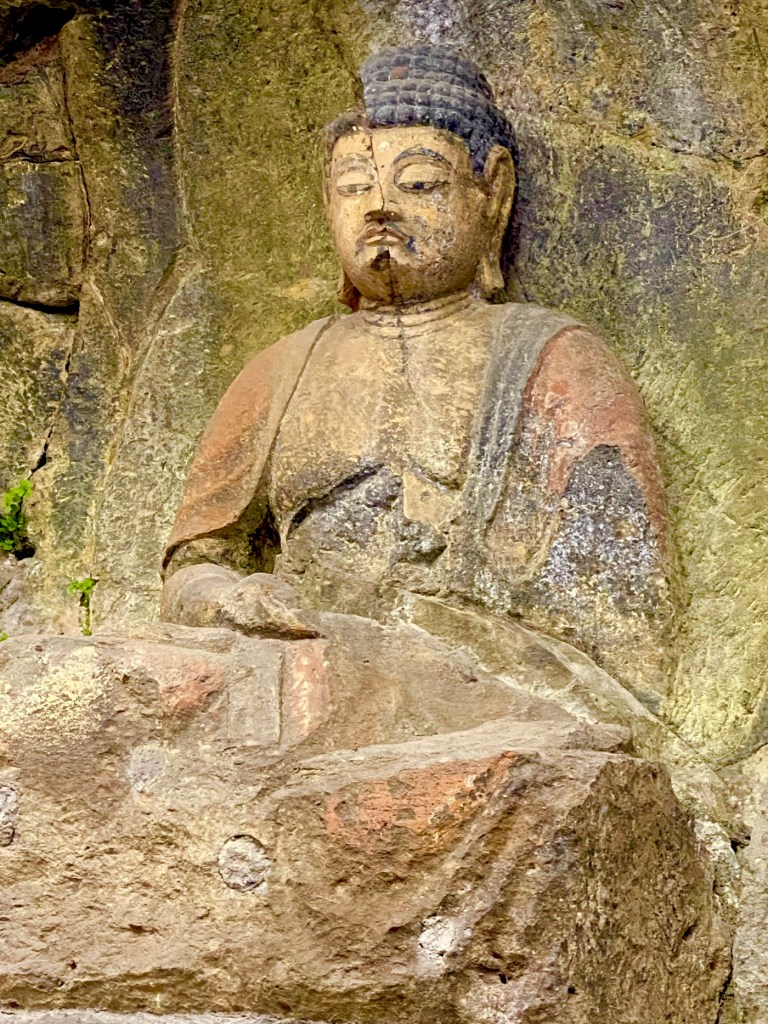
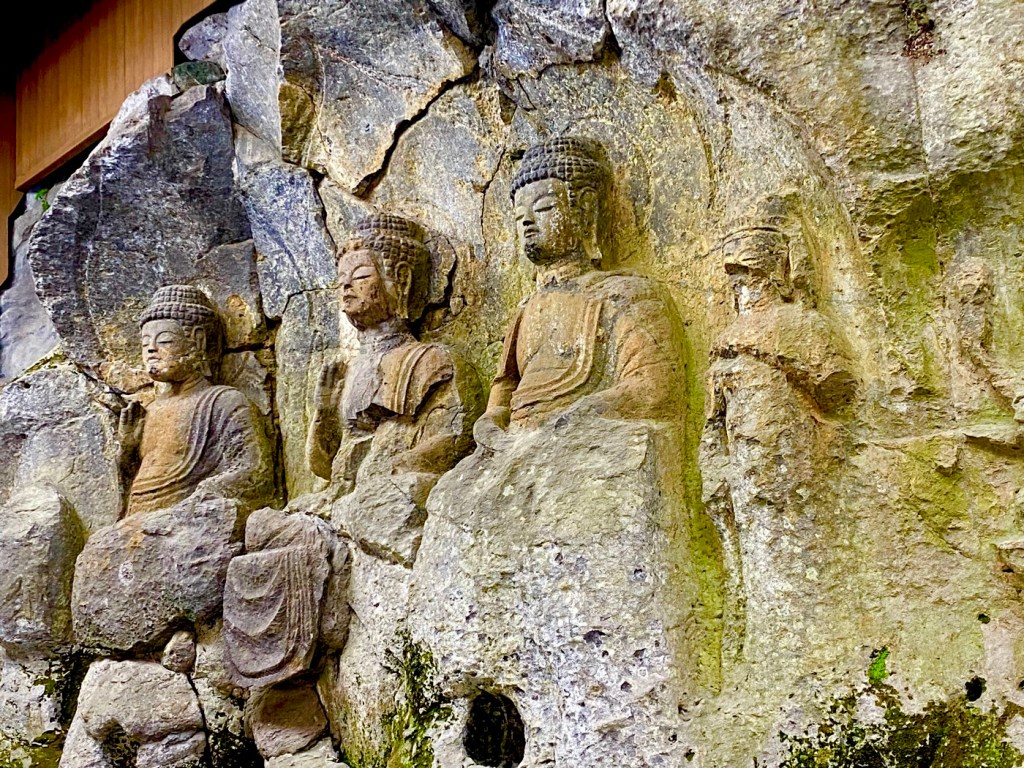
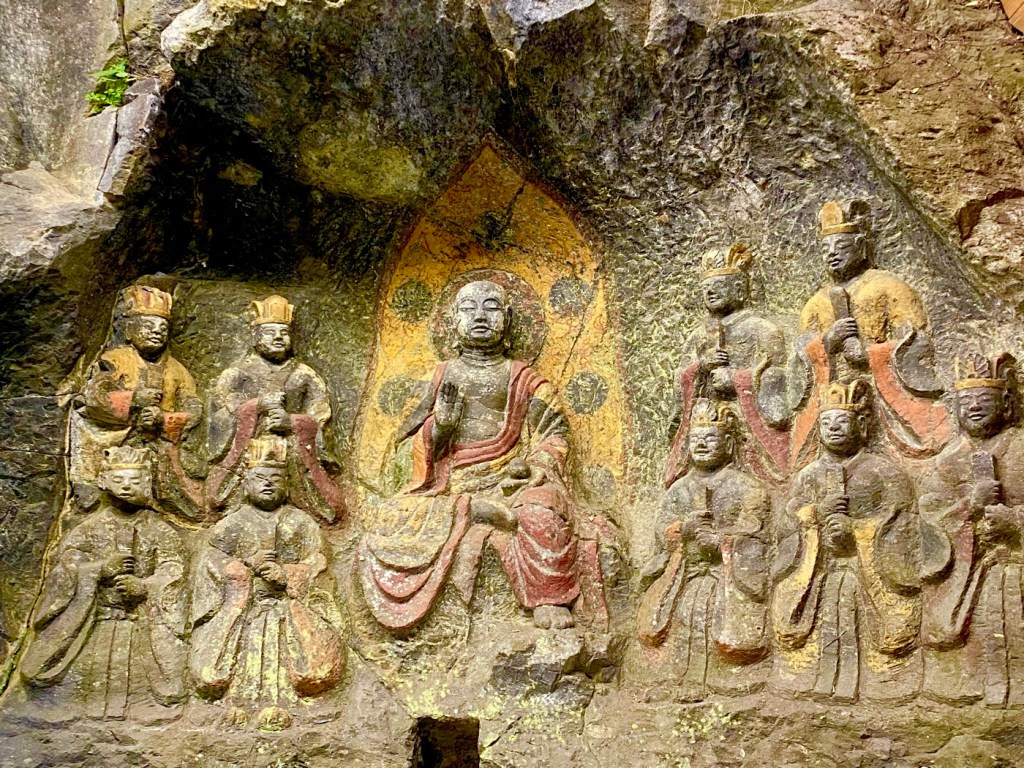
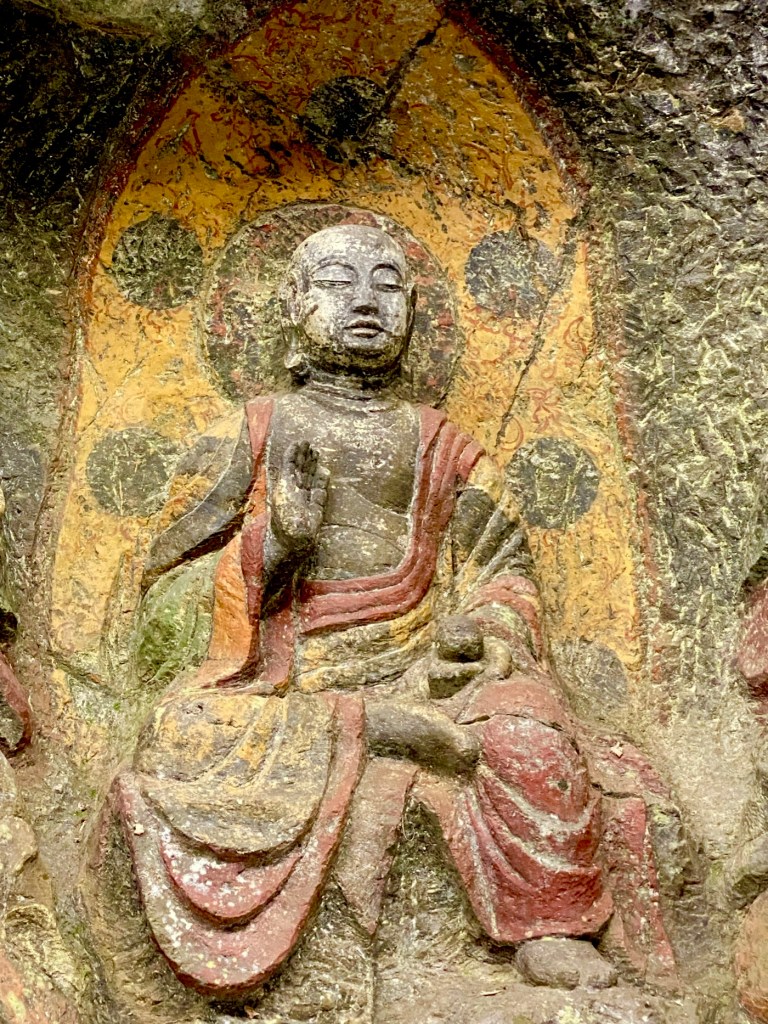

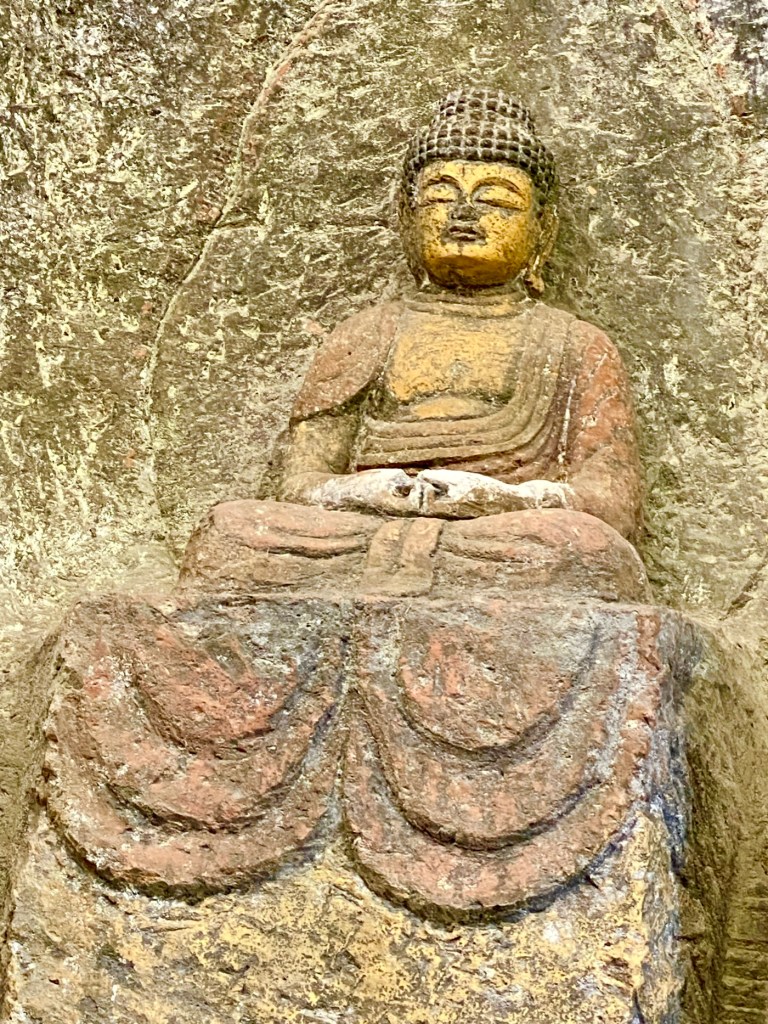
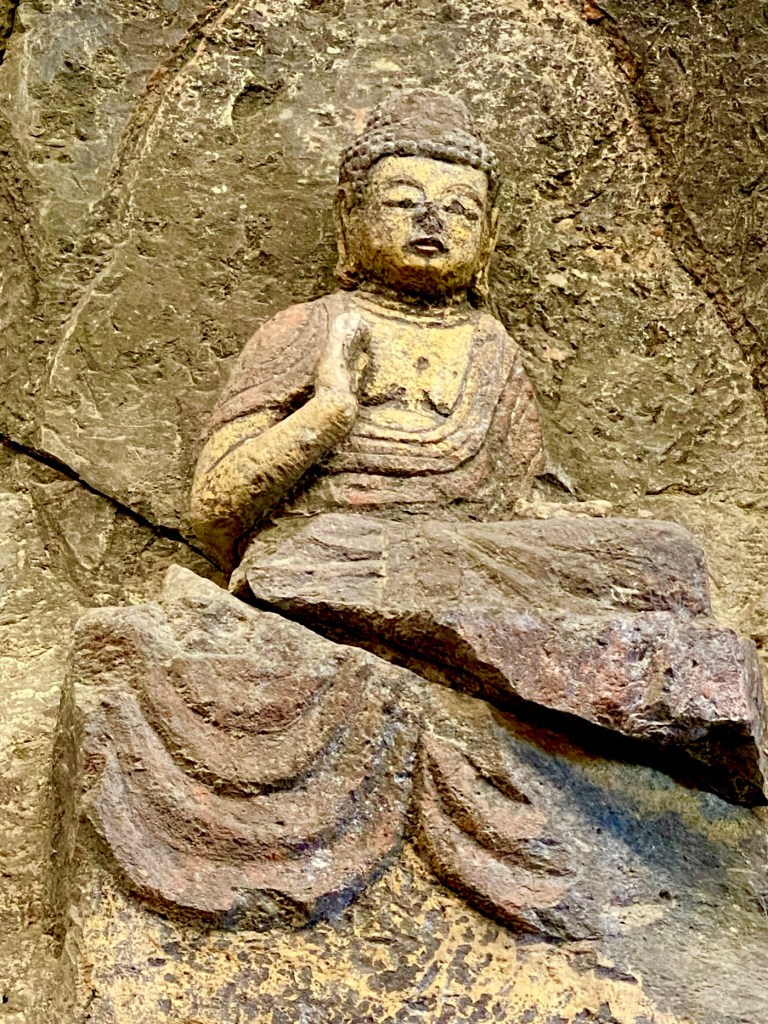

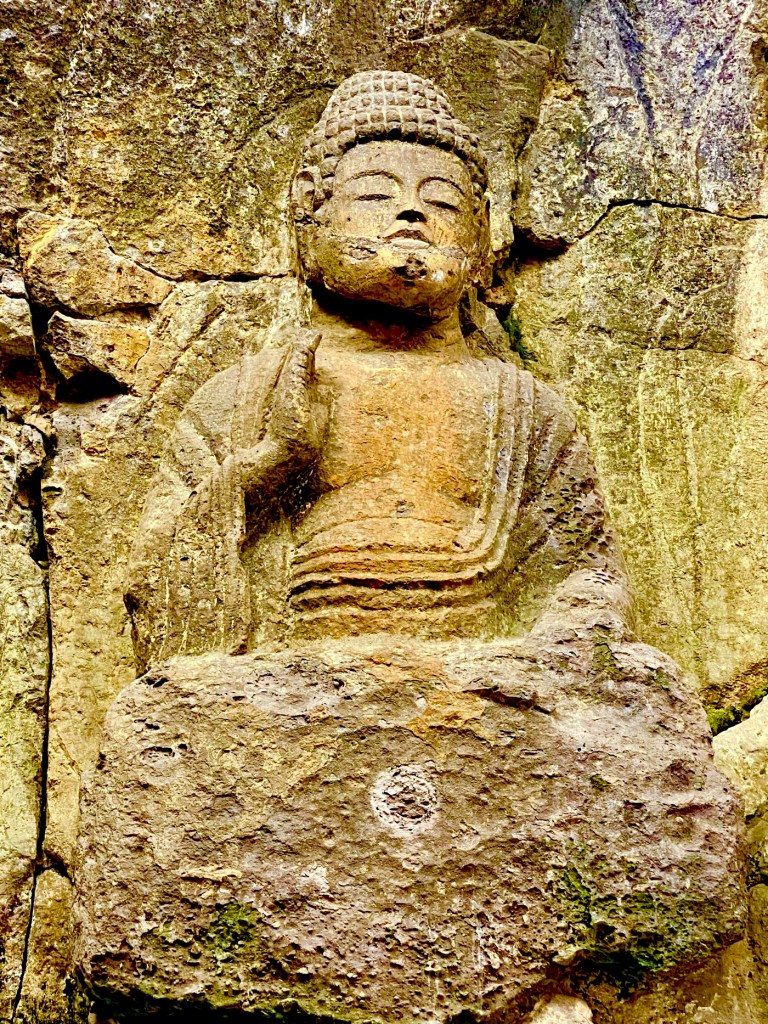
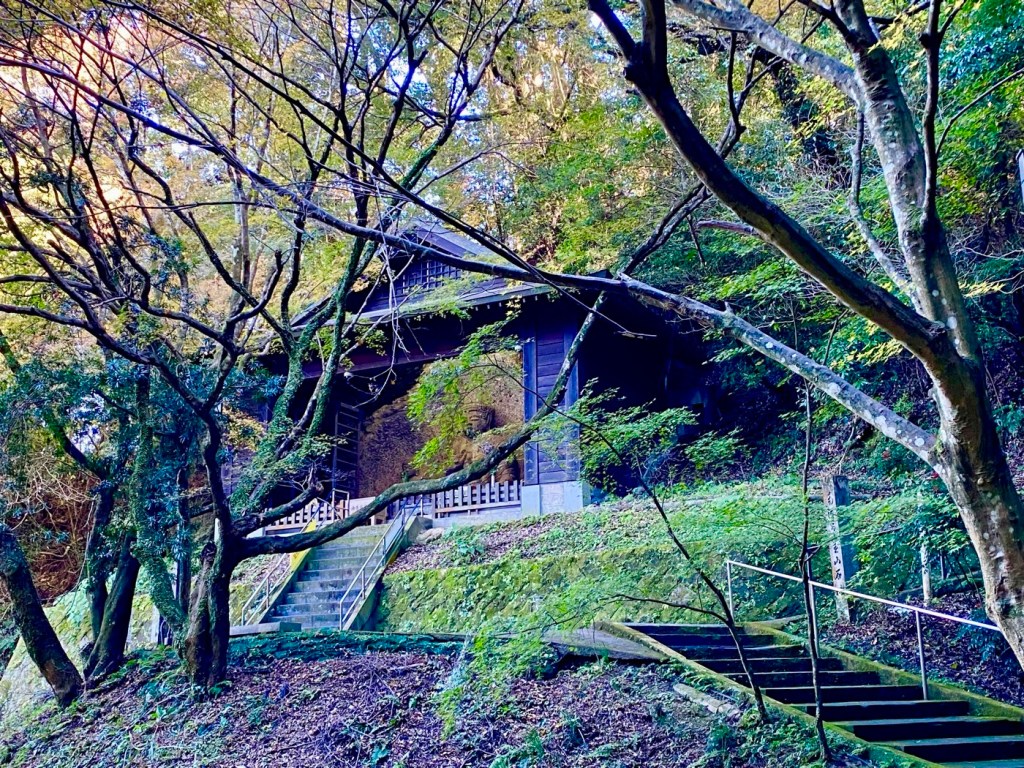
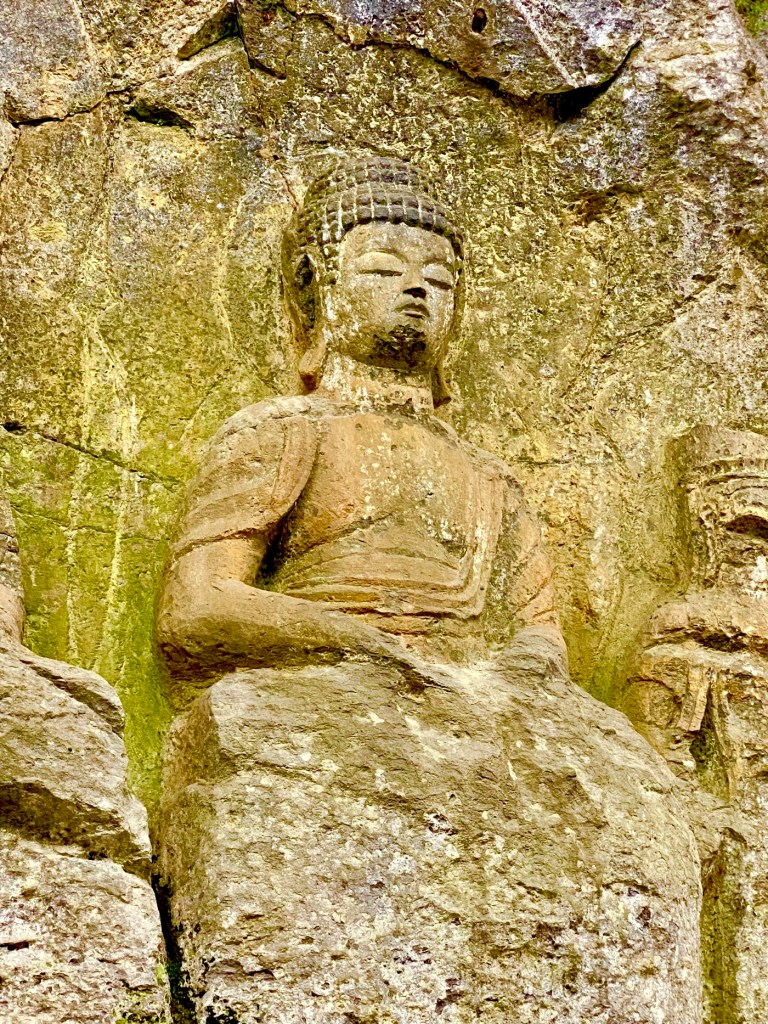
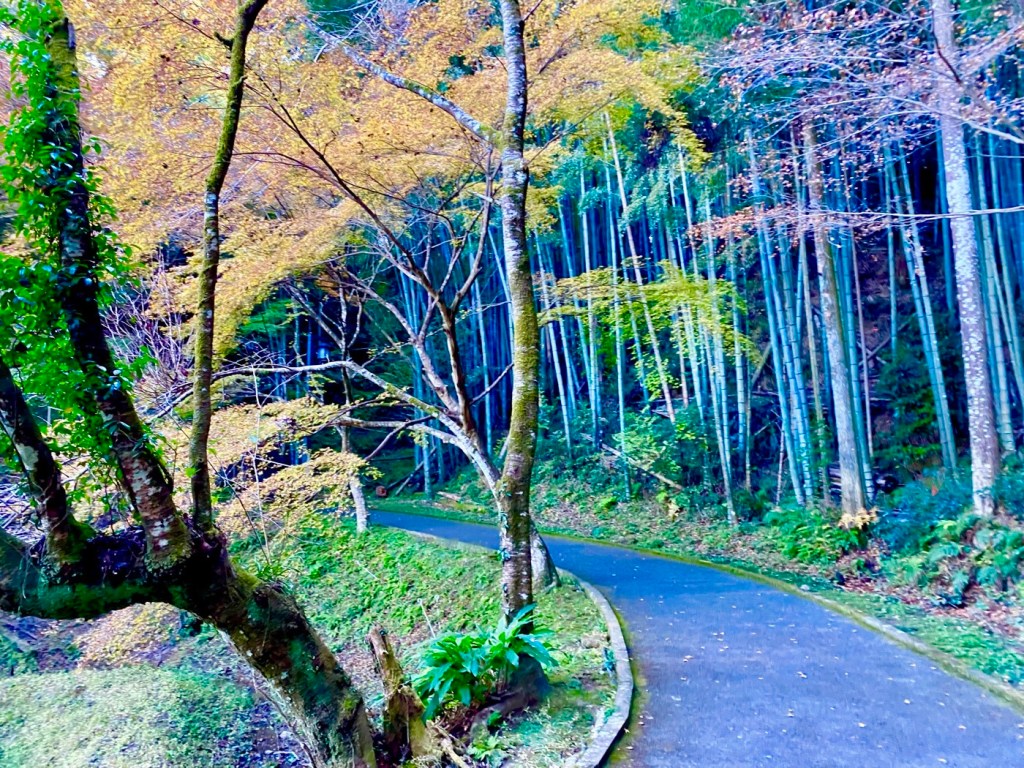
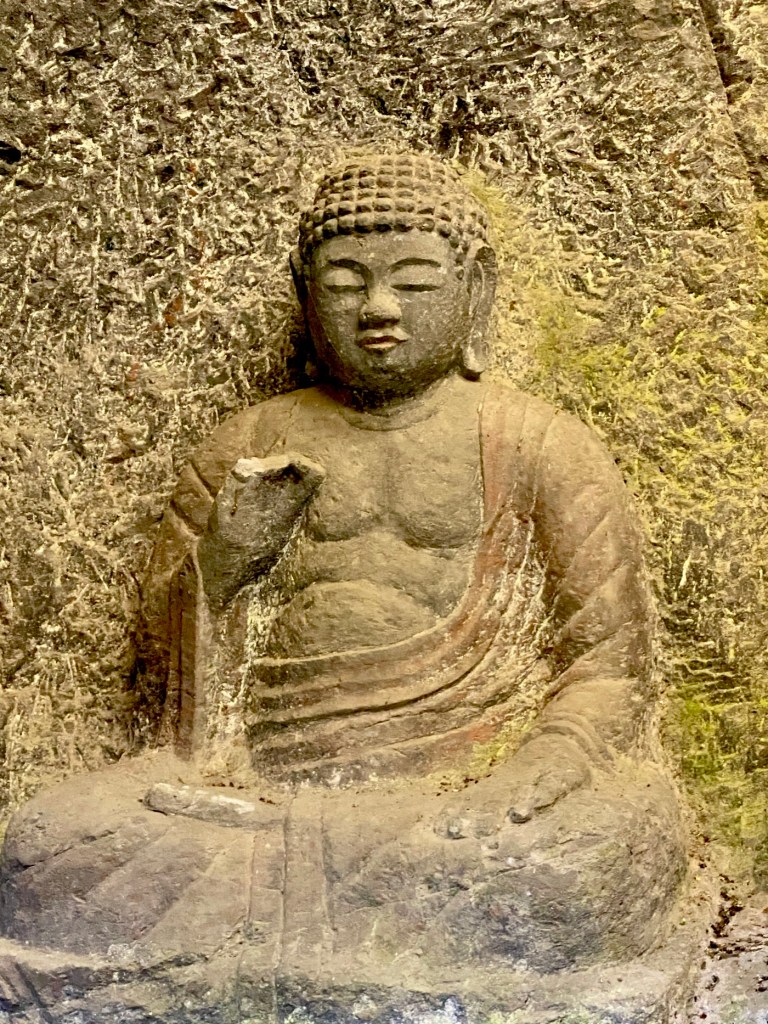
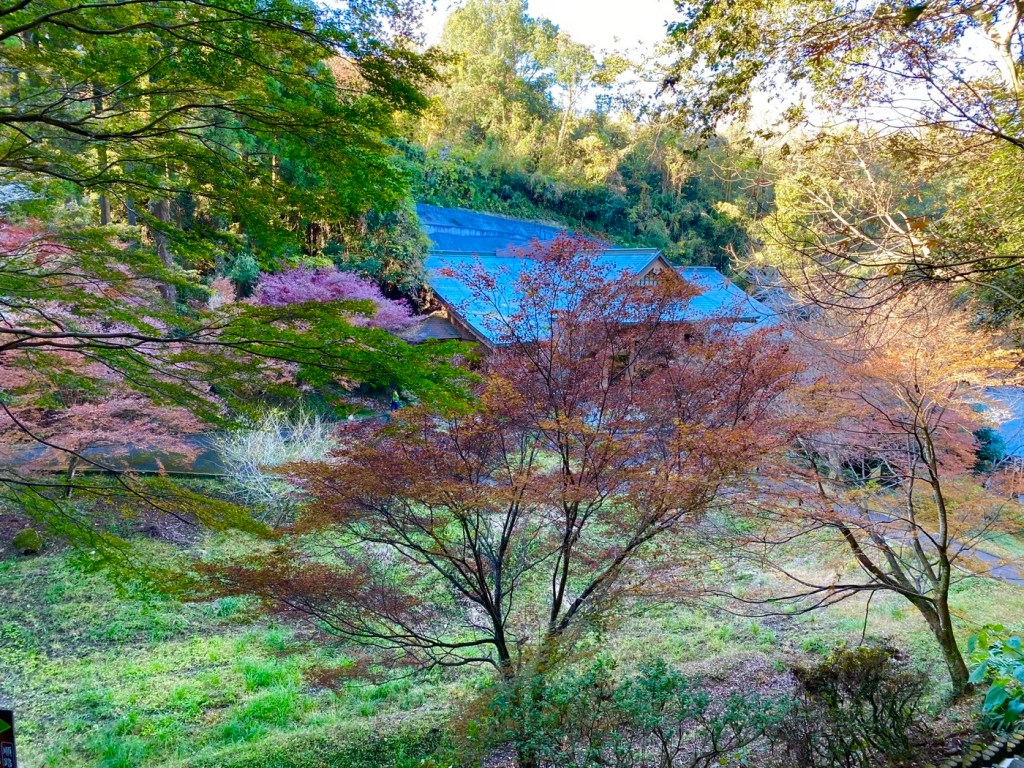
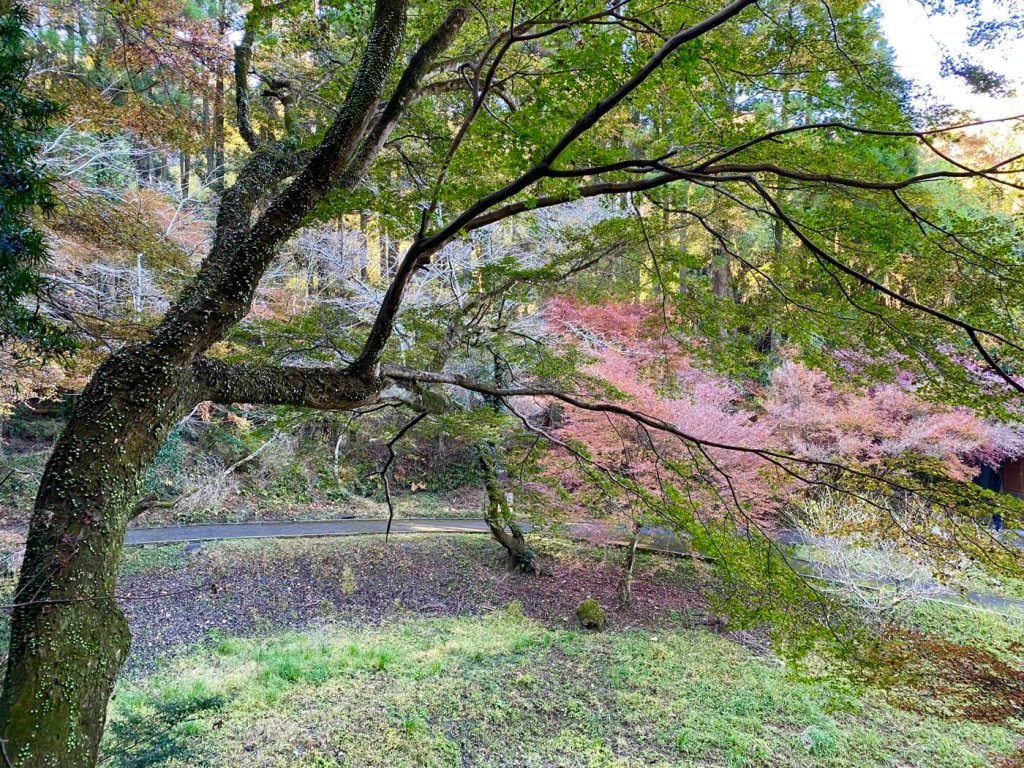
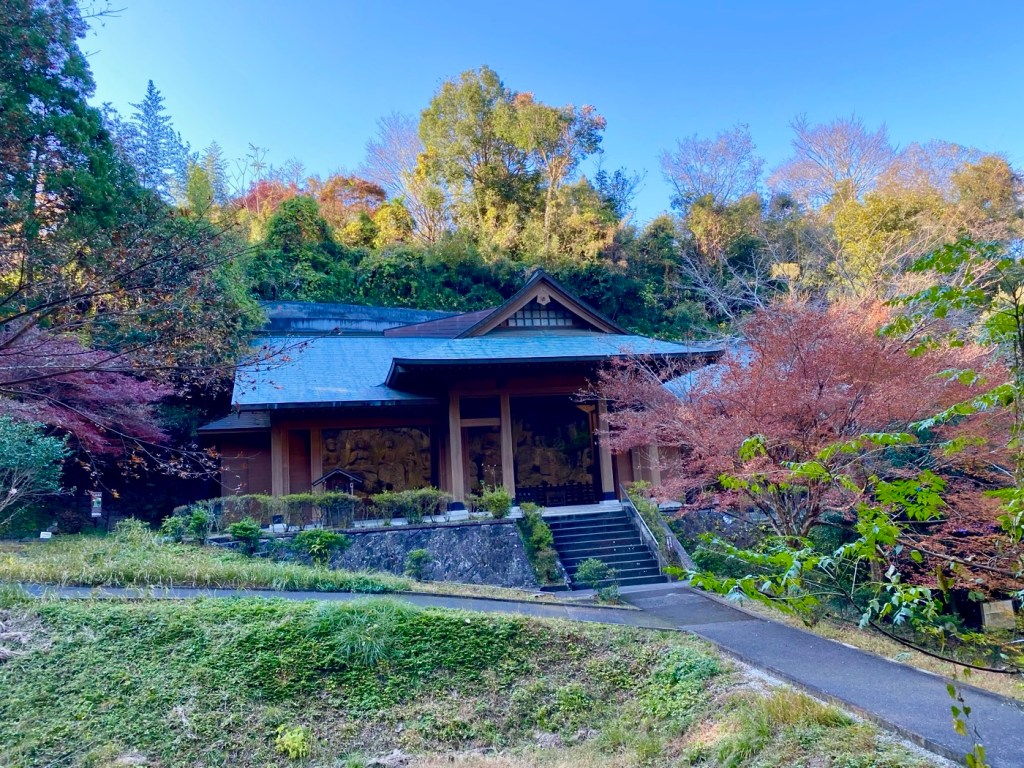
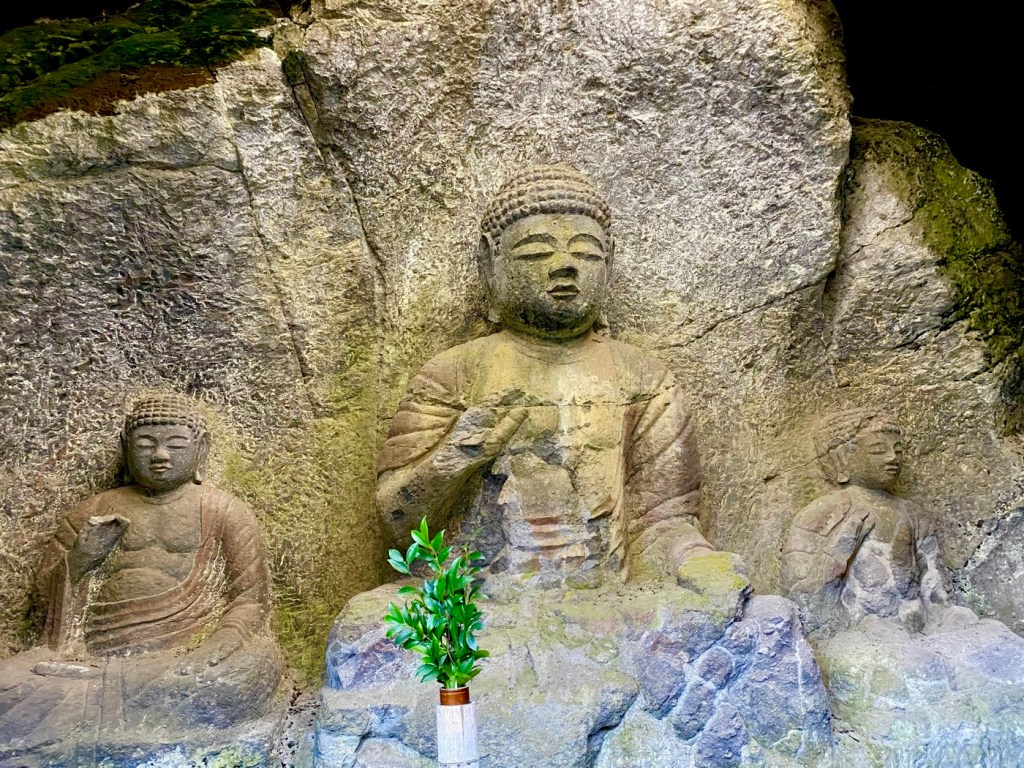
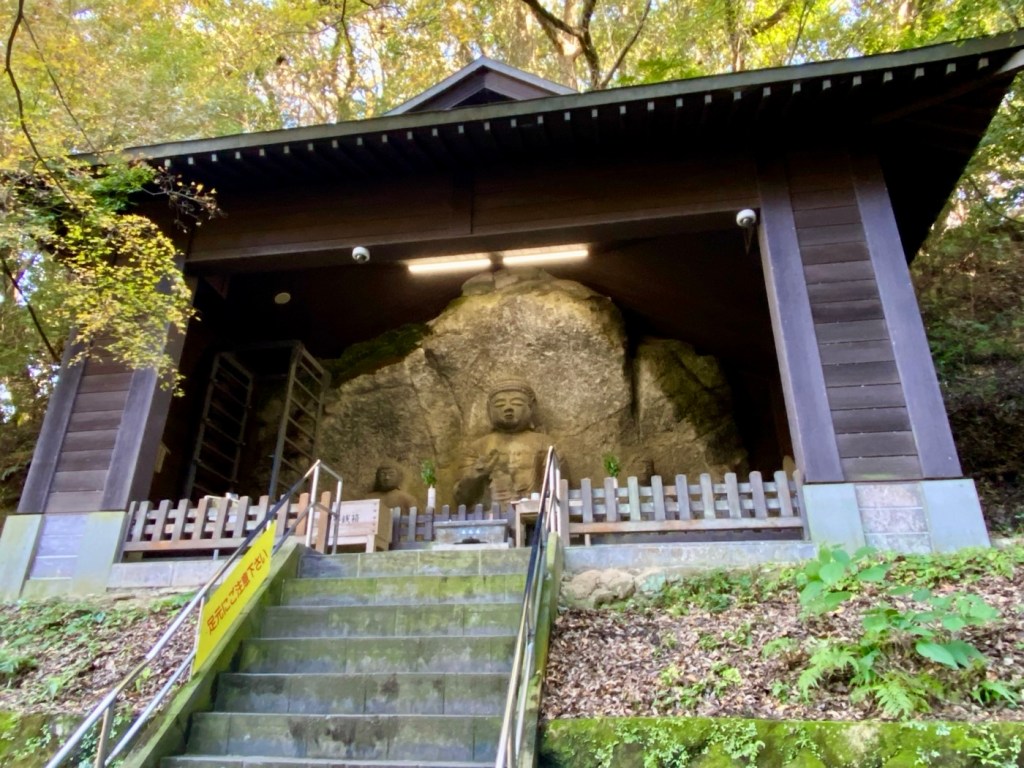
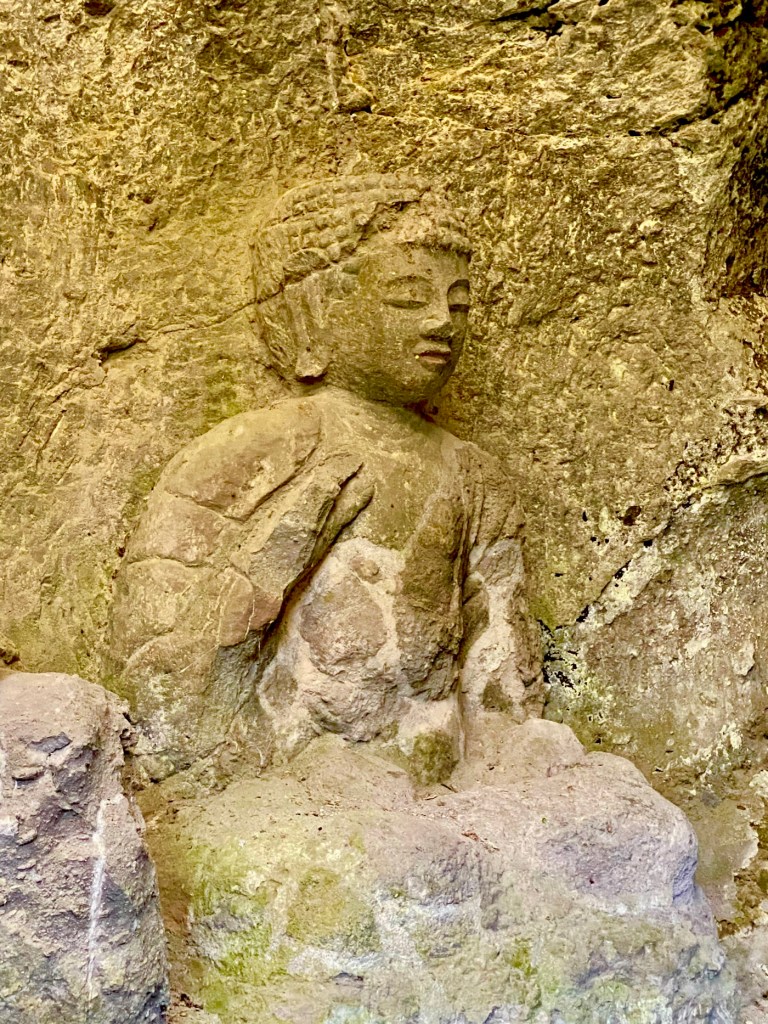
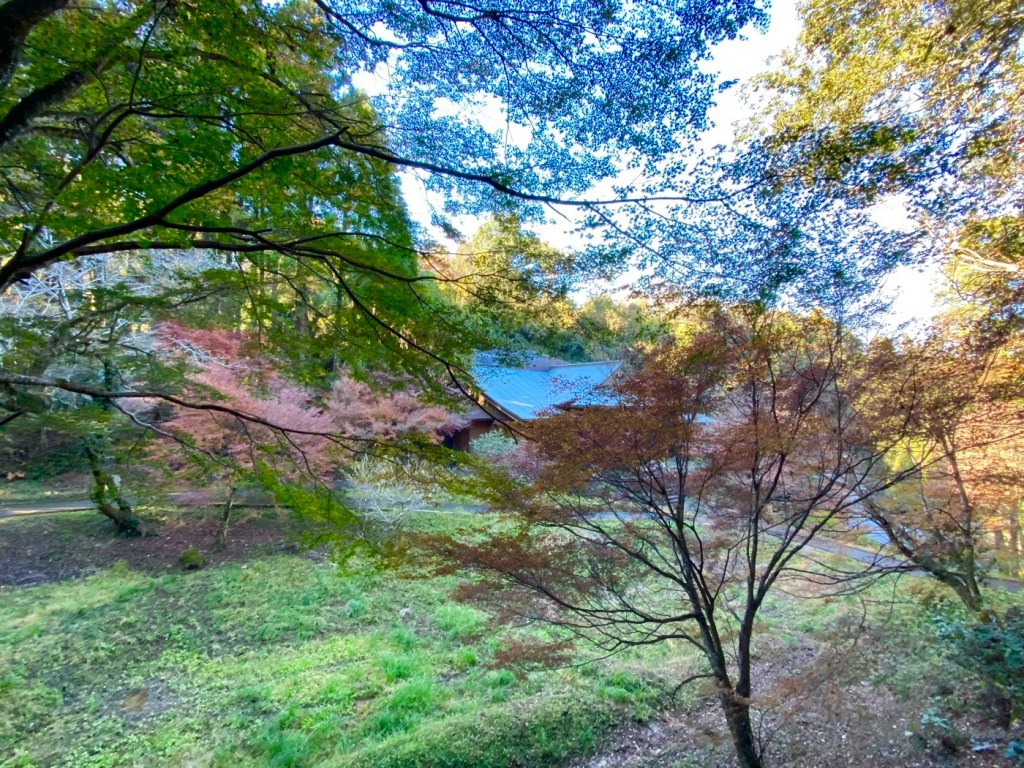
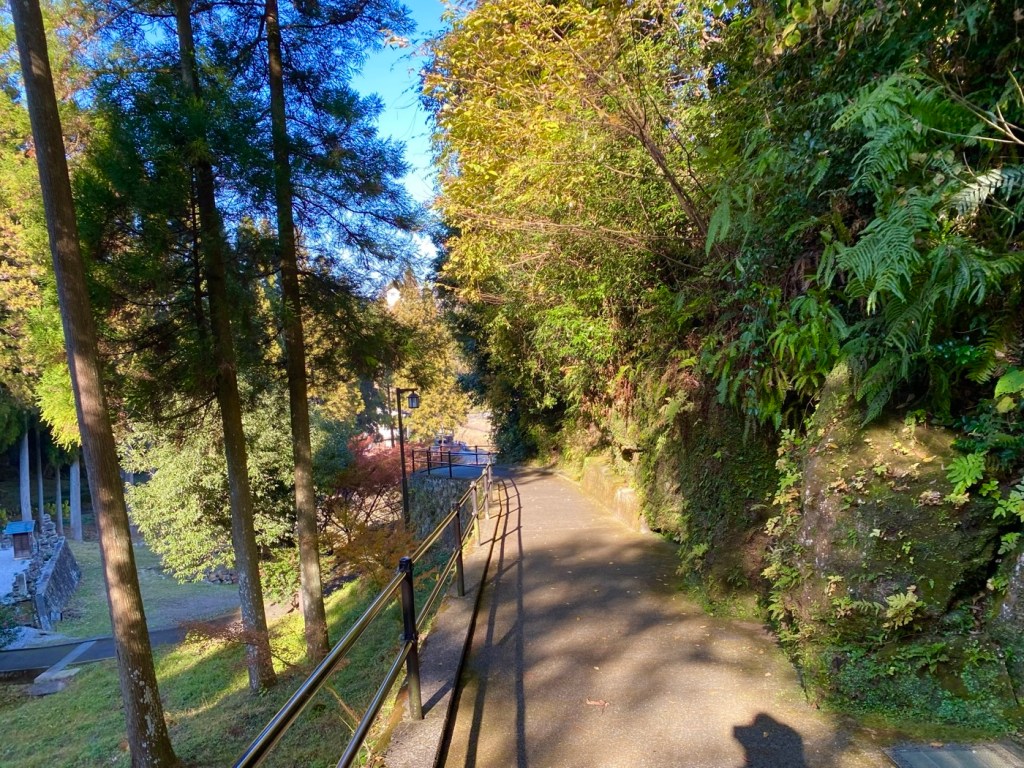
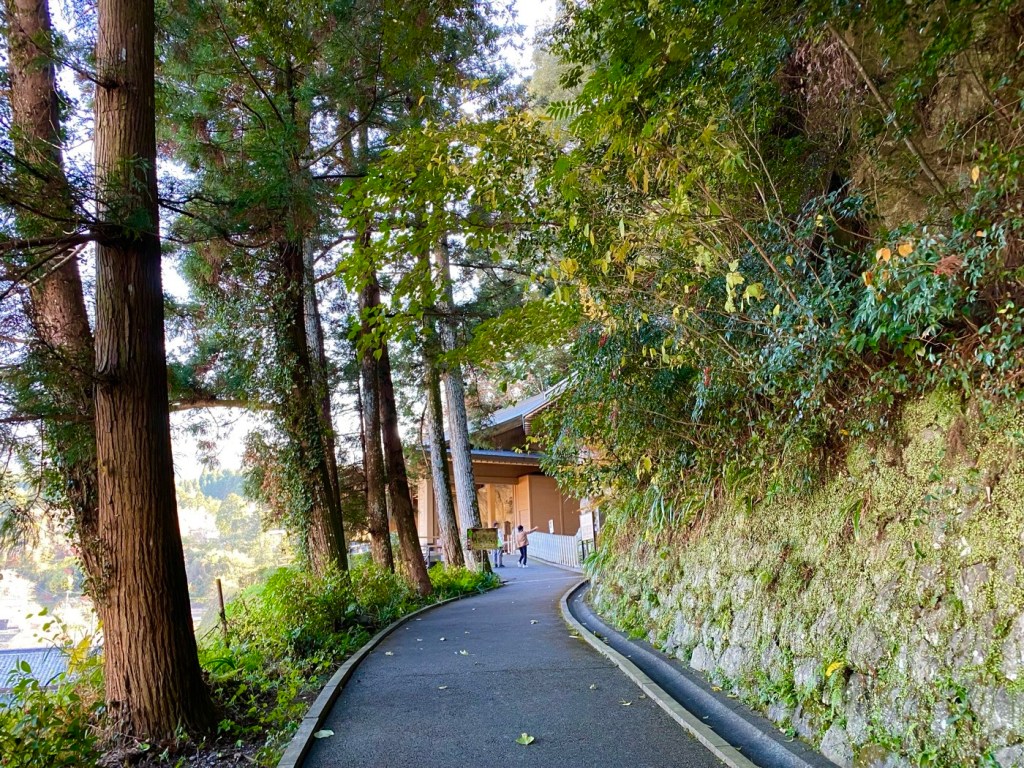
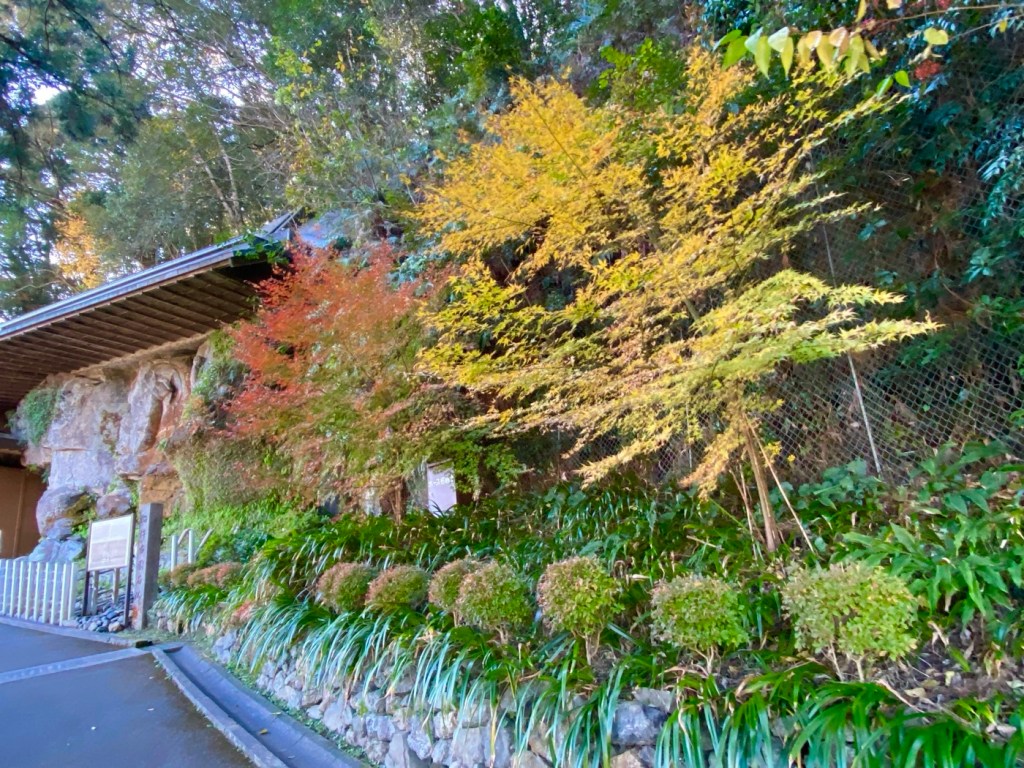
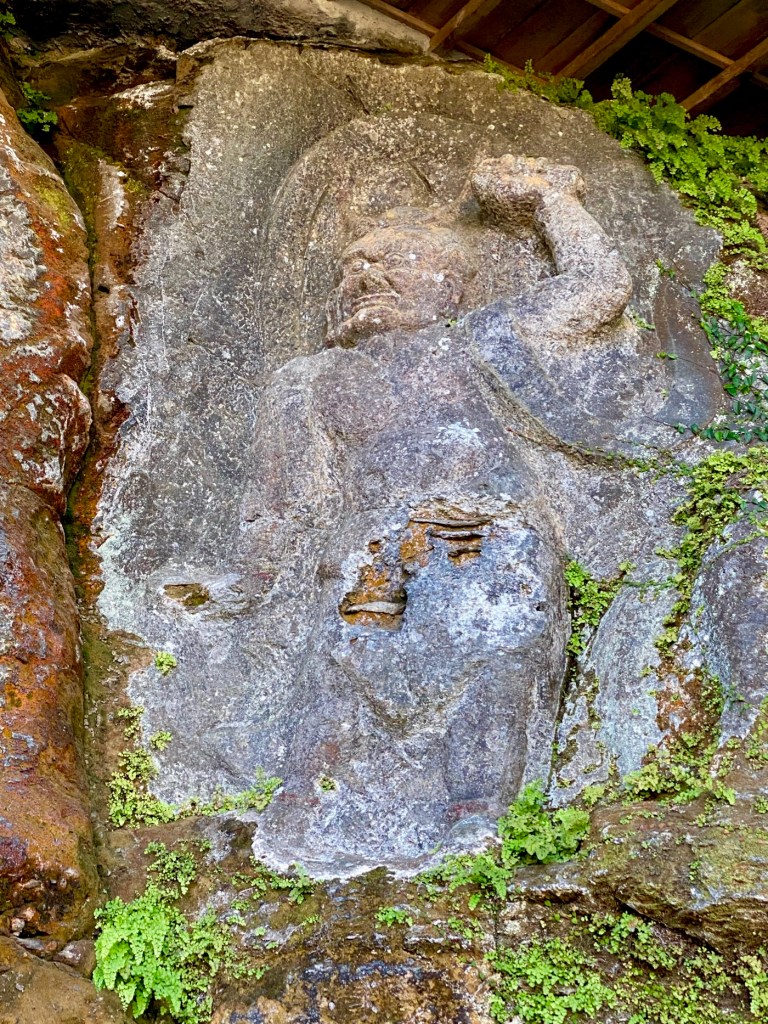
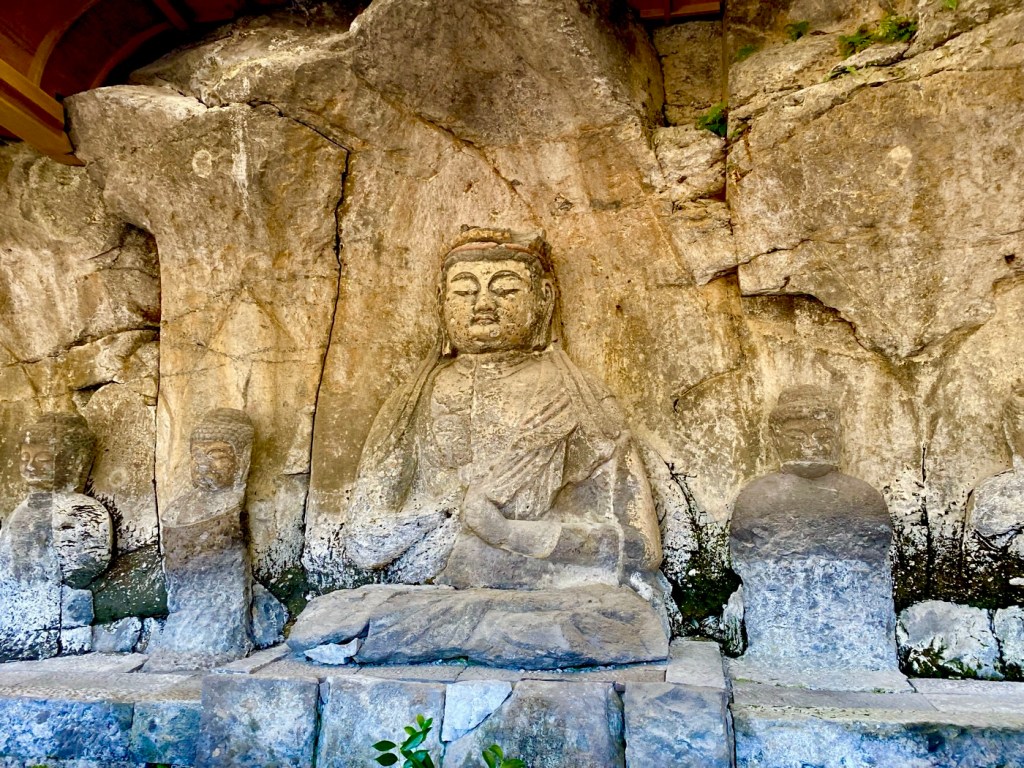
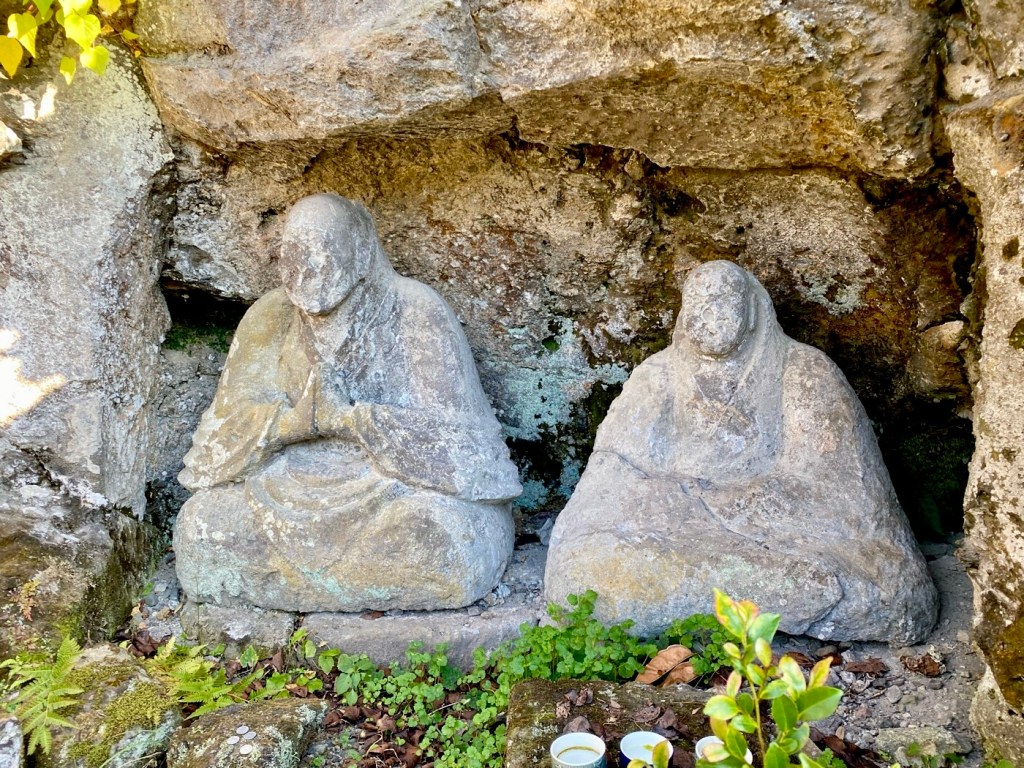
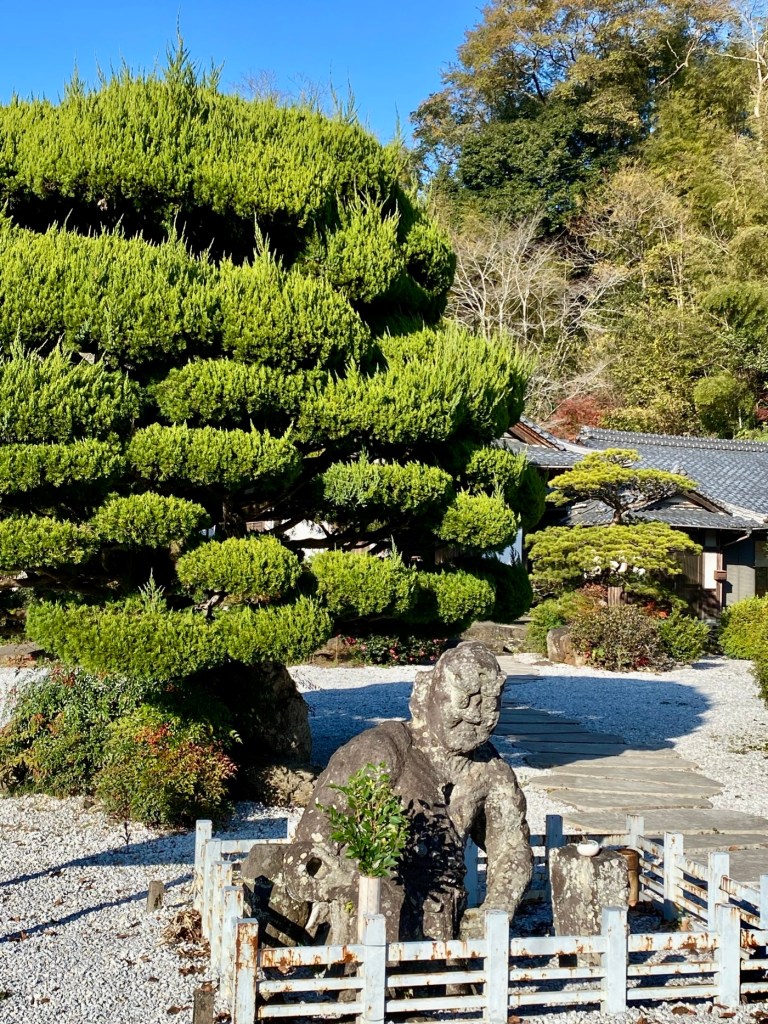
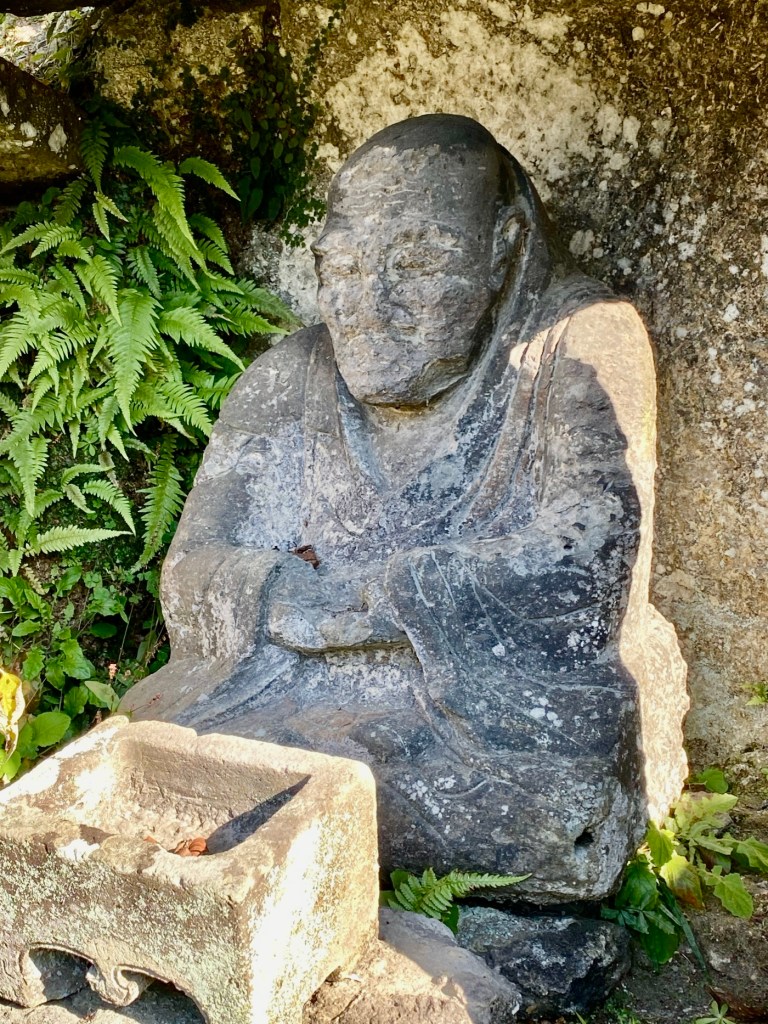
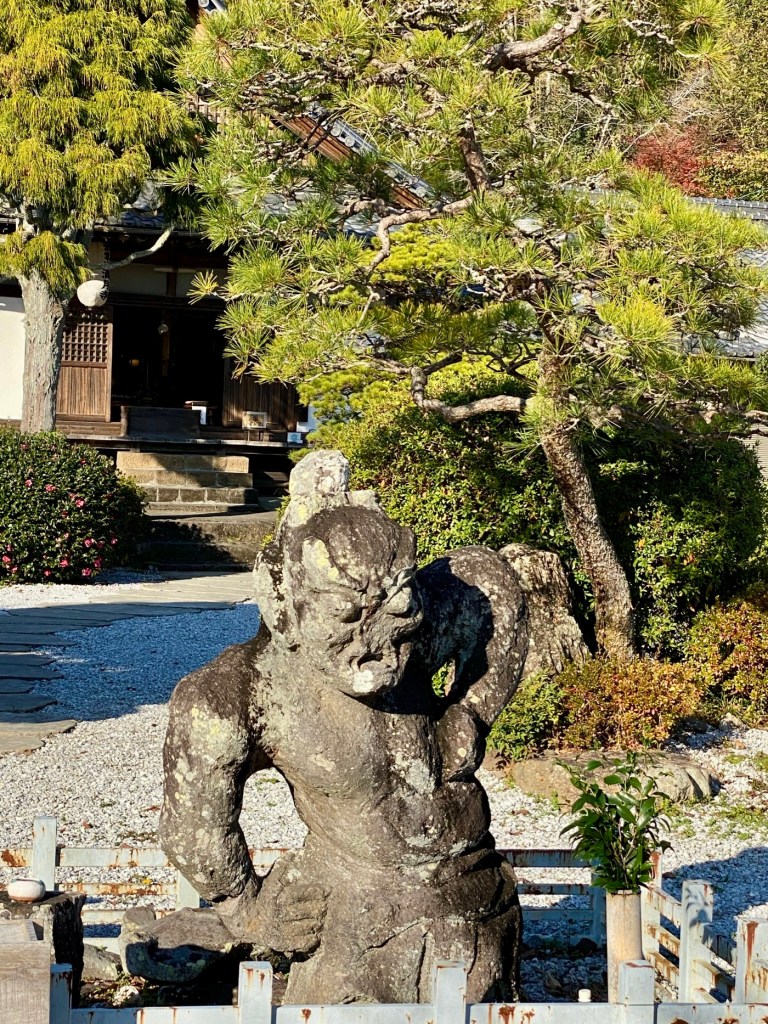
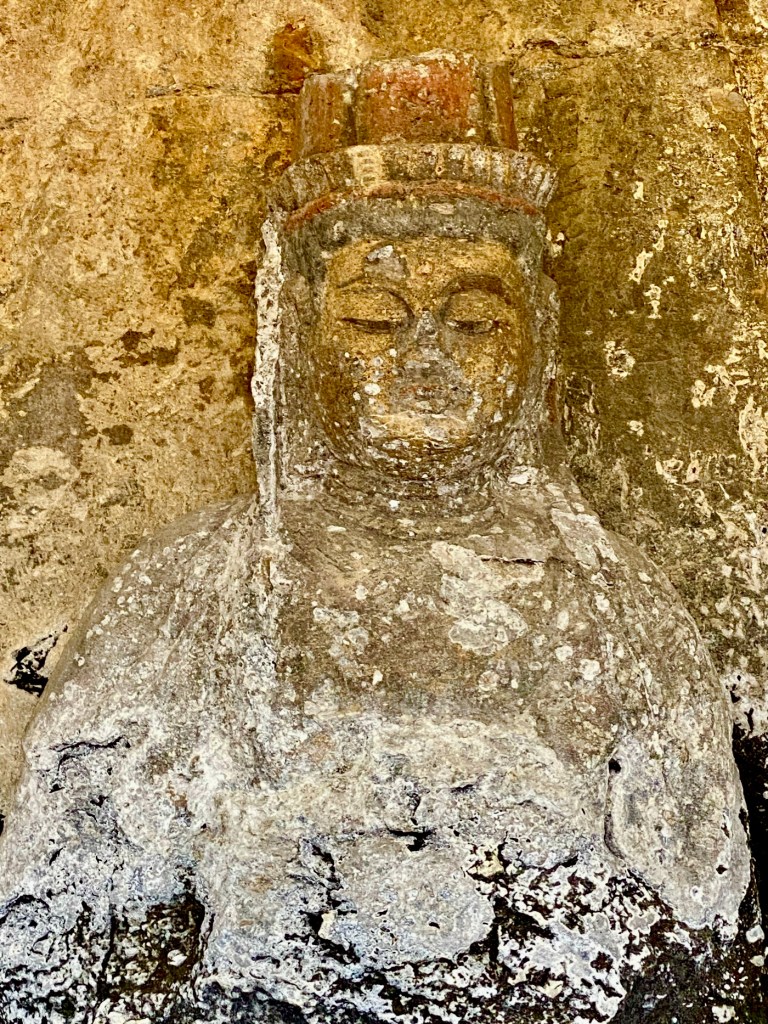
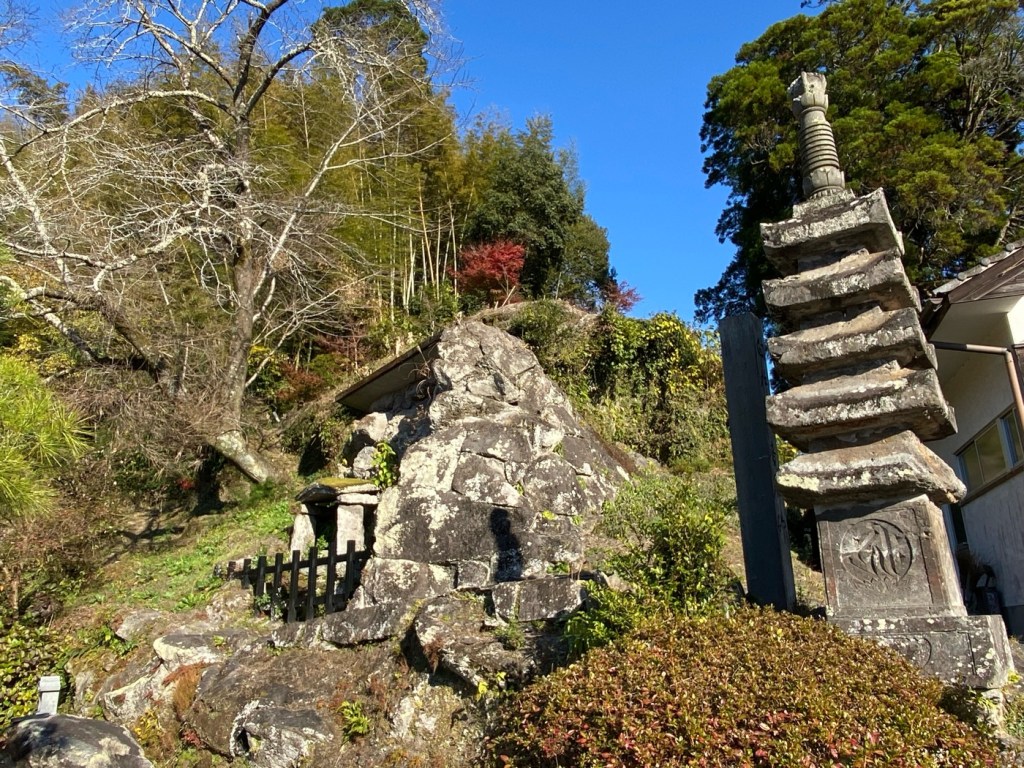
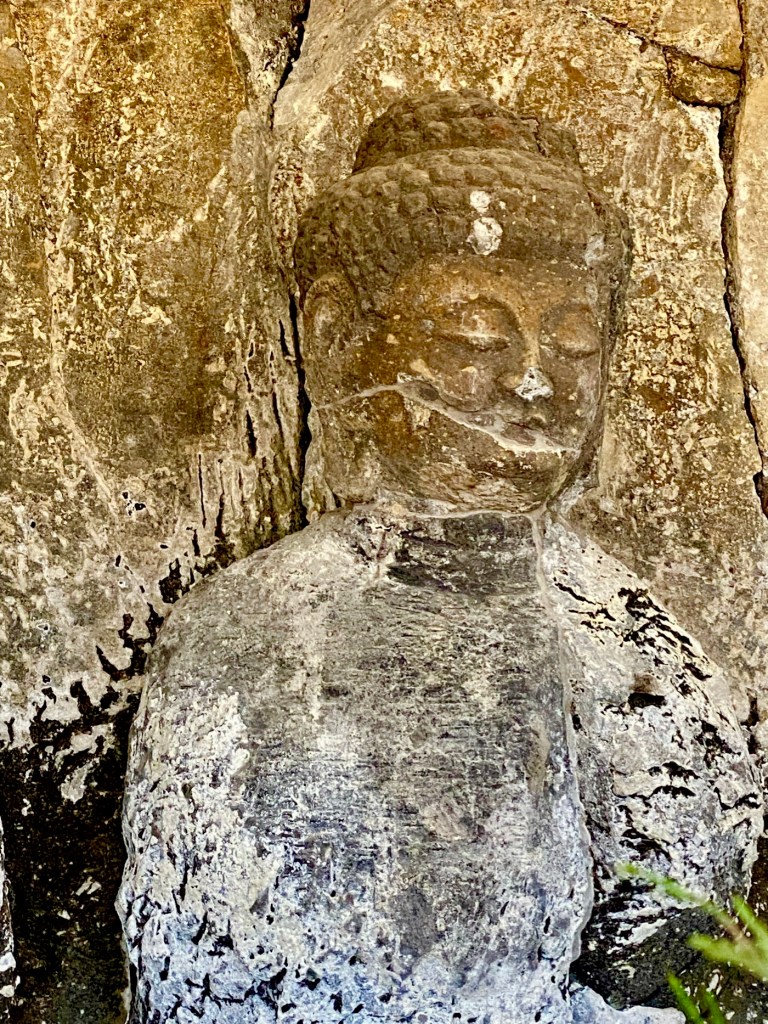
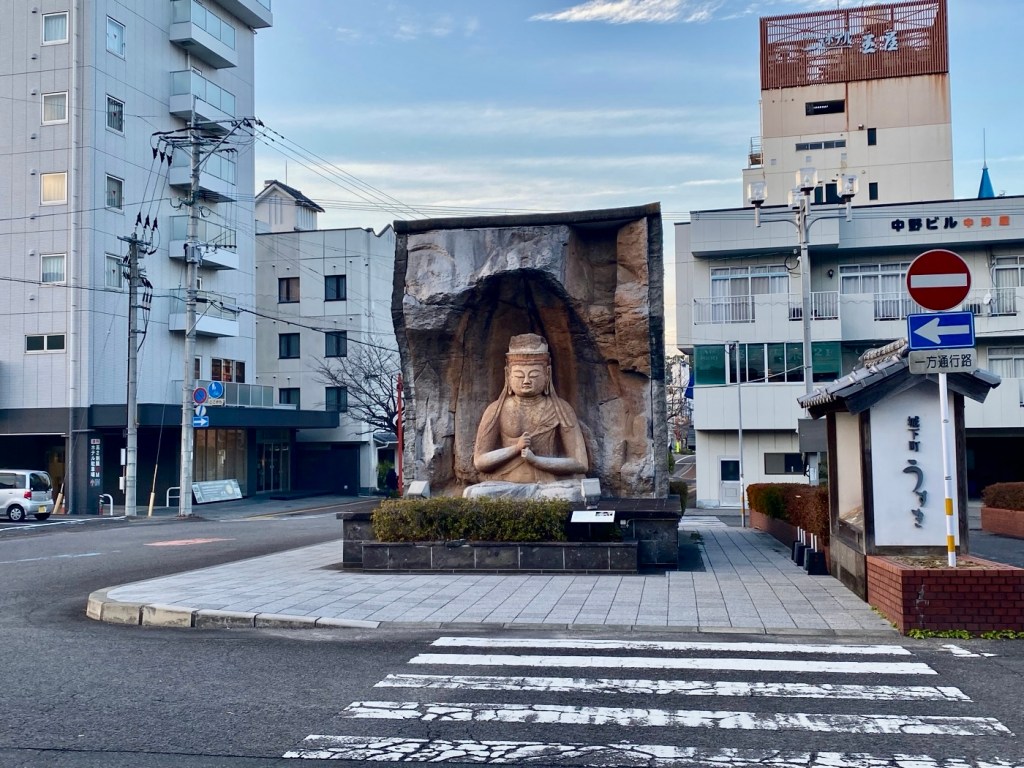
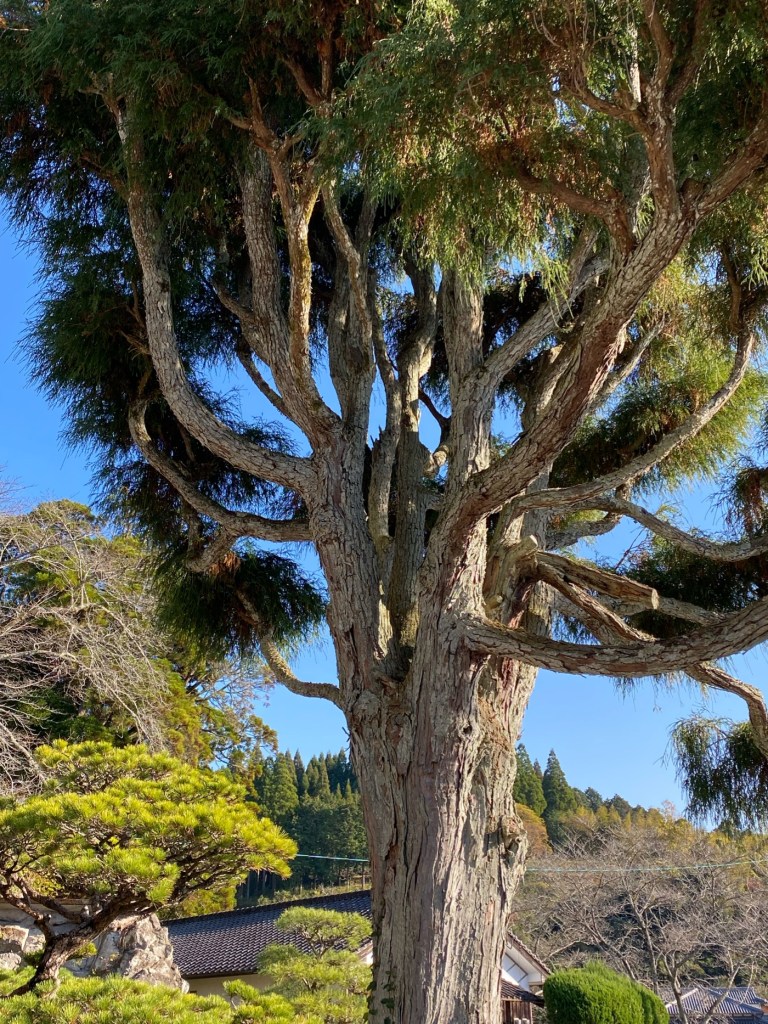
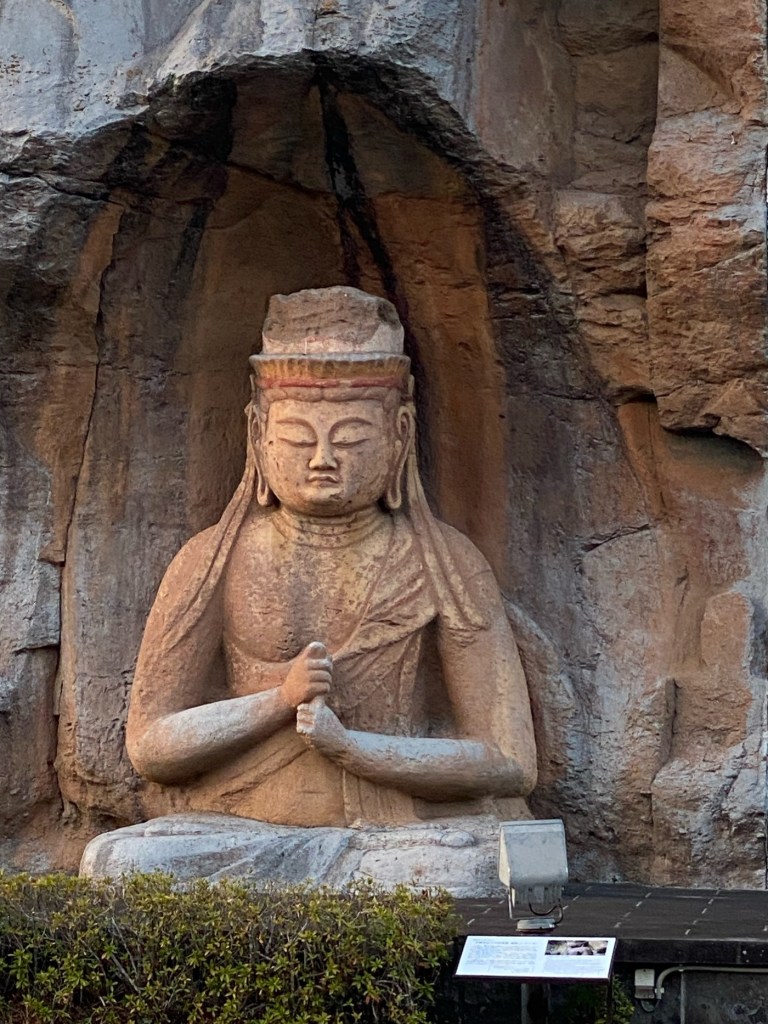
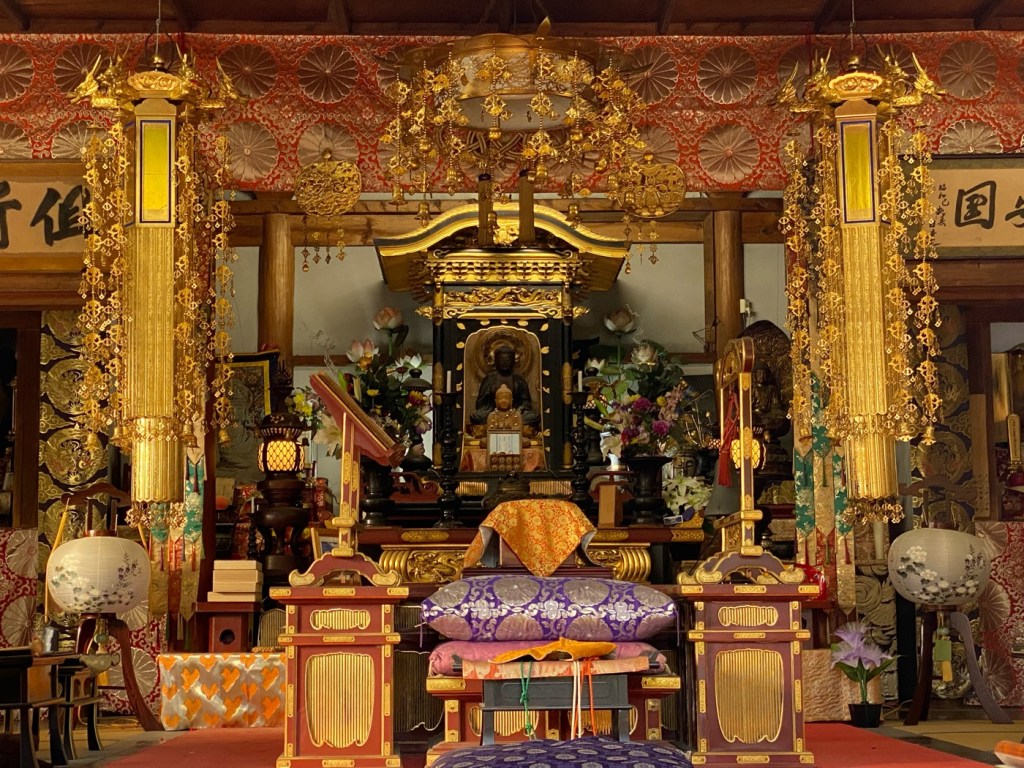
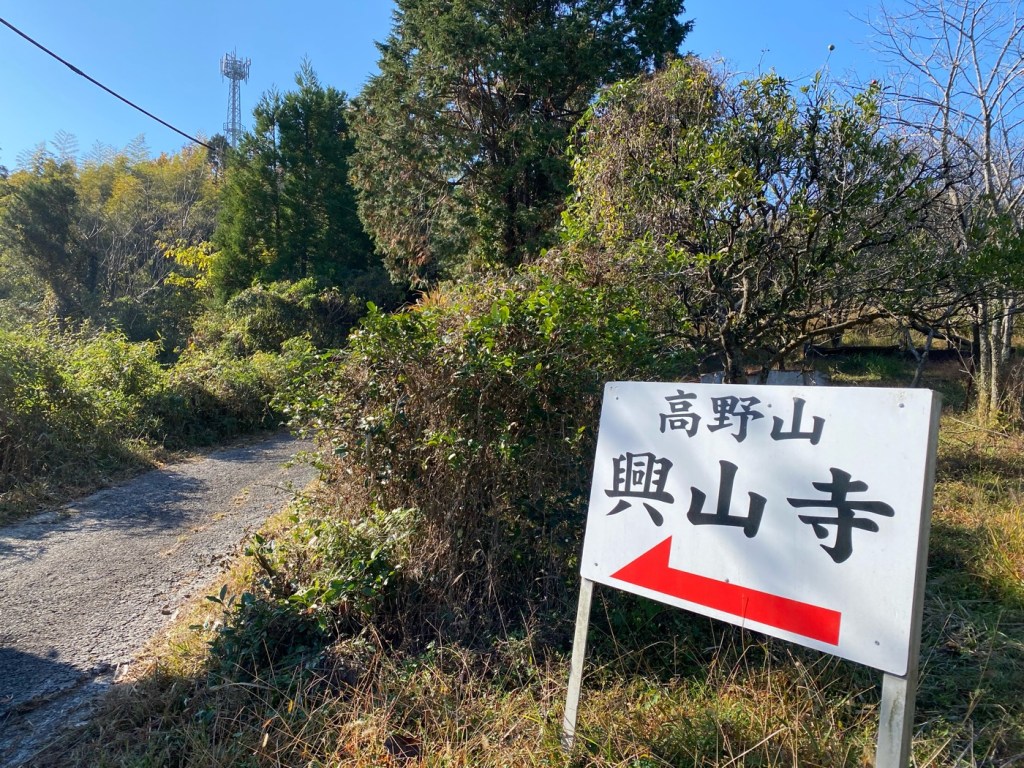
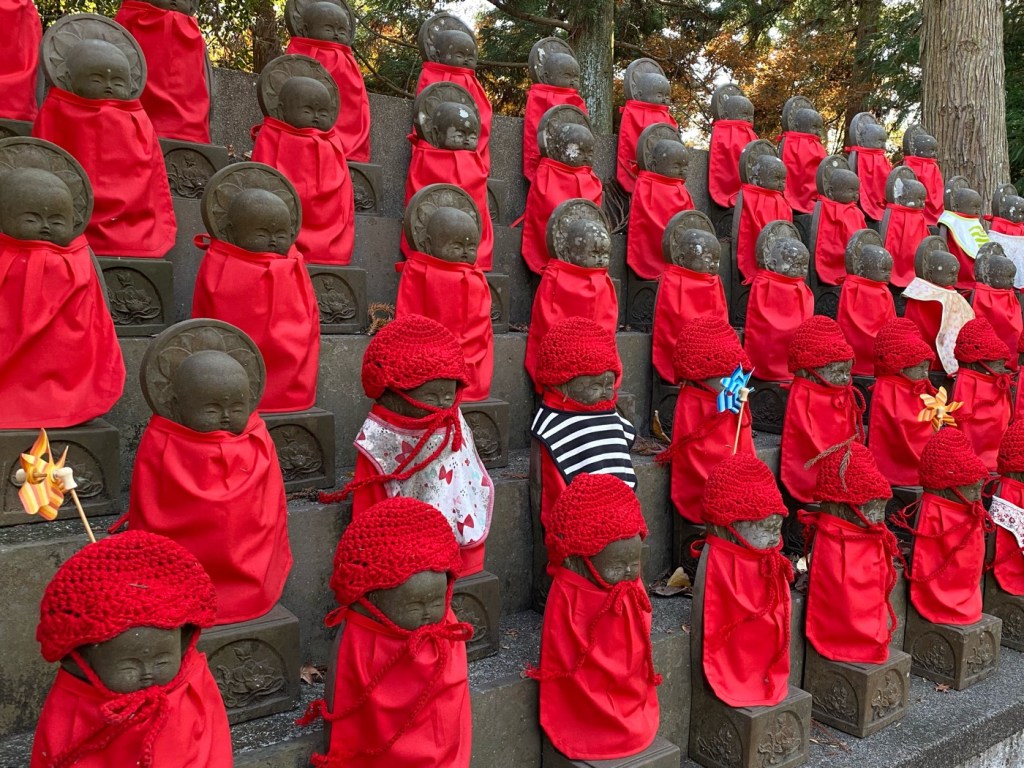
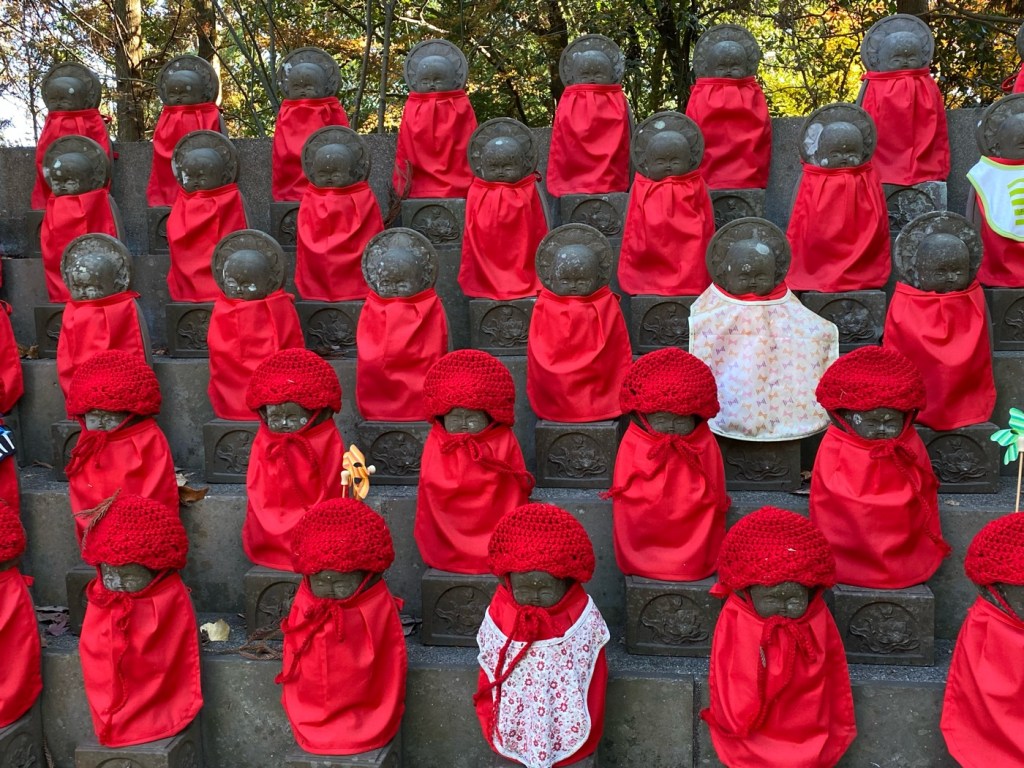
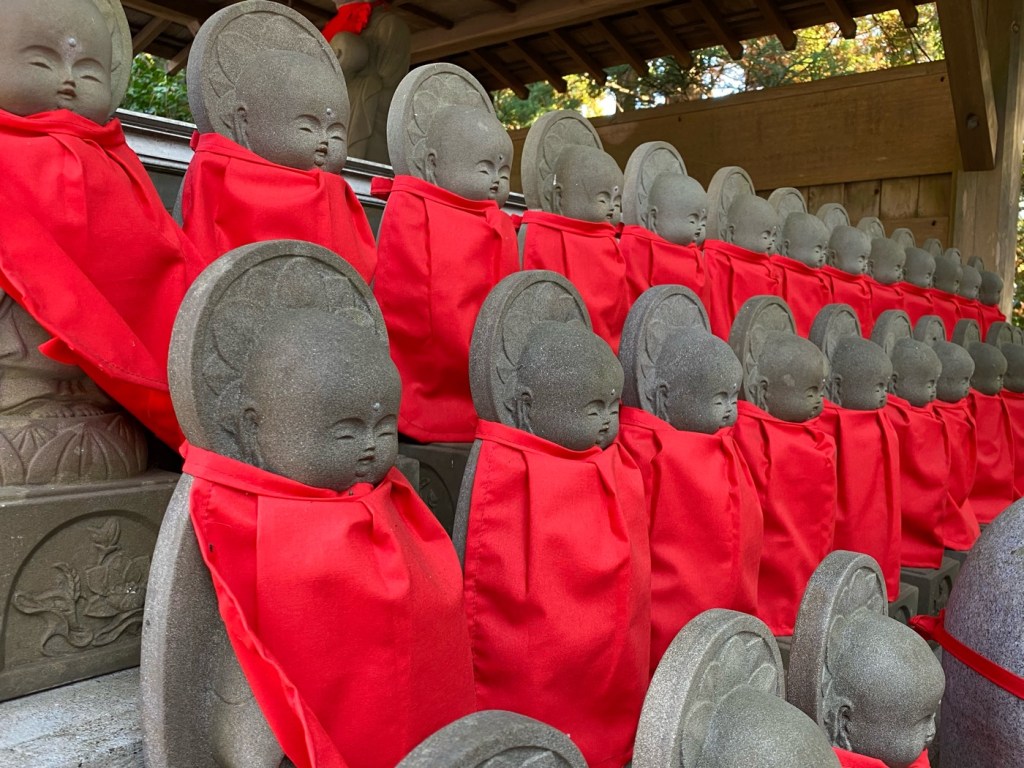

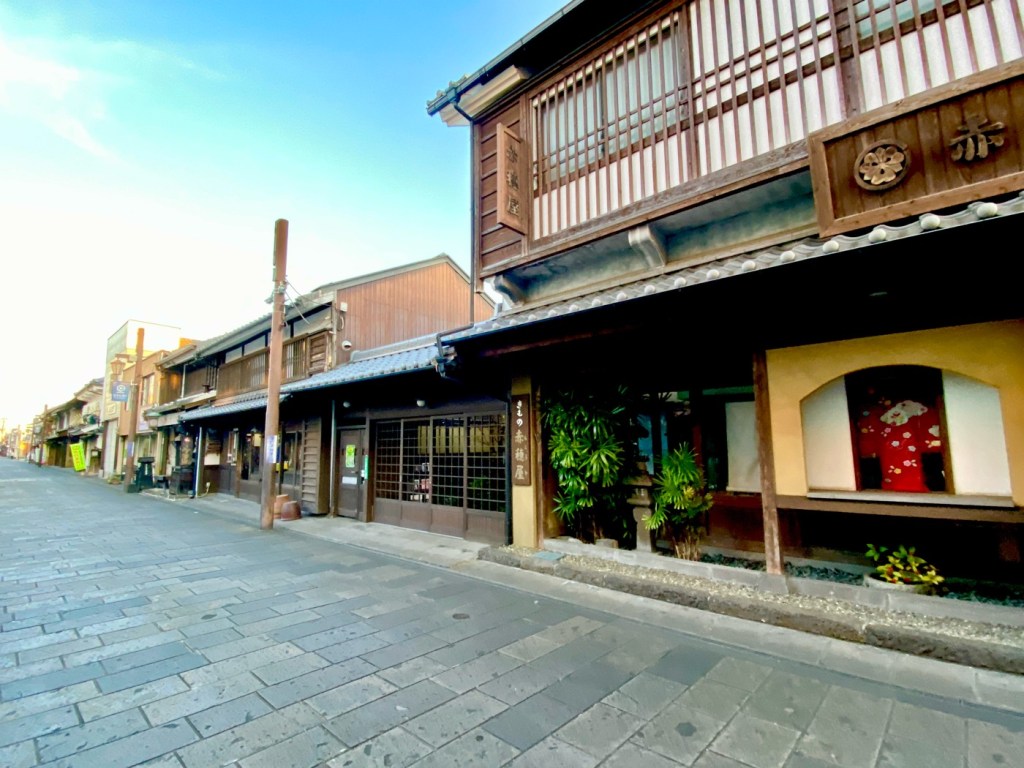
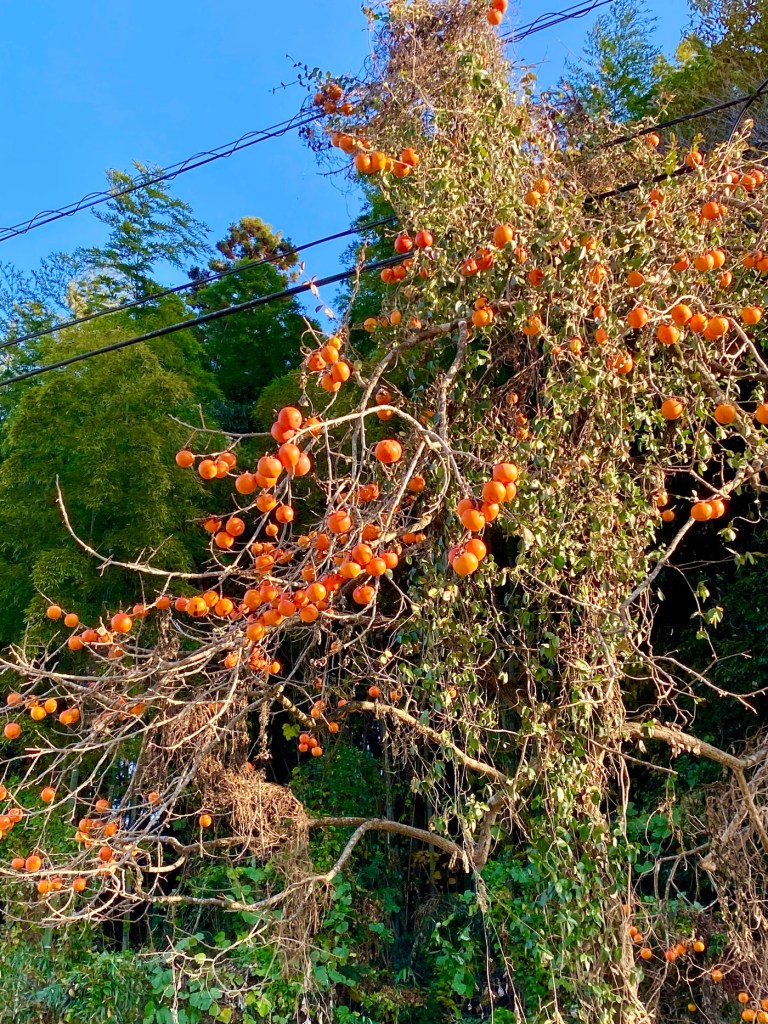
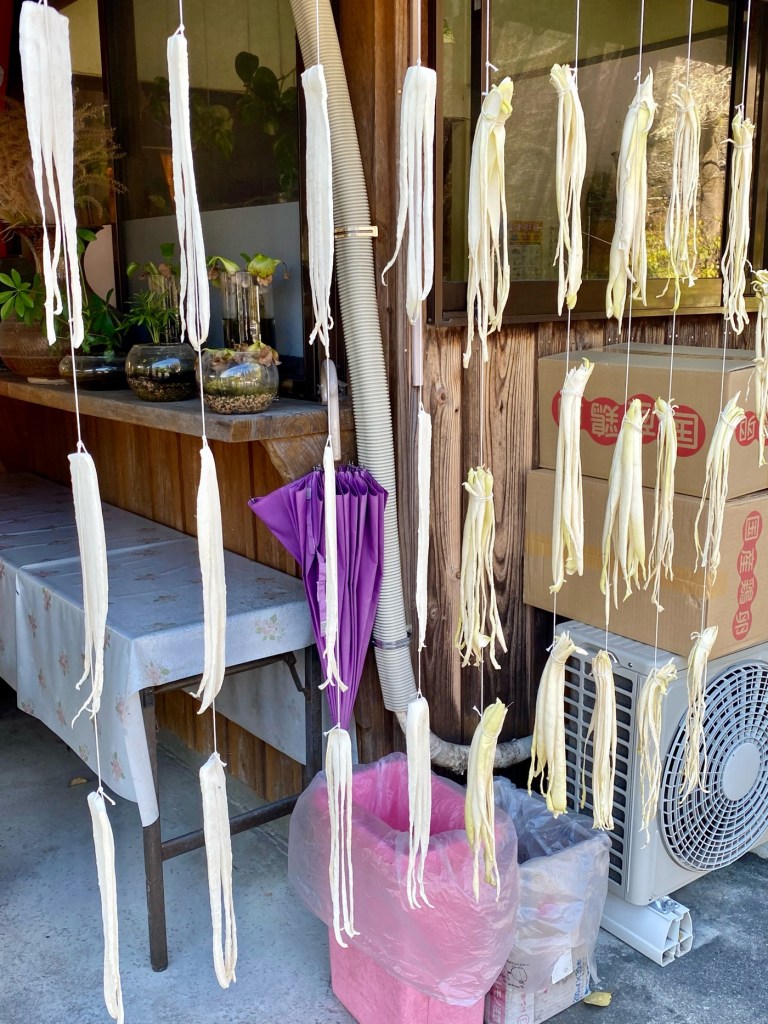
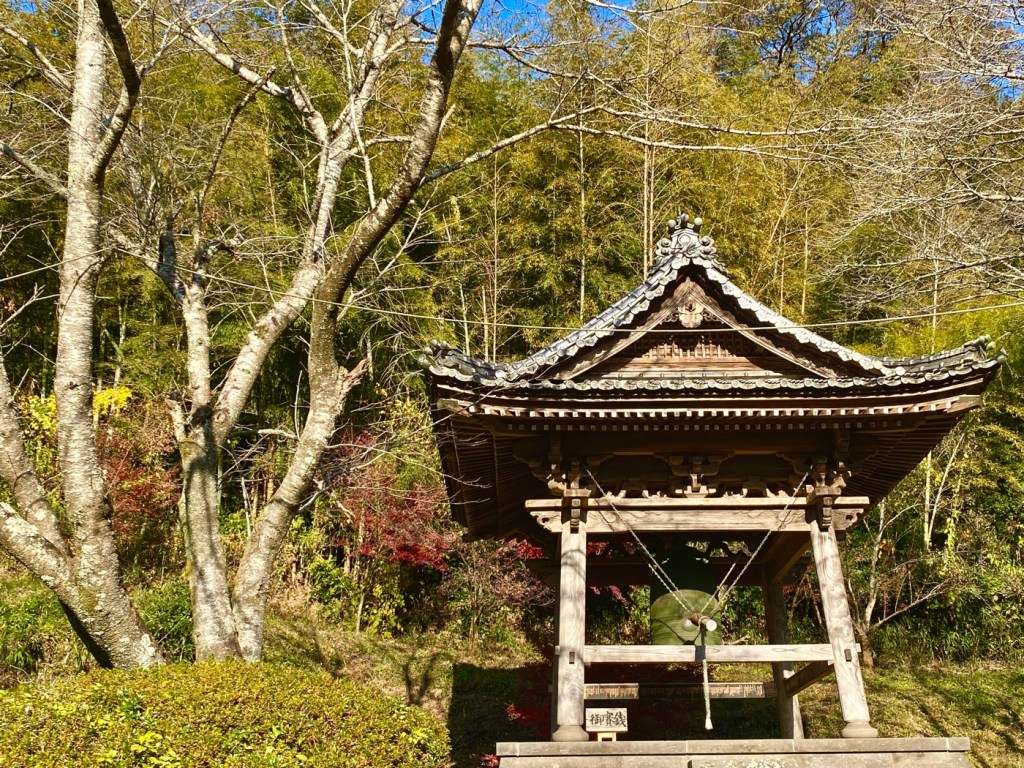
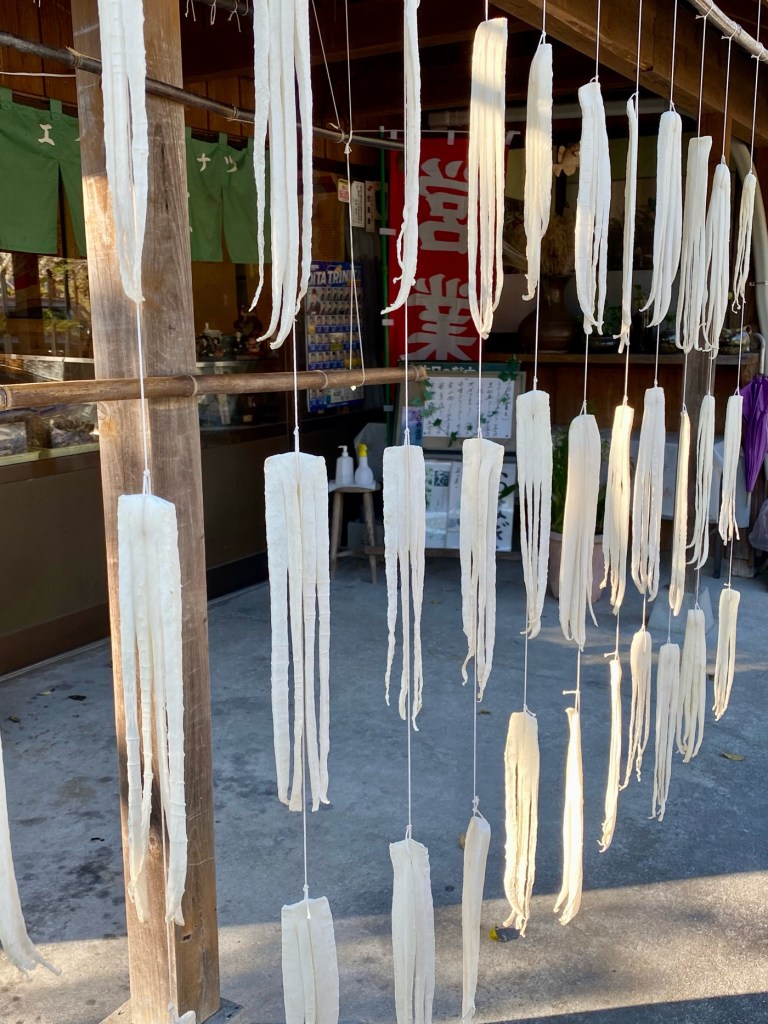
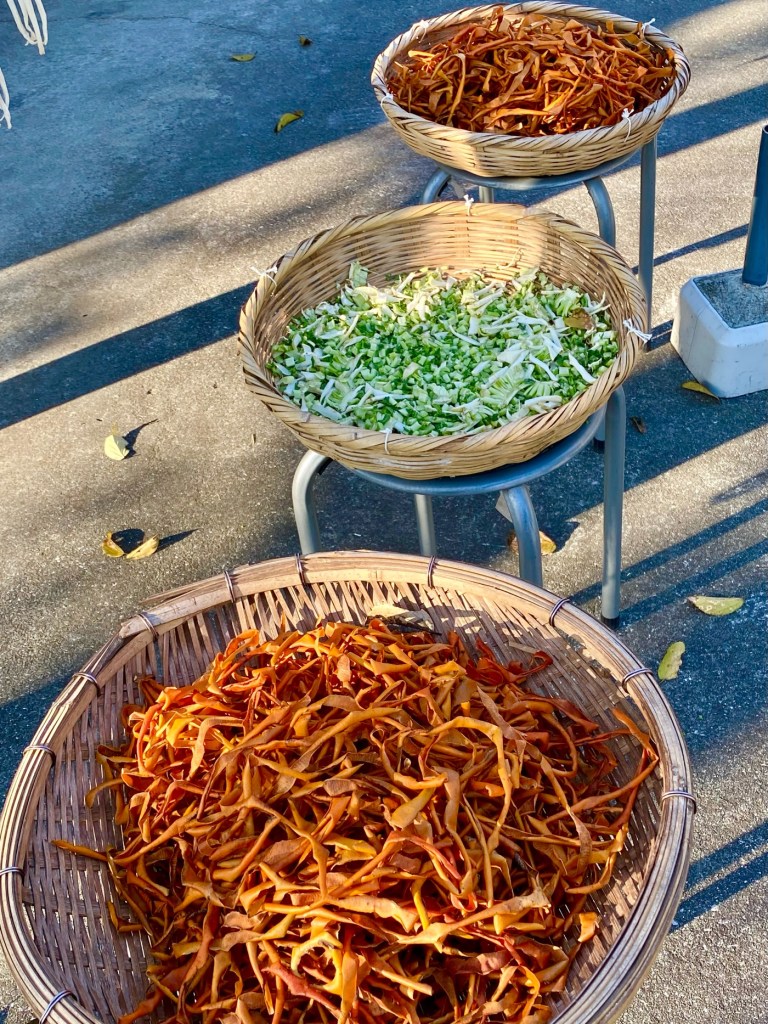
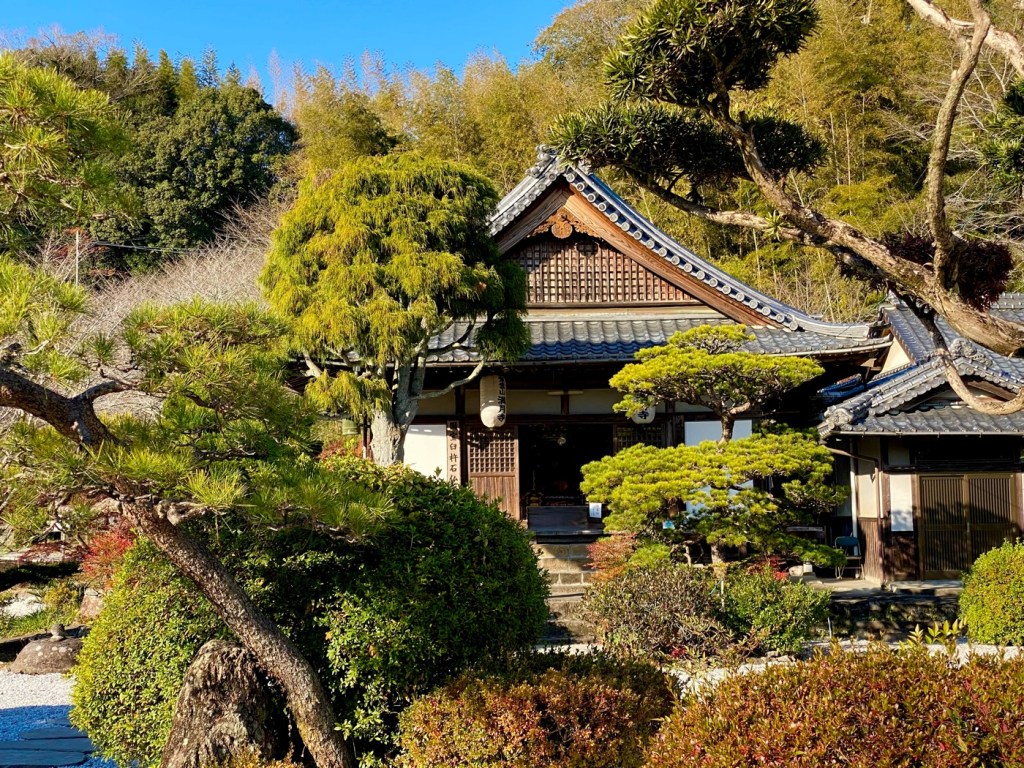
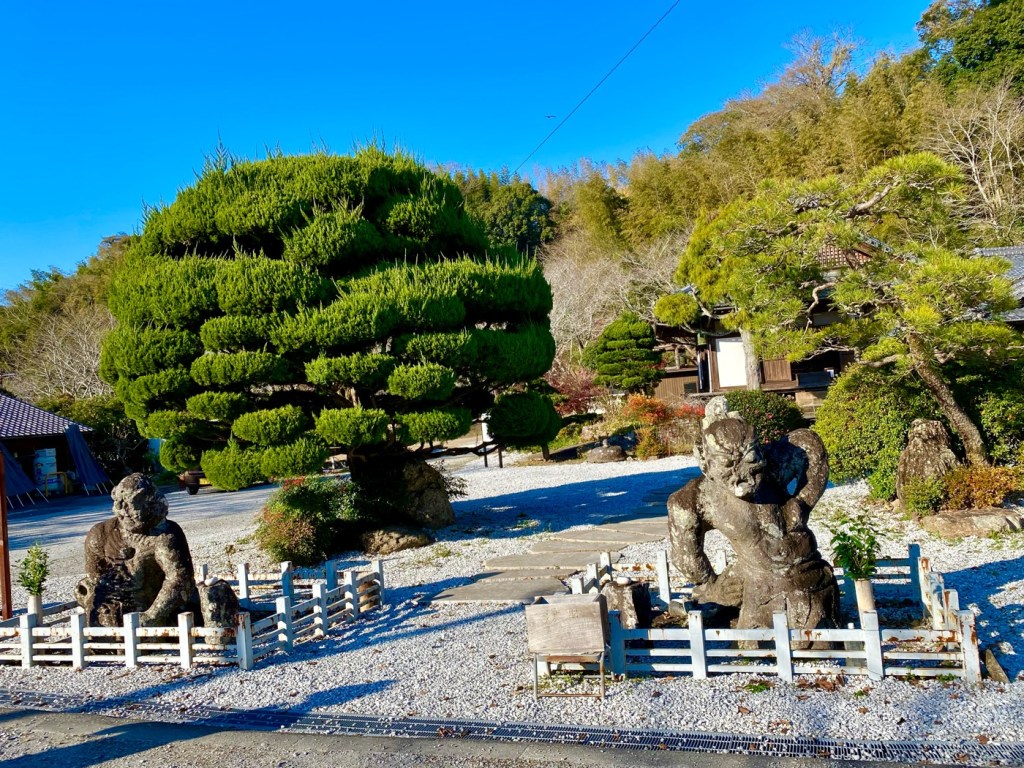
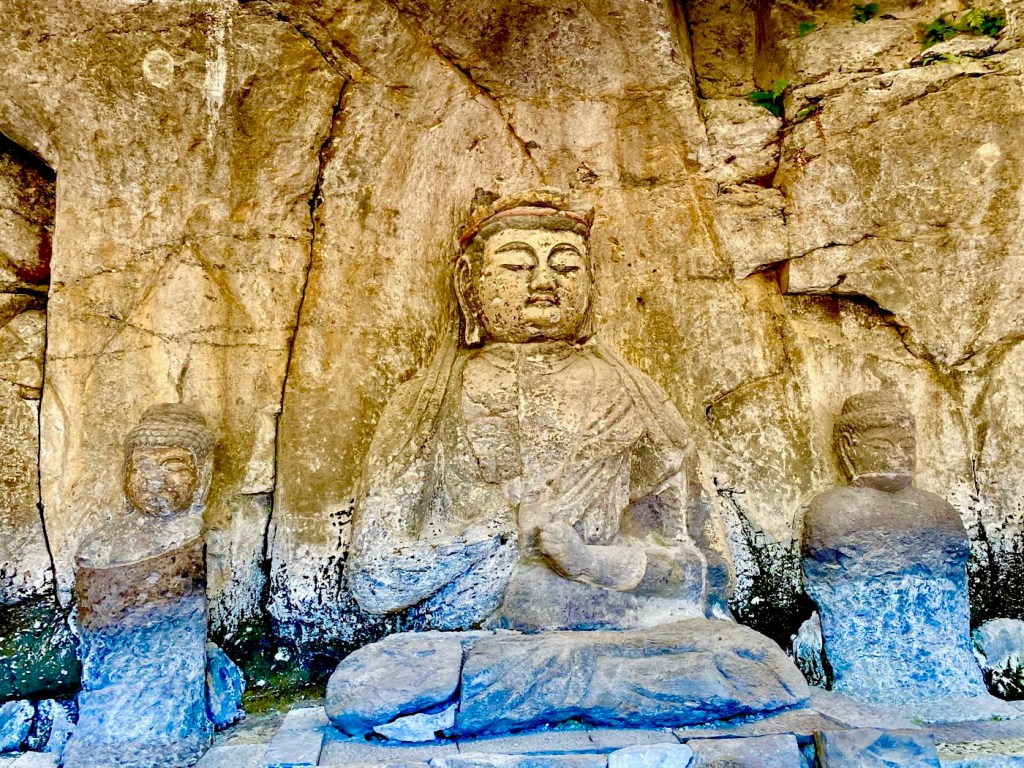
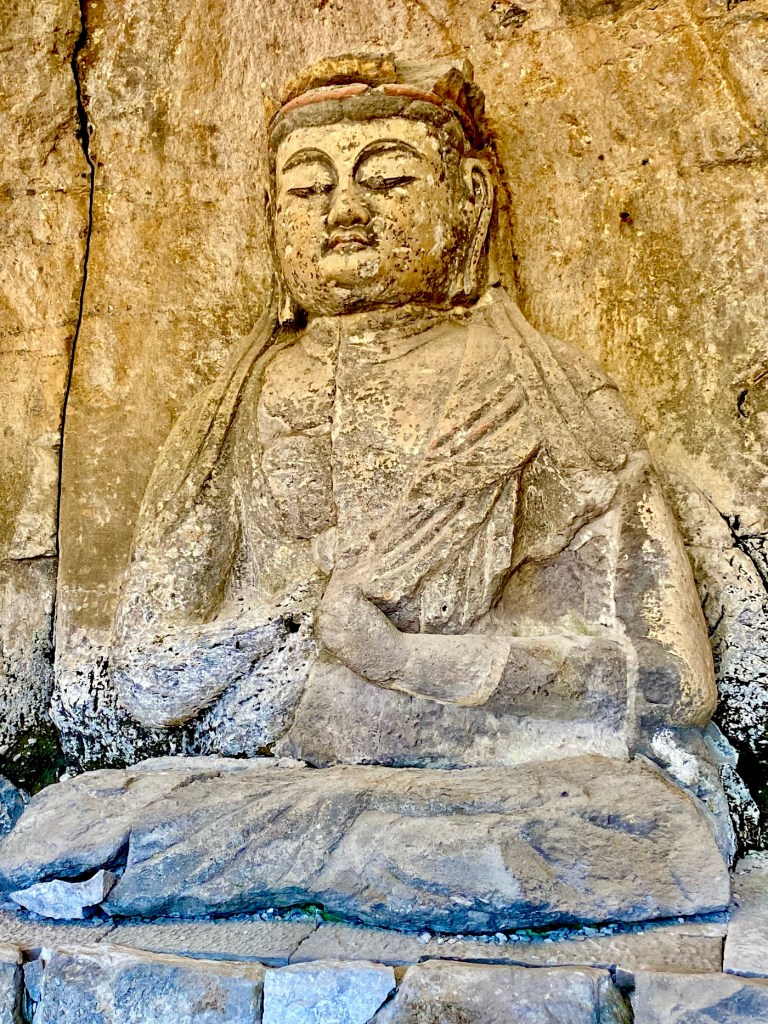
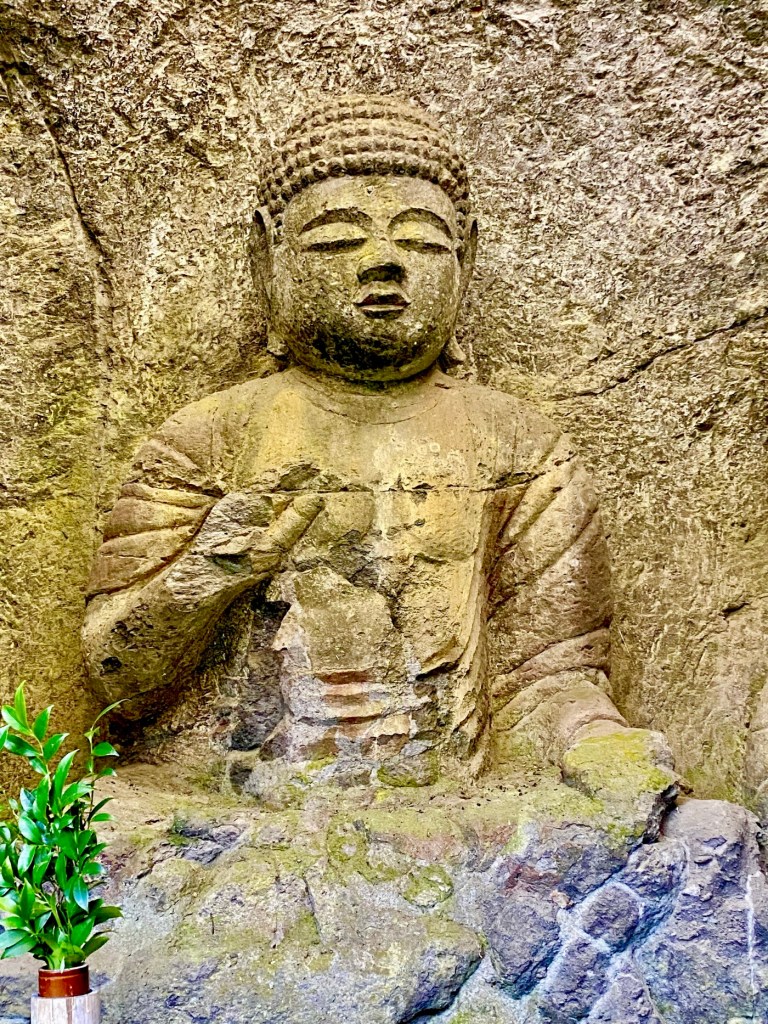
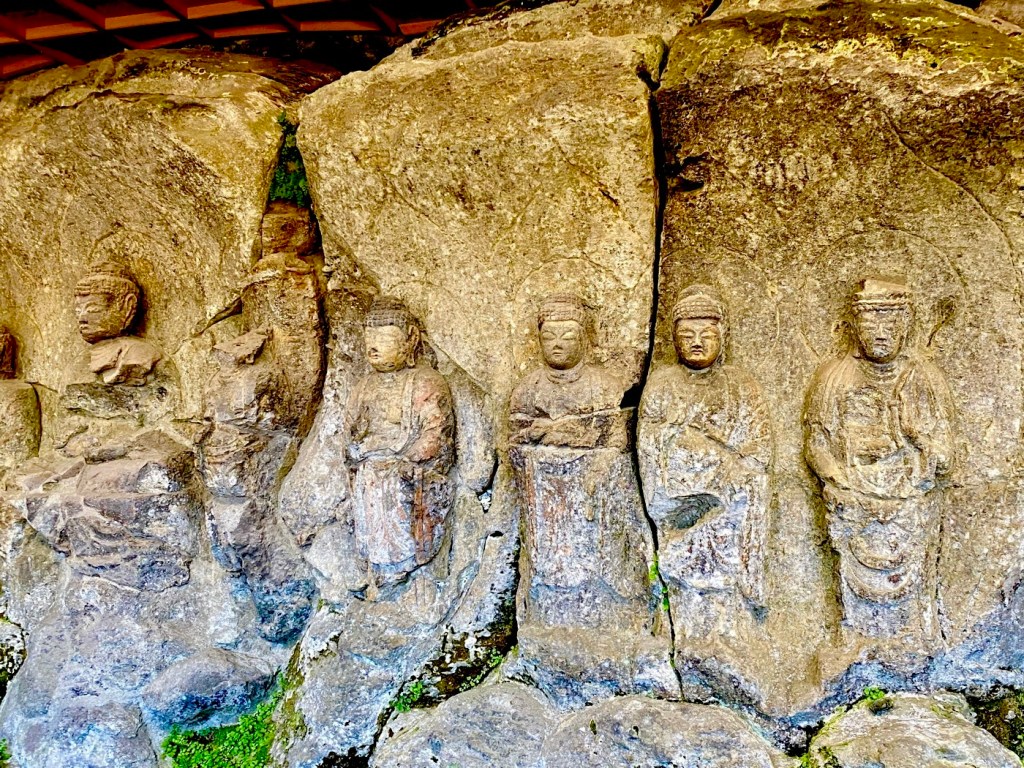
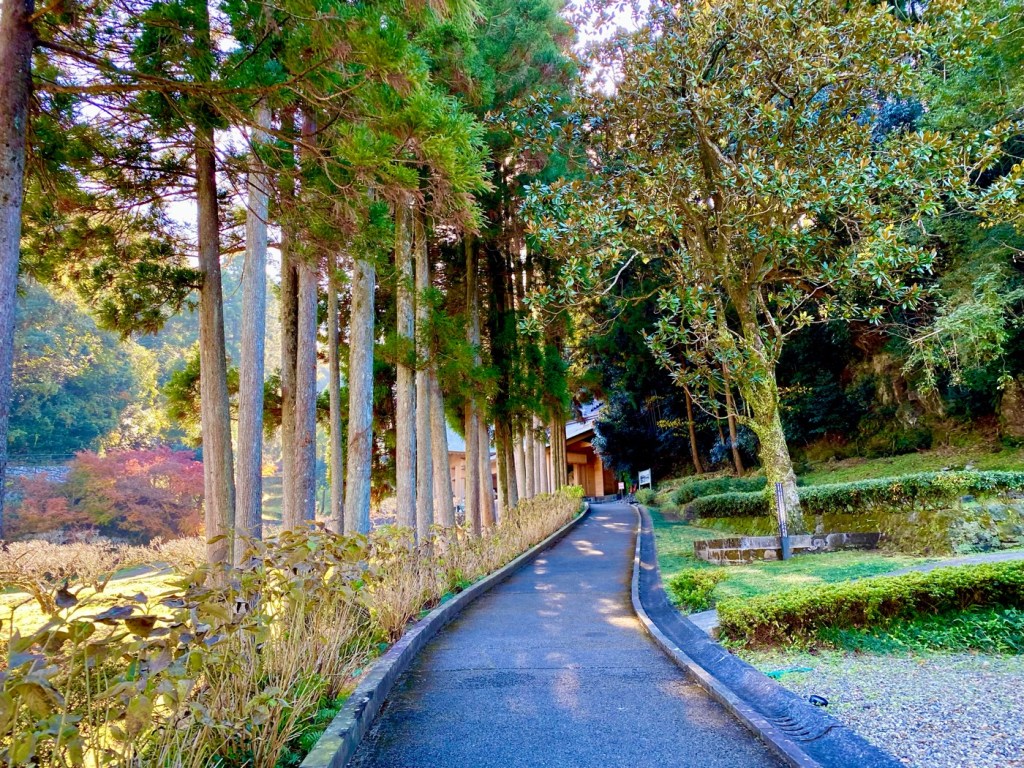
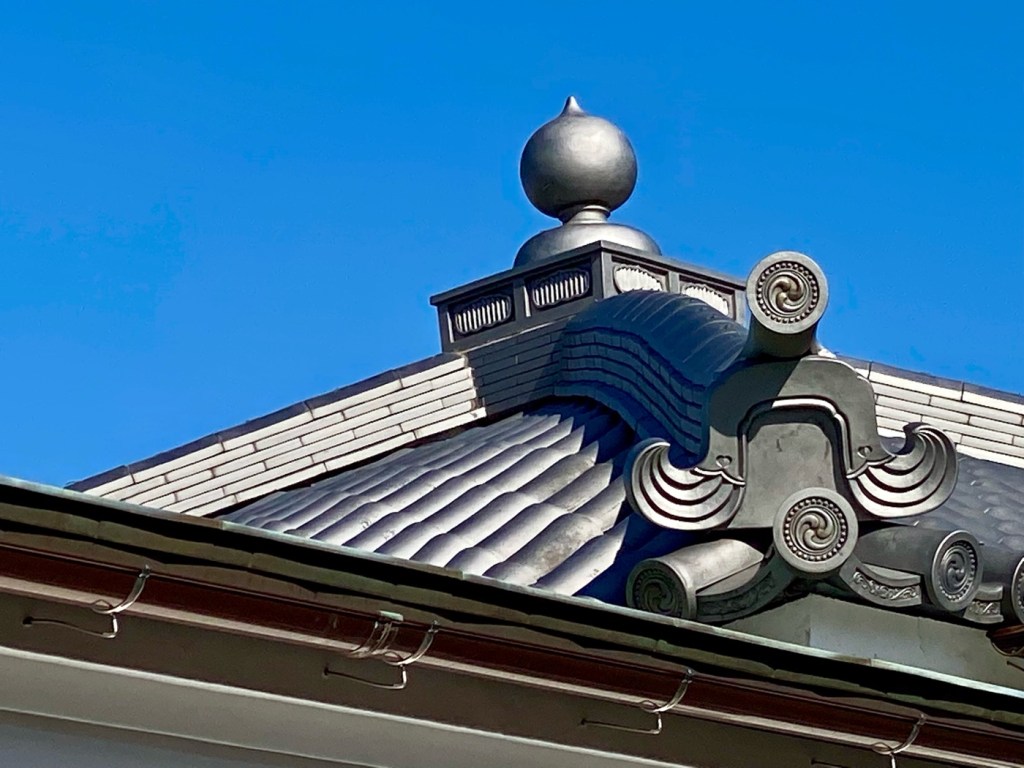
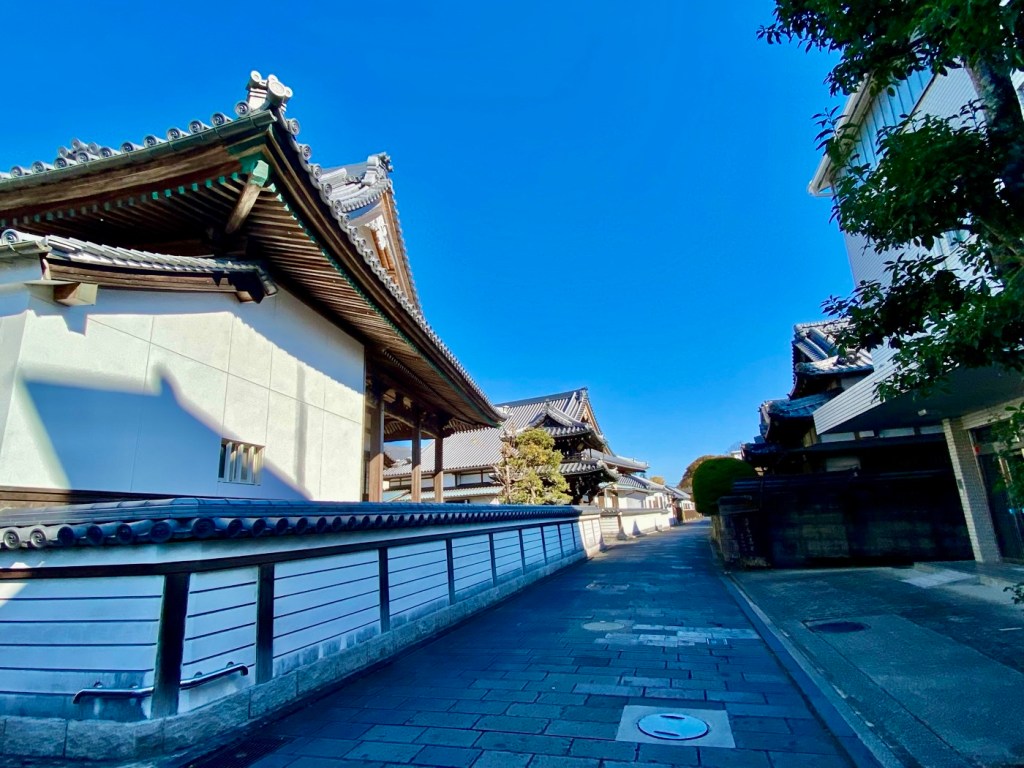
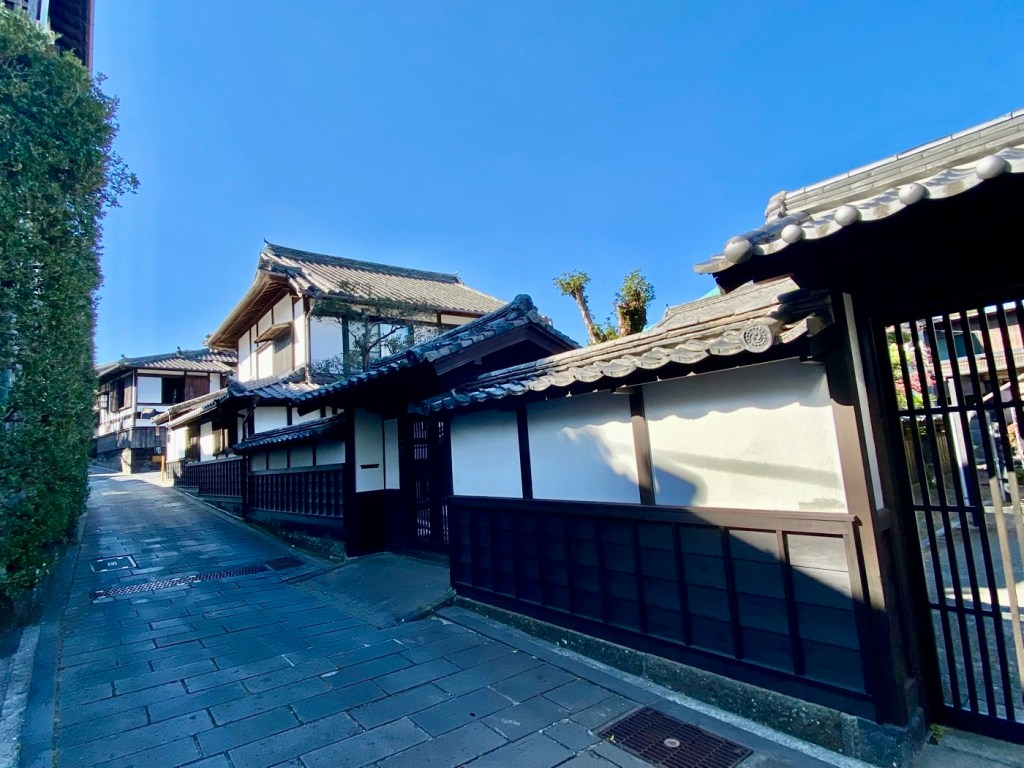
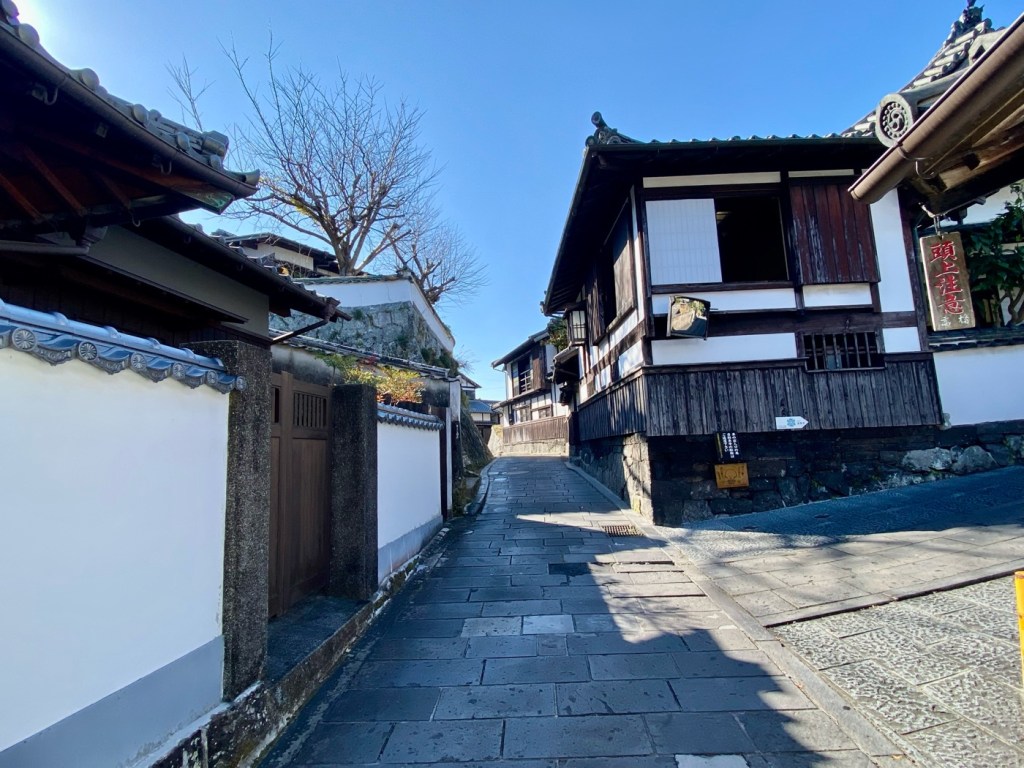
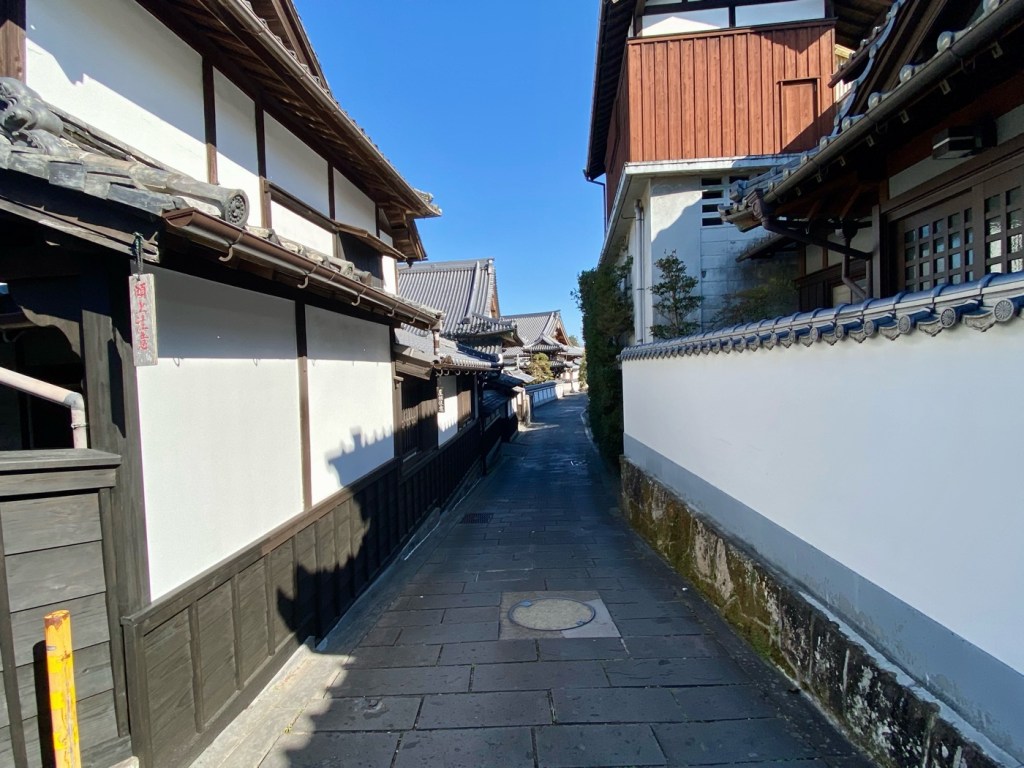
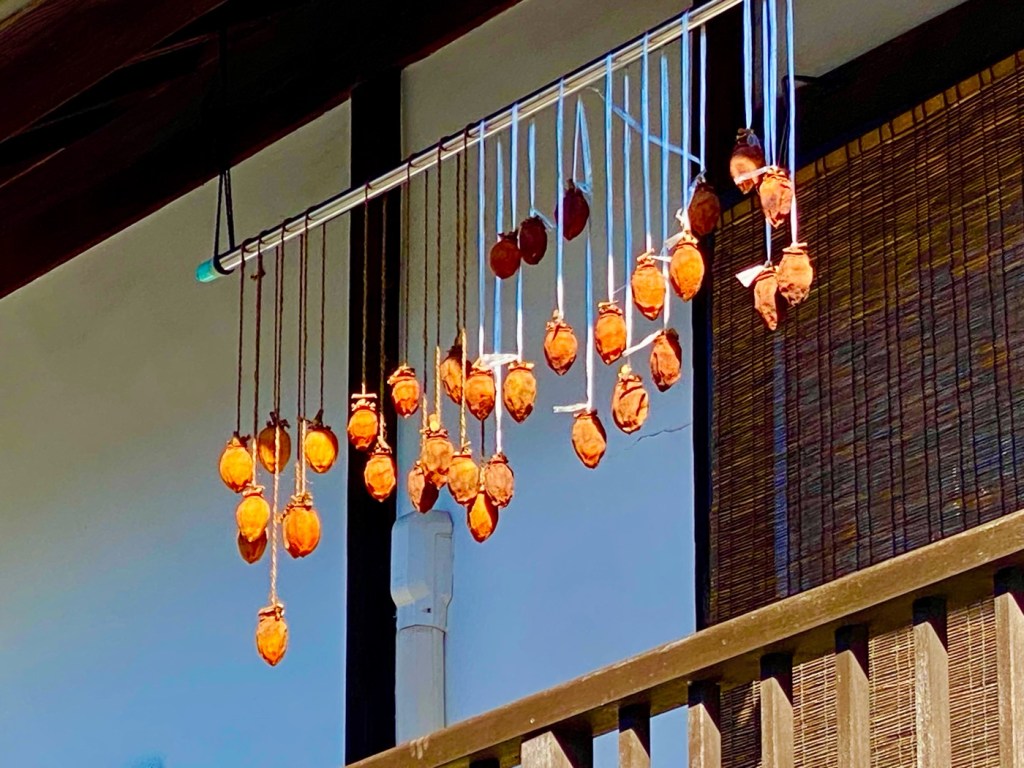
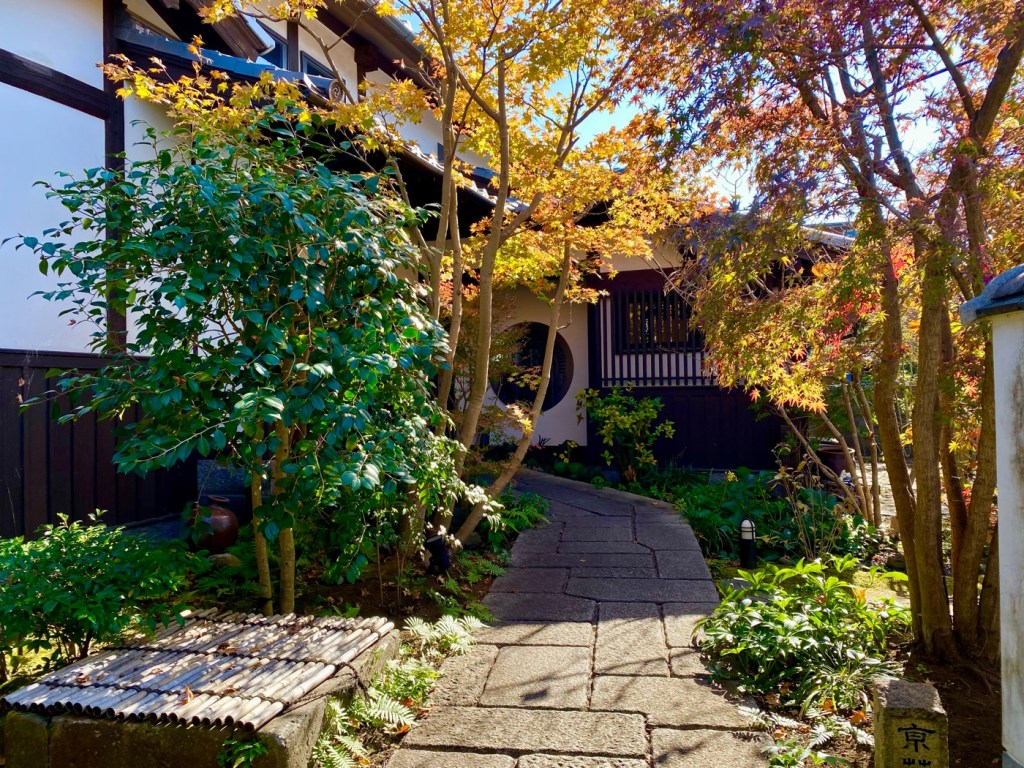
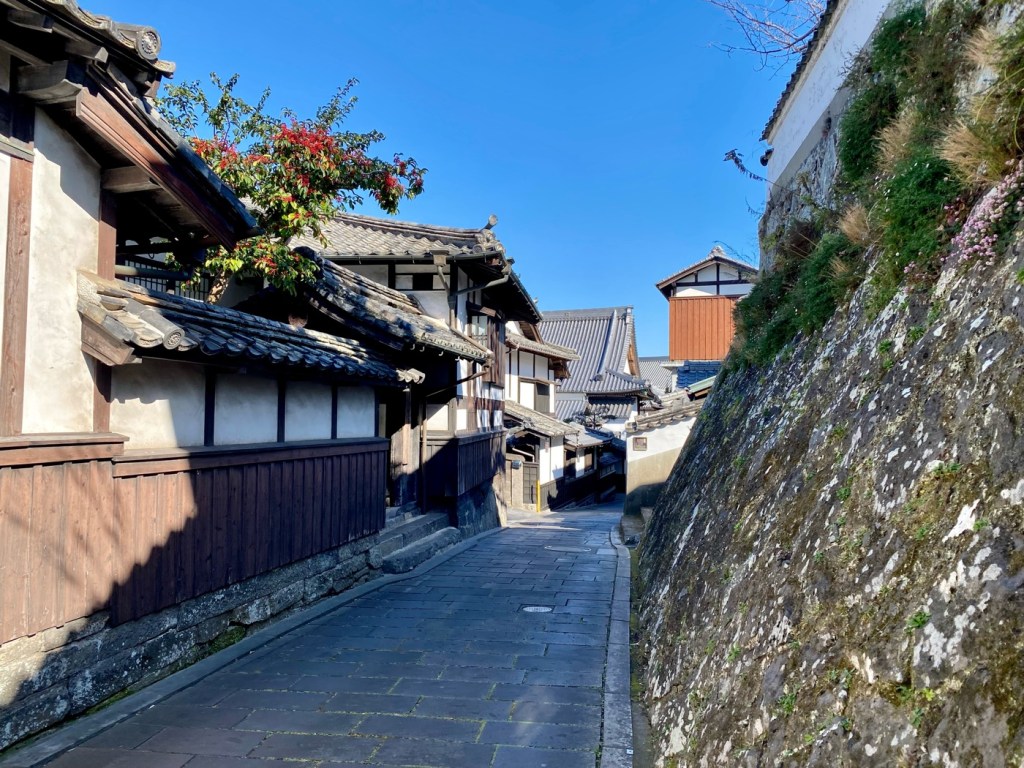
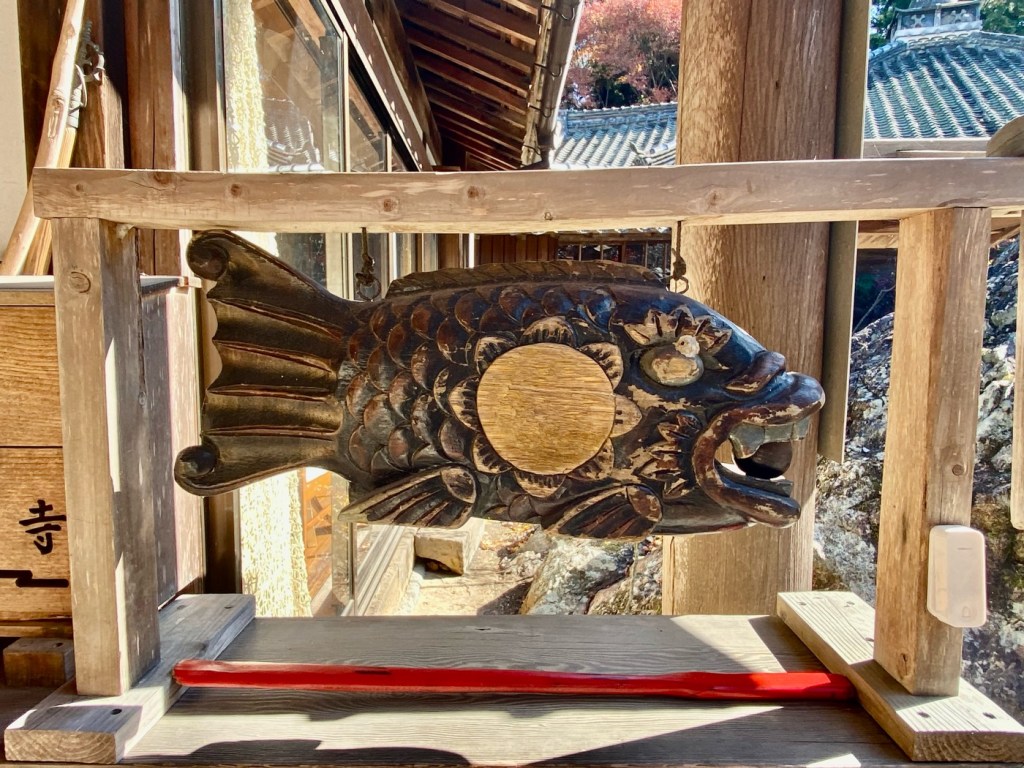
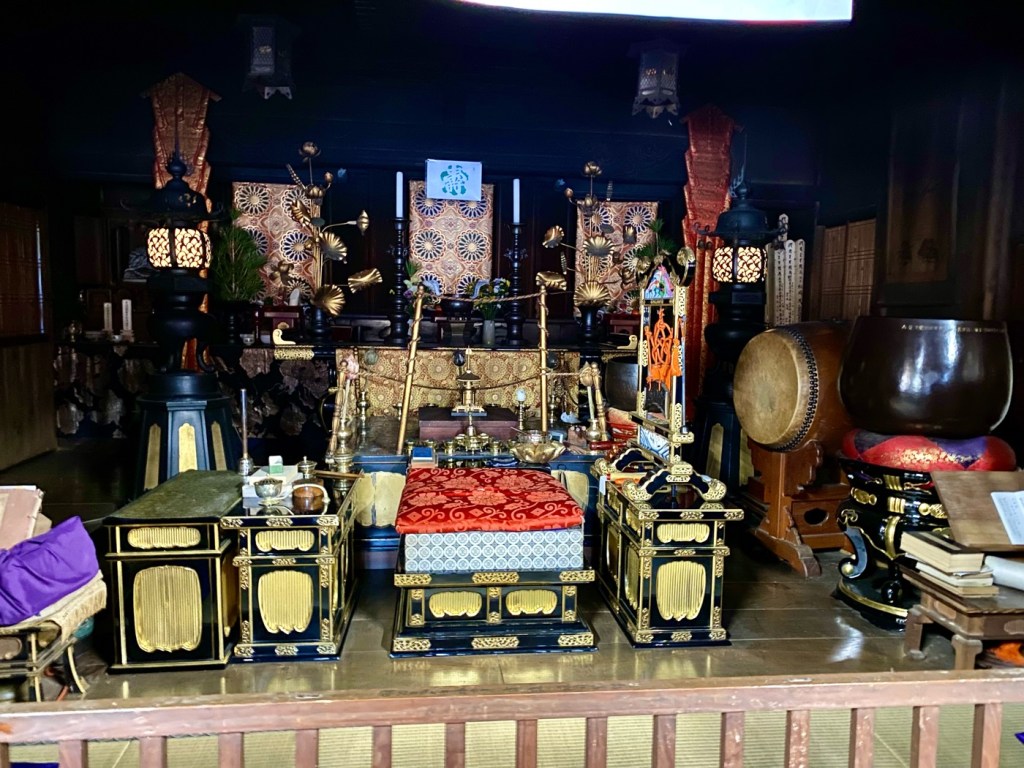
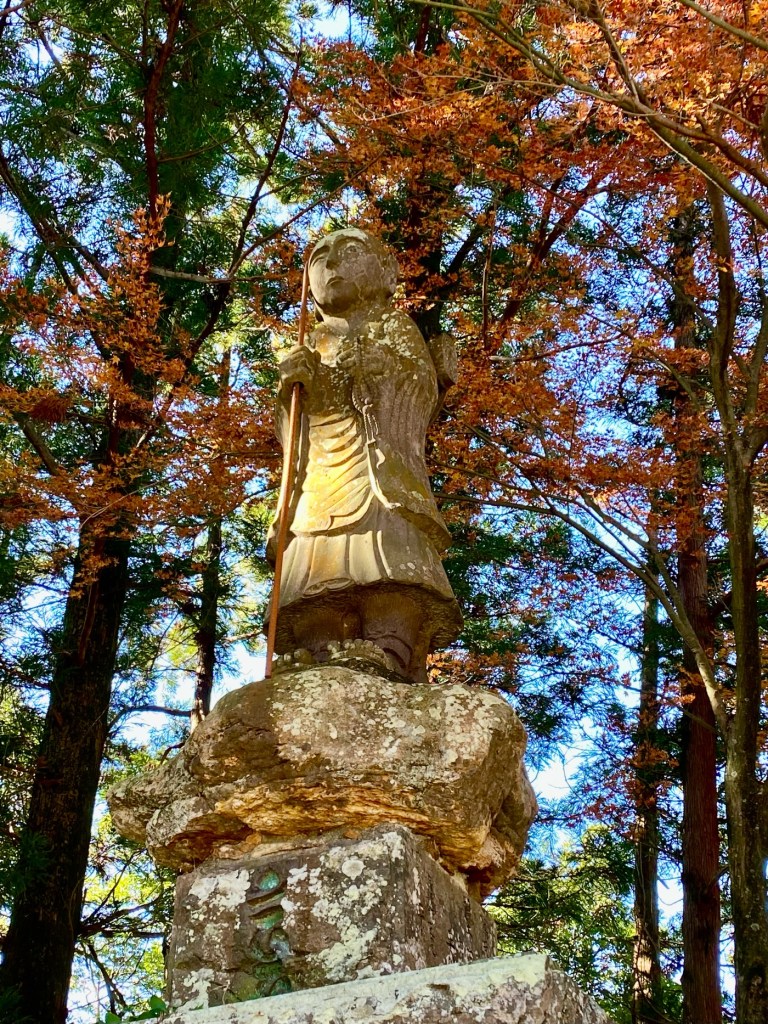
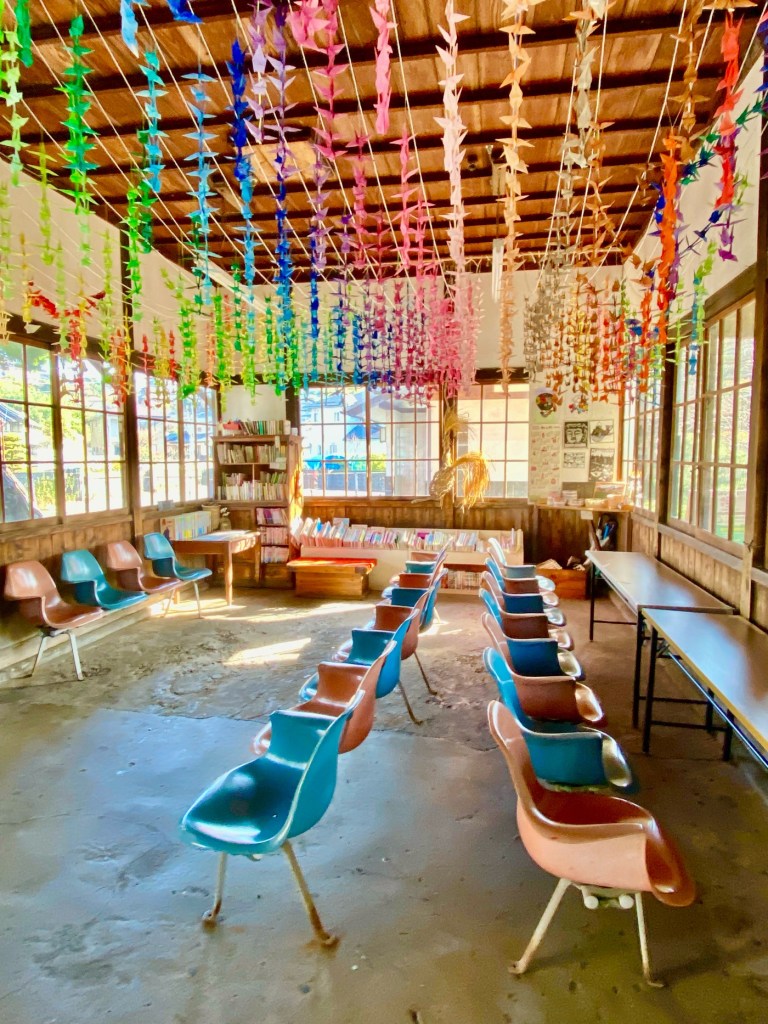
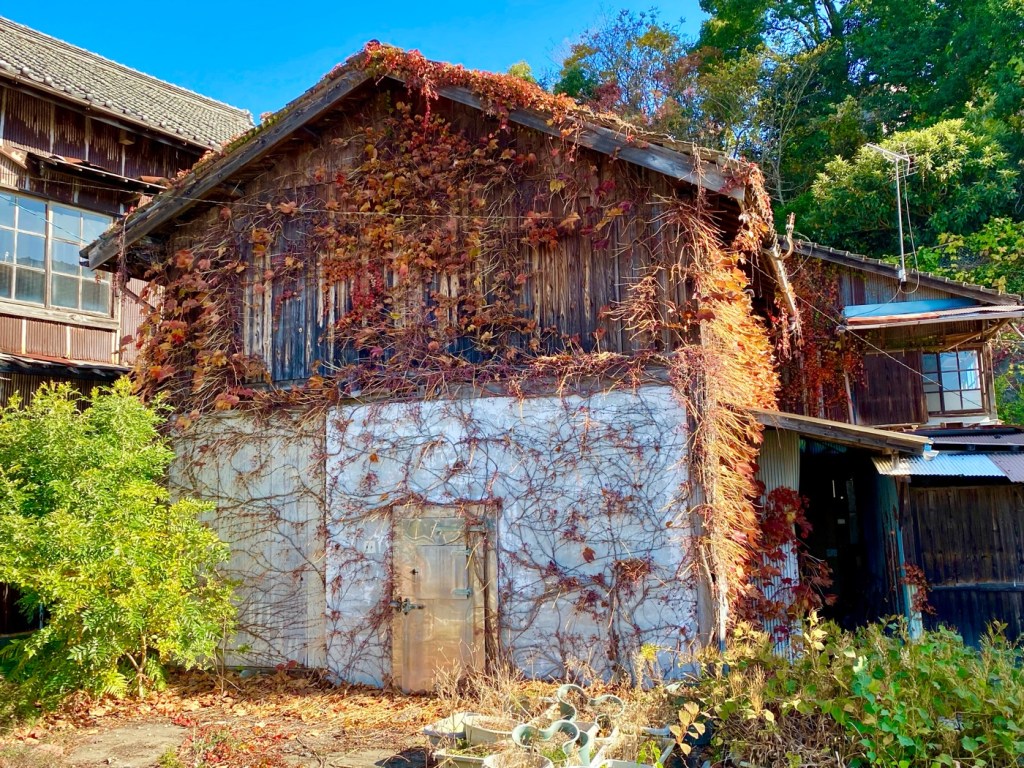
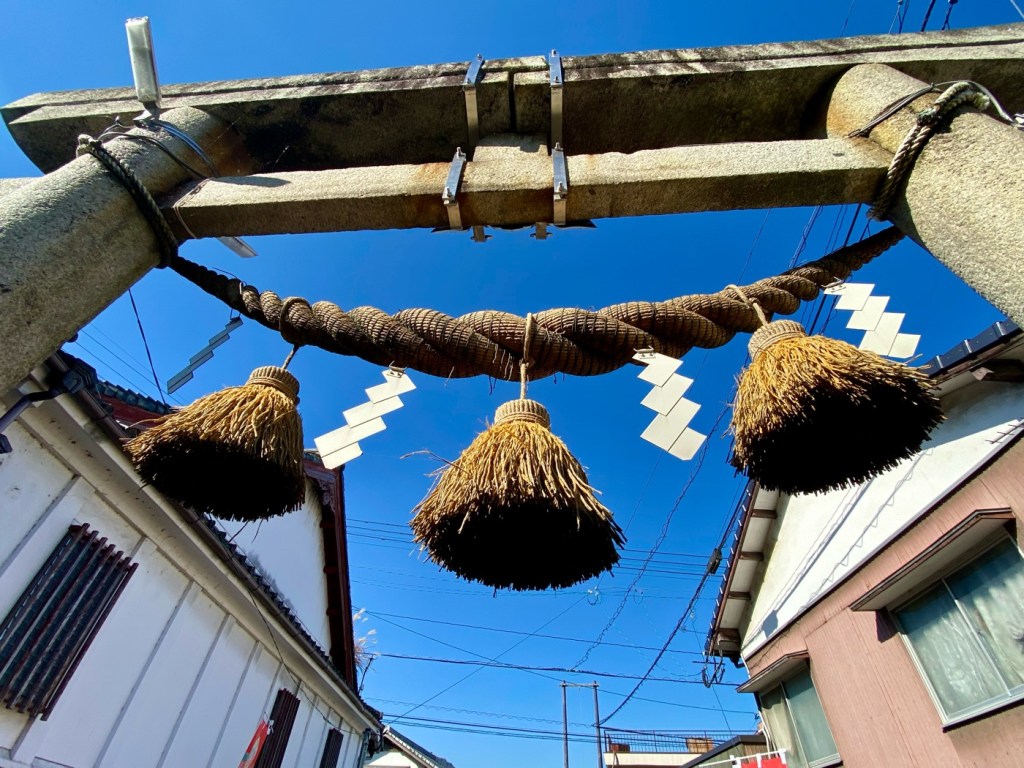
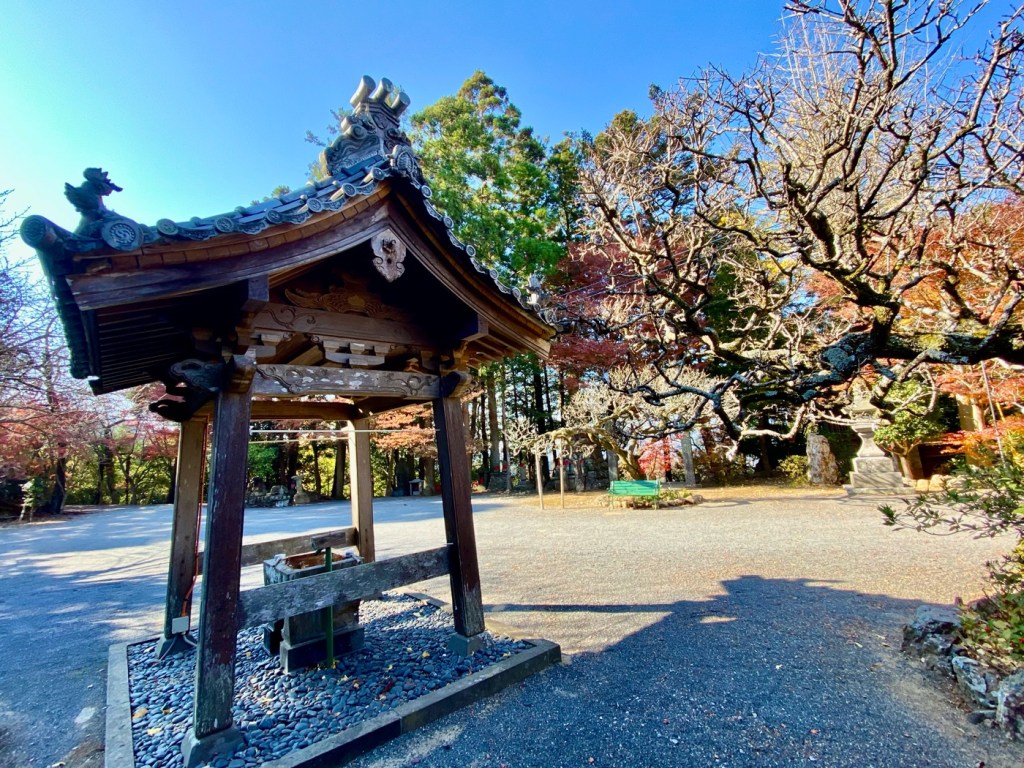

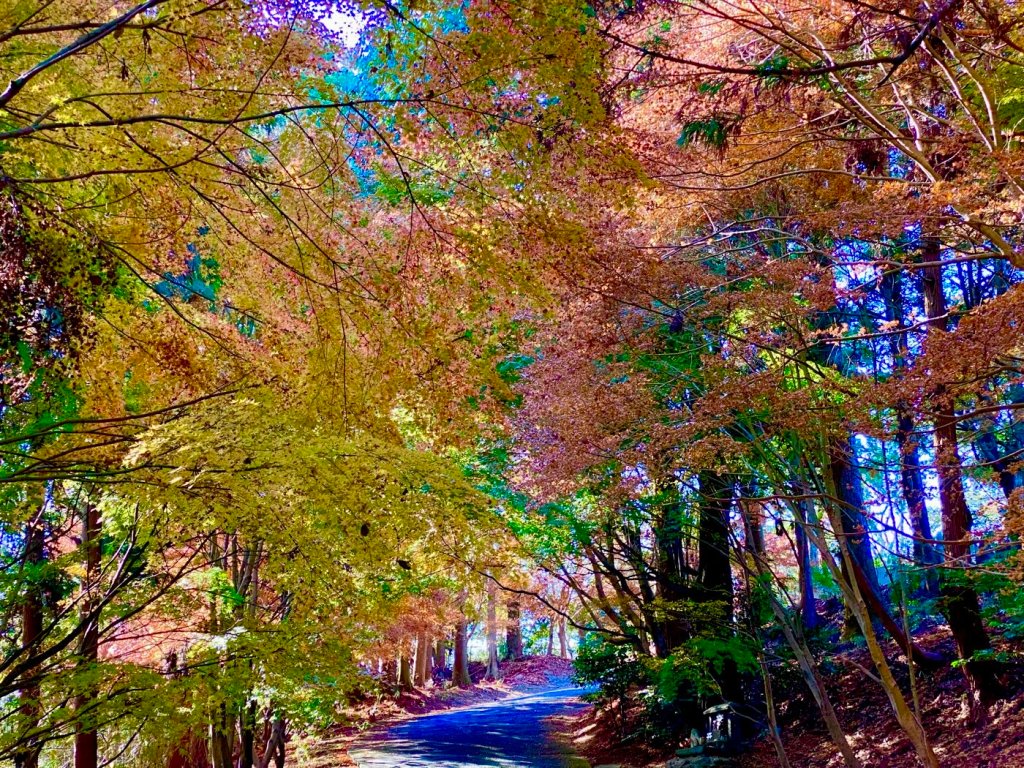
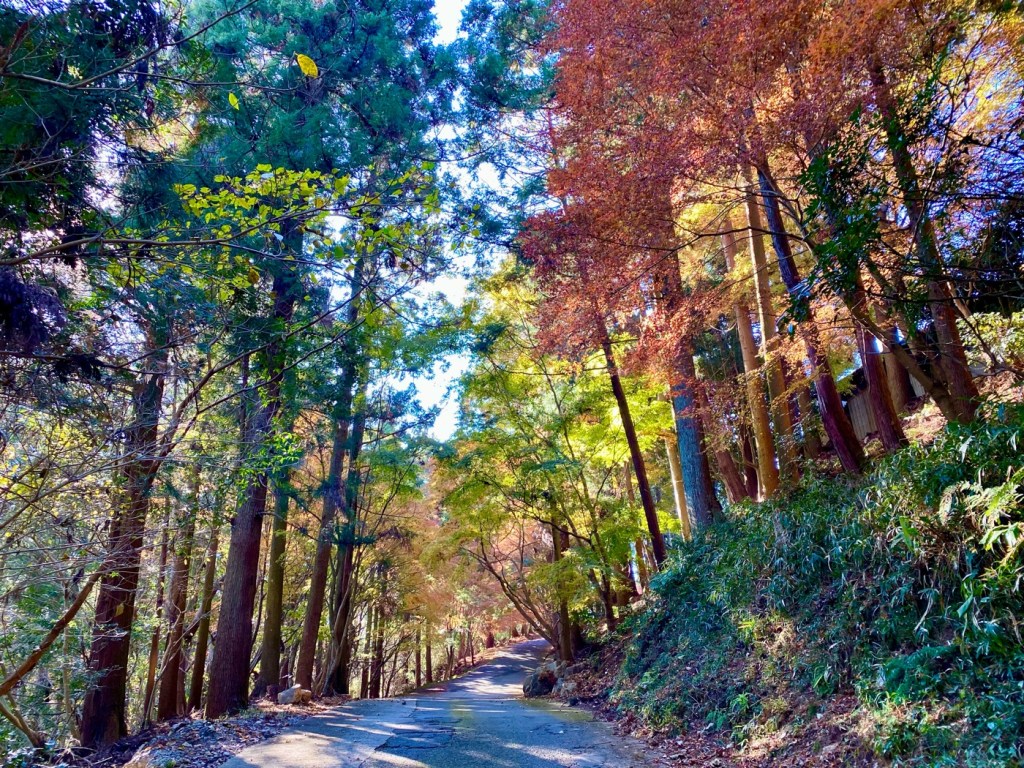
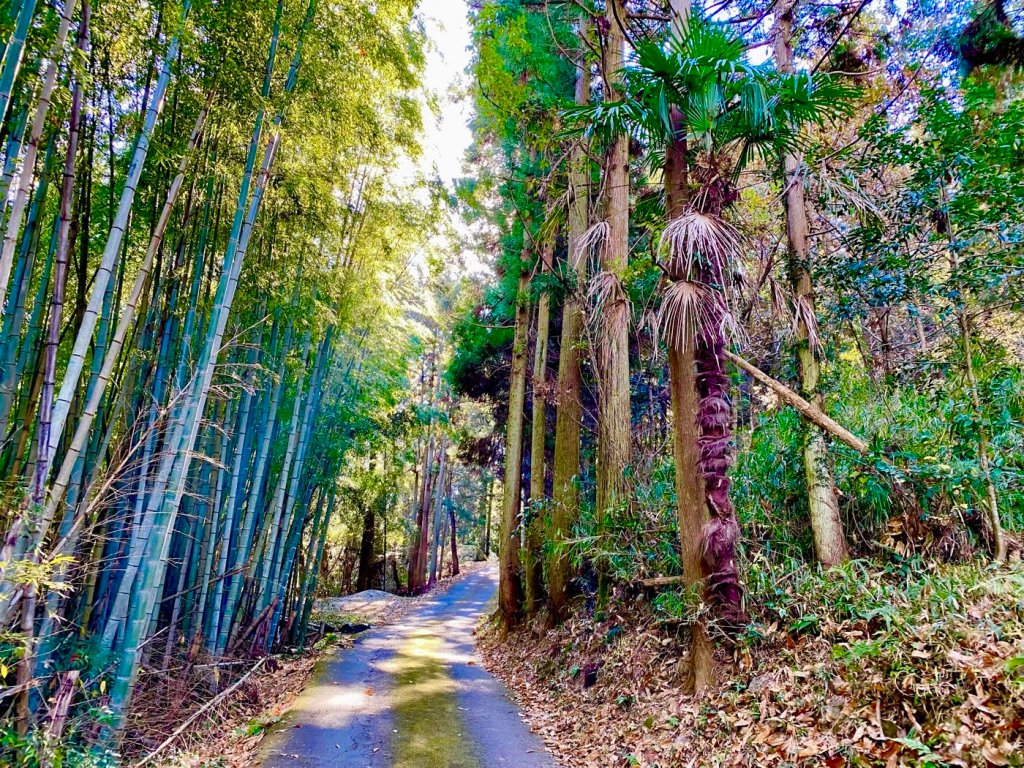
Day 71 - The Usuki Stone Buddha Statues, The Kyushu 108 Temple Pilgrimage, Japan
From the Cement Matchi in Tsukumi, where we had walked yesterday on the way to visiting temple #29, it was only a ten kilometer walk northwest to the town of Usuki.
In Usuki, we made our way to Temple #28, Koyasan Kozanji.
The temple is located in a forest, on top of a small mountain, overlooking the city of Usuki and the sea.
We are so used to climbing at this point in the pilgrimage, that we didn’t even notice the climb.
When we reached the summit of the mountain, we realized we had climbed up to the top.
The slopes of the mountain had many new and old marble and stone burial graves.
A smiling grandmother opened the door of the house attached to the temple, and invited us to pray in the main hall while she stamped our book and scroll.
She asked where was our car and seemed worried that we had come up on foot and were planning to walk down the mountain as well.
She offered to drive us to the city of Usuki.
We thanked her and declined.
The history of Kozan-ji Temple started on Mt. Koyasan, the location of the headquarters temple of the Shingon sect.
When a great fire had spread across the region due to a civil war, (known as Hideyoshi Toyotomi's attack), Mokui Ogi Shojin defended the mountain against the fire.
In later years, Ogi Shojin founded Seigan-ji Temple and Kozan-ji Temple as the central temples on the mountain, and added various halls.
During the Meiji period, Kozan-ji Temple was annexed with Seigan-ji Temple and came to be called Kongomine-ji Temple.
Yamagata Genjo Sojo, moved Kozan-ji Temple to Usuki with the cooperation of the Inaba clan.
The main hall and Kuri are lined up in the back of the precinct.
Kuri was a term that meant “The warehouse in the back”.
It actually meant ‘a kitchen’.
Historically the Kuri was a kitchen which prepared meals only for the abbot and his guests.
The principal image enshrined in the main hall is the healing Yakushi Nyorai Buddha, but it cannot be worshipped directly, because it is a hidden Buddha that is only shown once a year.
There were many stone Buddhas scattered around the precincts and the garden was beautiful.
After thanking the lady and her sweet grandson for giving us cookies, we walked down to Usuki town.
In prior years, we had already visited the famous Usuki Stone Buddhas, but we have never seen the city of Usuki and its historic district.
The Nioza Historical Road is lined with Buddhist temples and beautiful historic Samurai homes.
The Nioza, which leads to the Usuki Castle, is located on a hill made of tuff, a hardened volcanic ash that was created by eruptions of Mount Aso.
The road was created by shaving away the rocks in some places. The beauty of the old castle town remains in evidence as you stroll along the narrow alleyways off the main road.
There are rows of high-class samurai residences, and a multitude of temple complexes, each with its unique entrance and roof lines.
Around 20,000 bamboo lanterns line the stone-paved streets during Usuki Takeyoi, a festival held in early November each year.
We had a fabulous organic veg lunch in a small restaurant run by a husband and wife.
It was very reasonably priced and had a variety of home cooked small vegetable dishes.
After lunch, we bought stone roasted sweet potatoes, to take with us to eat for dinner.
Our timing was good, so we decided to walk over to see the Usuki Stone Buddhas again.
We knew they had not changed since we last saw them over ten years ago, but we have changed, and we would see them with new eyes today.
The stone Buddhas are located in caves, on a beautiful hillside.
There is a small entry fee and good descriptions before each cluster of statues.
They were really awesome to see again.
We did not know it before, but there are other, less famous stone Buddhas carved into cliffs and rocks in this region of Kyushu.
The Usuki Stone Buddhas are the most impressive and best preserved.
The statues were carved from hardened volcanic ash.
They are designated as a national treasure, becoming the first stone Buddhas nationwide and the first Kyushu sculptures to receive that distinction.
It is believed that they were created during the Heian (794-1185) and Kamakura (1185-1333) periods.
However, it is unknown who made them or for what purpose. Much about these stone Buddhas still remains a mystery.
We chanted the Hanya Shingyo Heart Sutra in front of the biggest cluster of Buddhas, and attracted many bows and compliments from the Japanese visitors.
Across from the stone Buddhas stands the Mangatsu Temple. In front of the temple there are two stone Nio Guardians.
The Deva Nio Guardians are buried knee-deep in the earth.
Yet they have a powerful presence and a humorous expression on their faces.
By the temple’s entrance there is a small shop.
A friendly woman cooks and sells donuts made from sweet potatoes.
She also dries persimmons and daikons, by hanging them on strings in front of her shop.
We bought a bag of her donuts, and later regretted not buying more.
They were very delicious.
We sat and drank our tea on a bench by the temple, looking at people planting flowers and weeding the vast gardens.
On our walk back to Usuki town to catch the train, we saw the hotel we had booked for tomorrow night.
It did not look good, just another business hotel in an inconvenient location.
It was nearly three kilometers from the nearest train station, which we would have to walk twice, once when we checked in, and the second time when we checked out.
Tomorrow’s weather forecast calls for rain all day, so walking in the rain with our backpacks was not a heartwarming thought.
On the way back to our hotel in Saiki, I thought that we should cancel our stay in Usuki, and book instead a hotel in Oita City, where we needed to go anyway.
In our hotel in Saiki, we ate the roasted sweet potatoes and tiny donuts we had bought that day, with some tea.
It was very nice.
We made a new hotel booking in Oita.
With love and blessings,
Tali
Stats: 22,021 steps
Today’s walk: 15.5 km
Kilometers walked to date: 1200 km
Temples visited:
Temple #28 Koyasan Kozanji in Usuki
The Usuki Stone Buddha Statues.